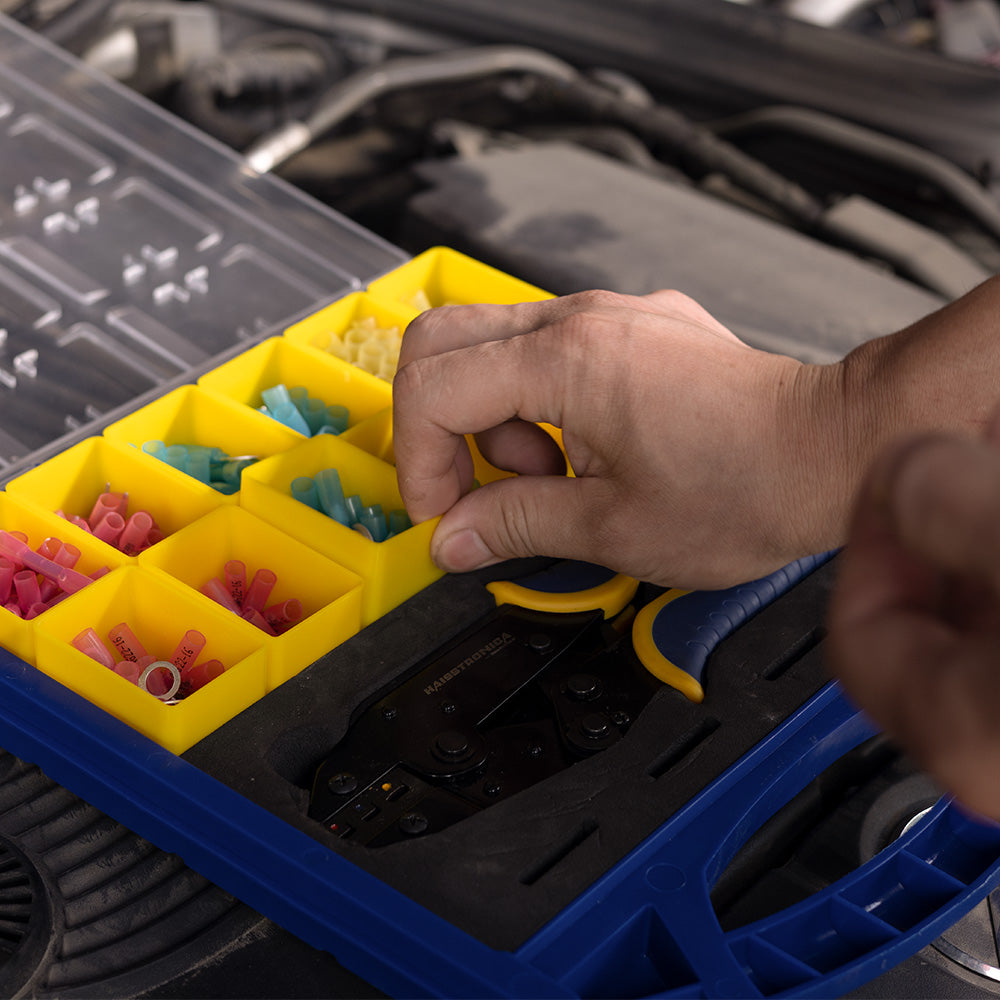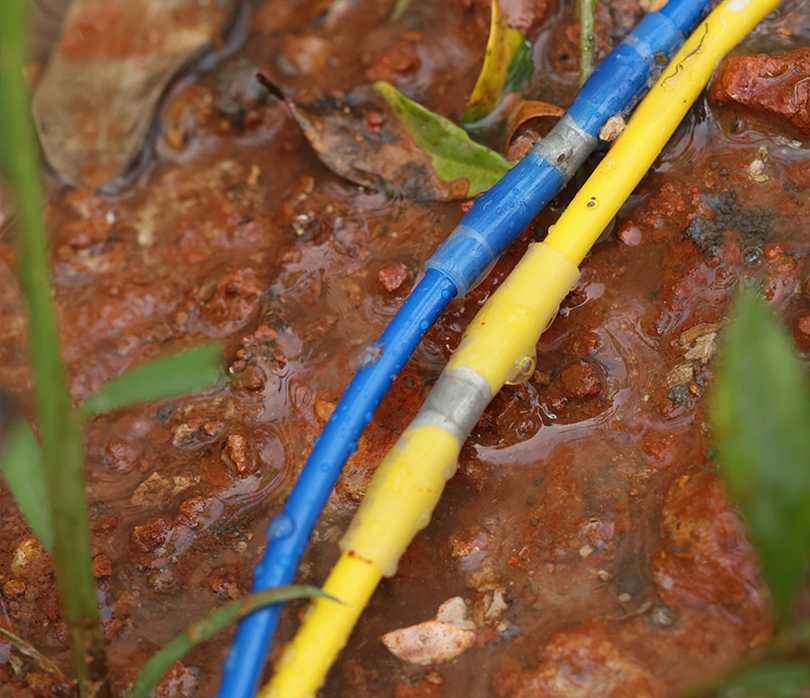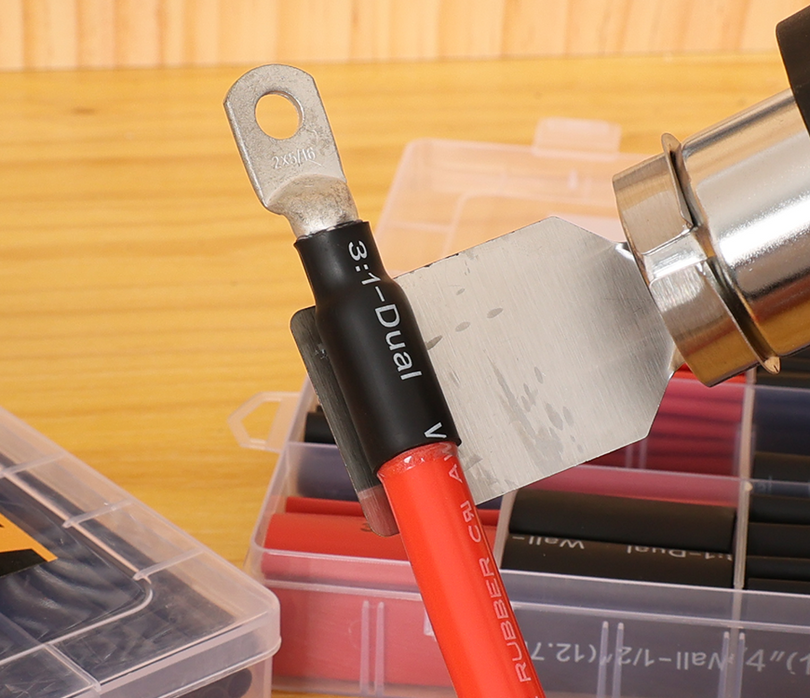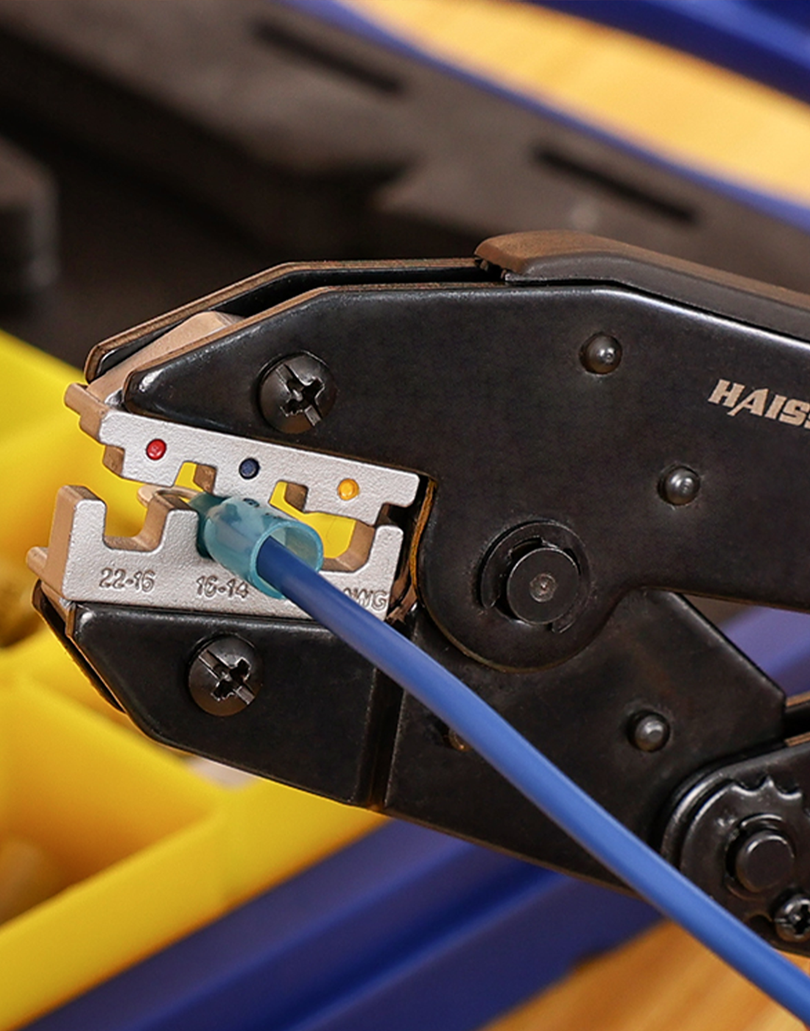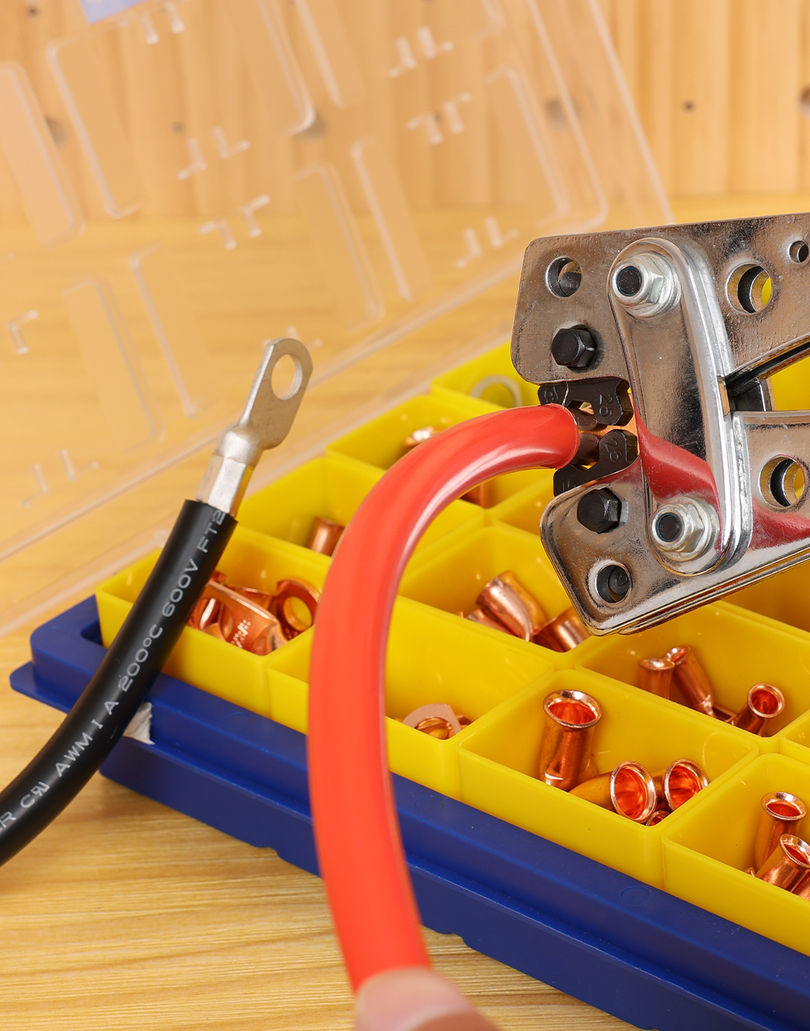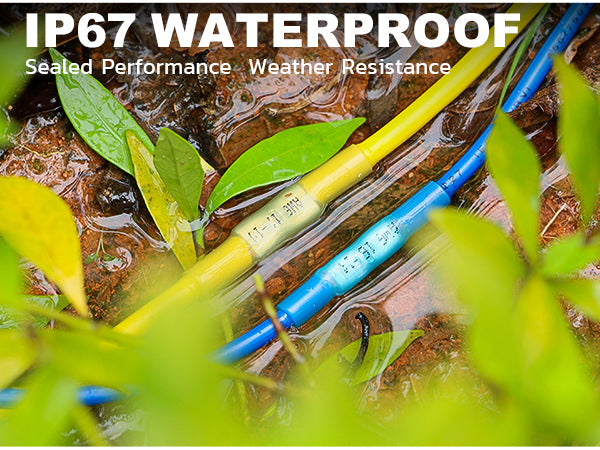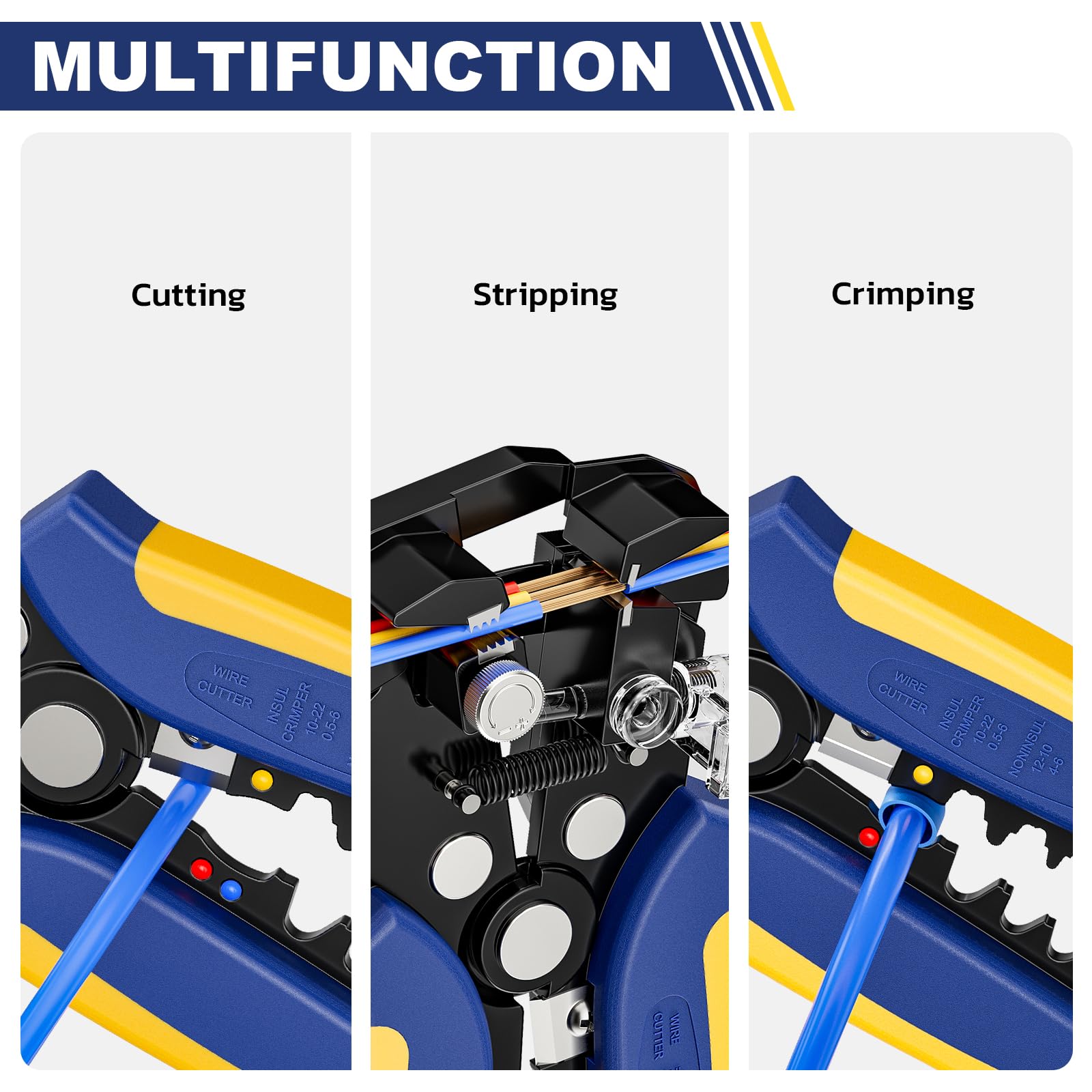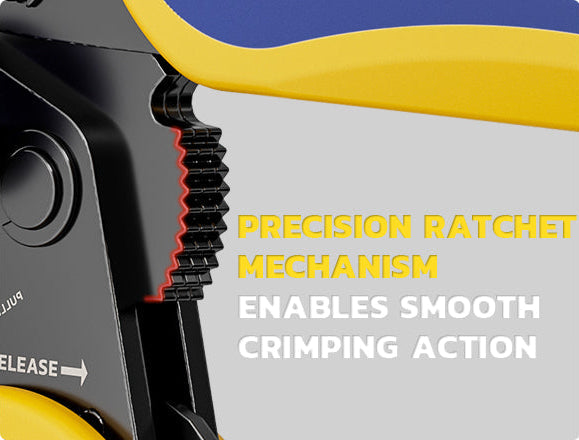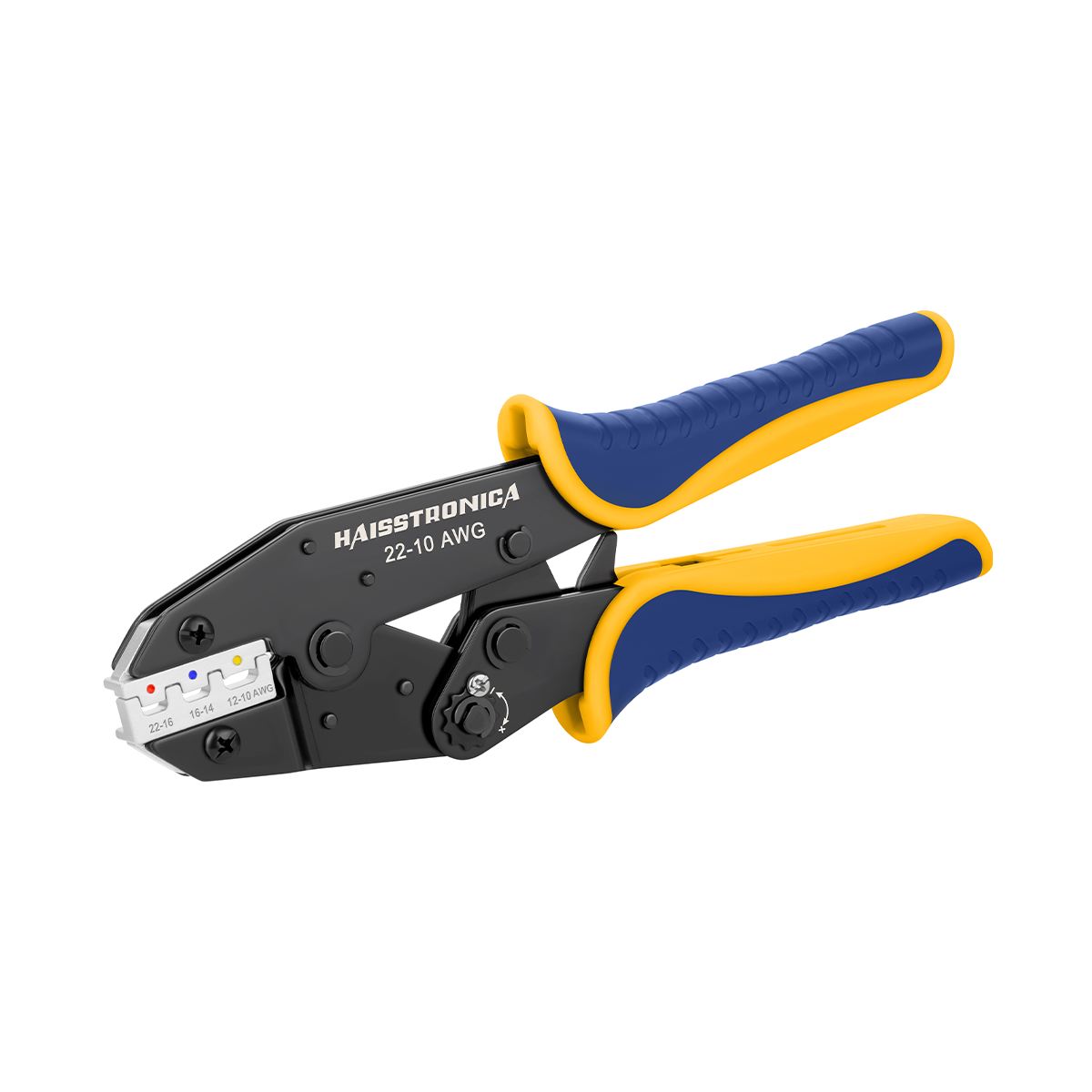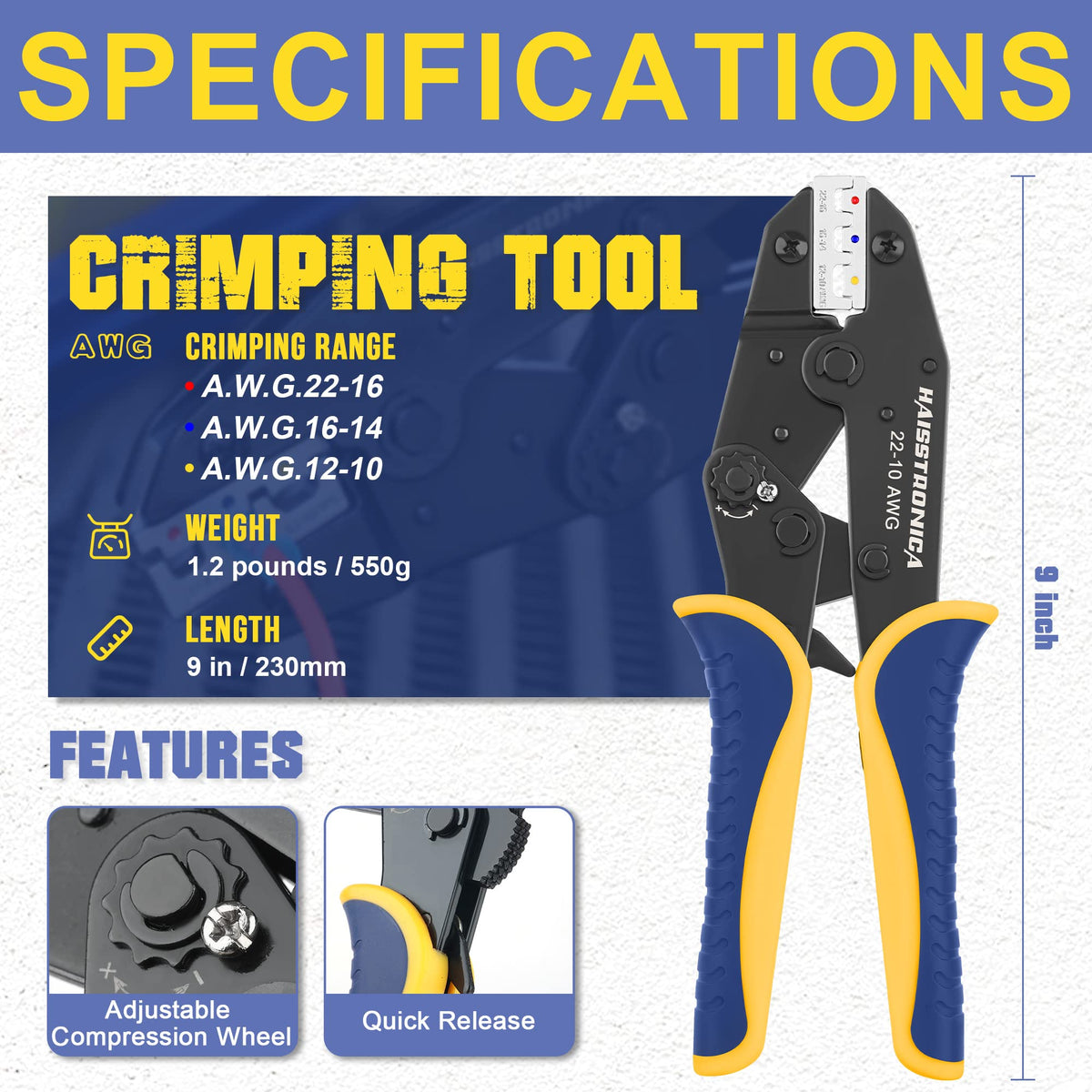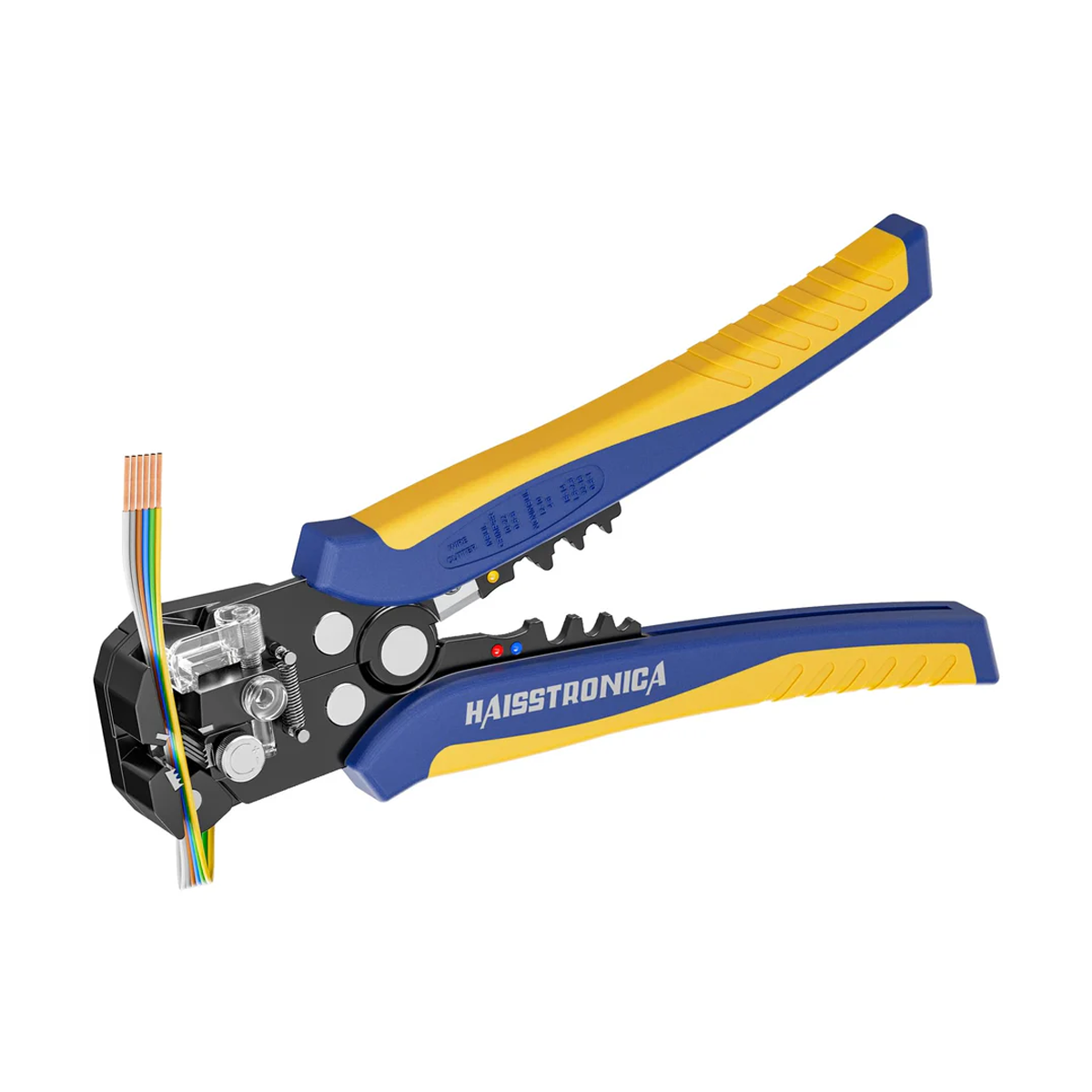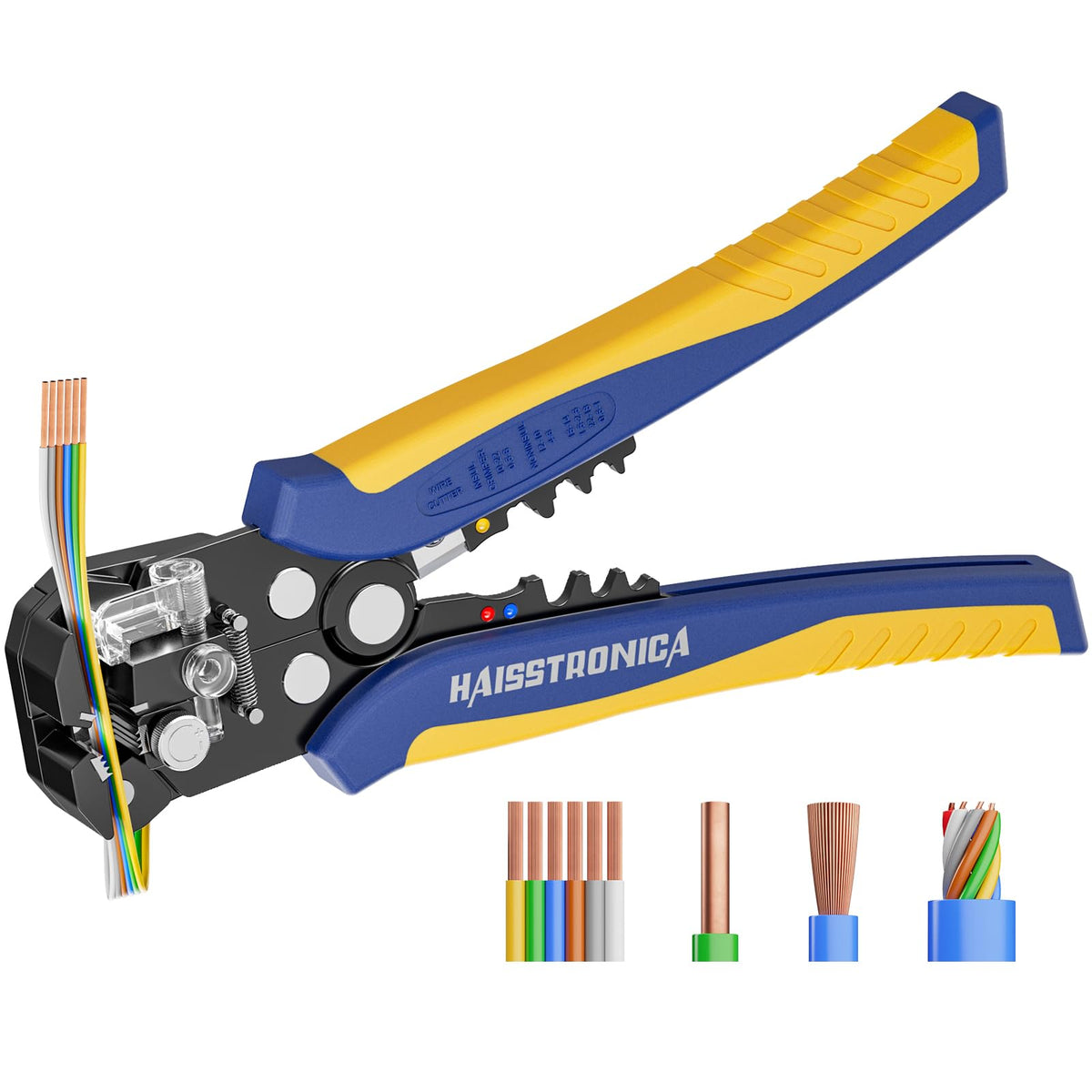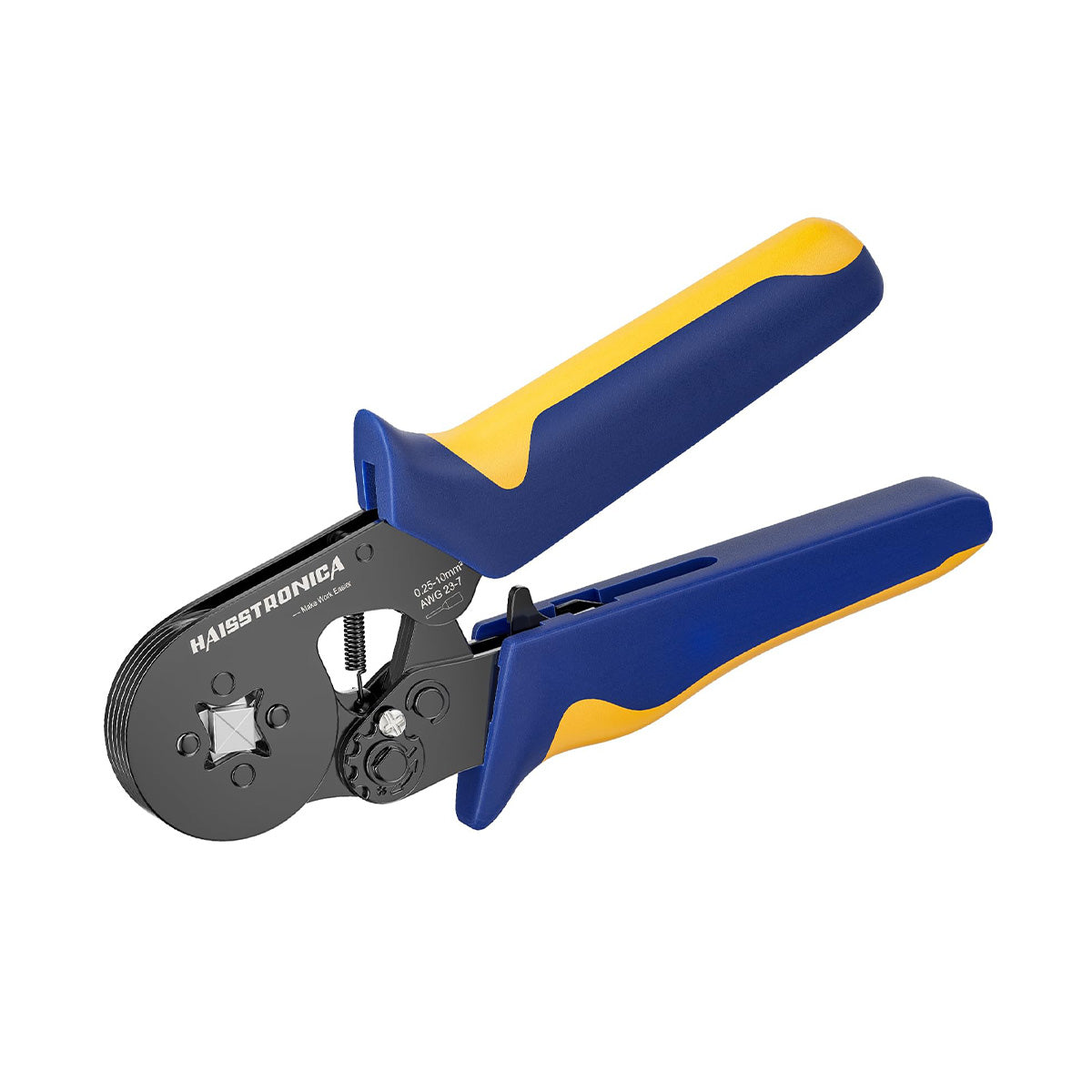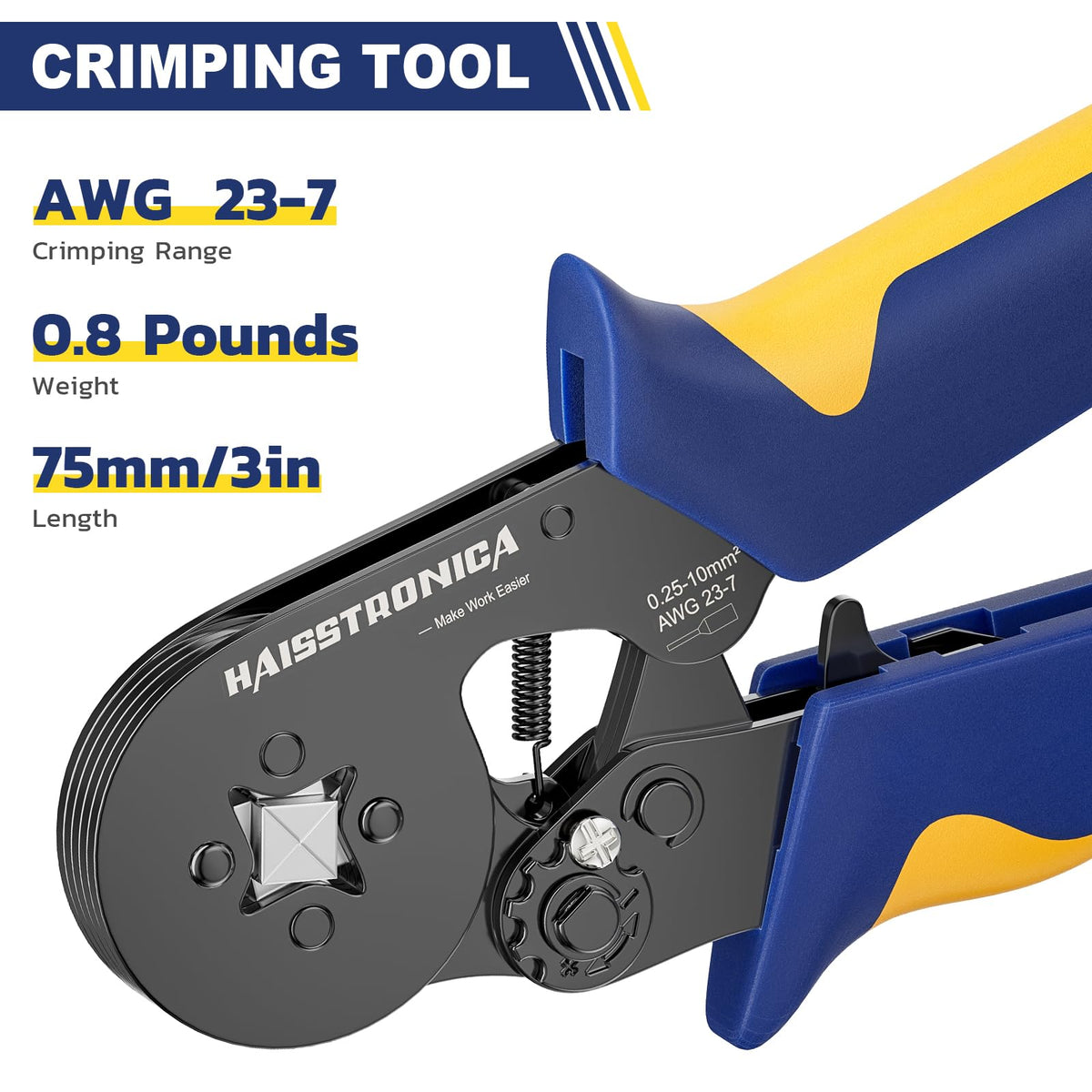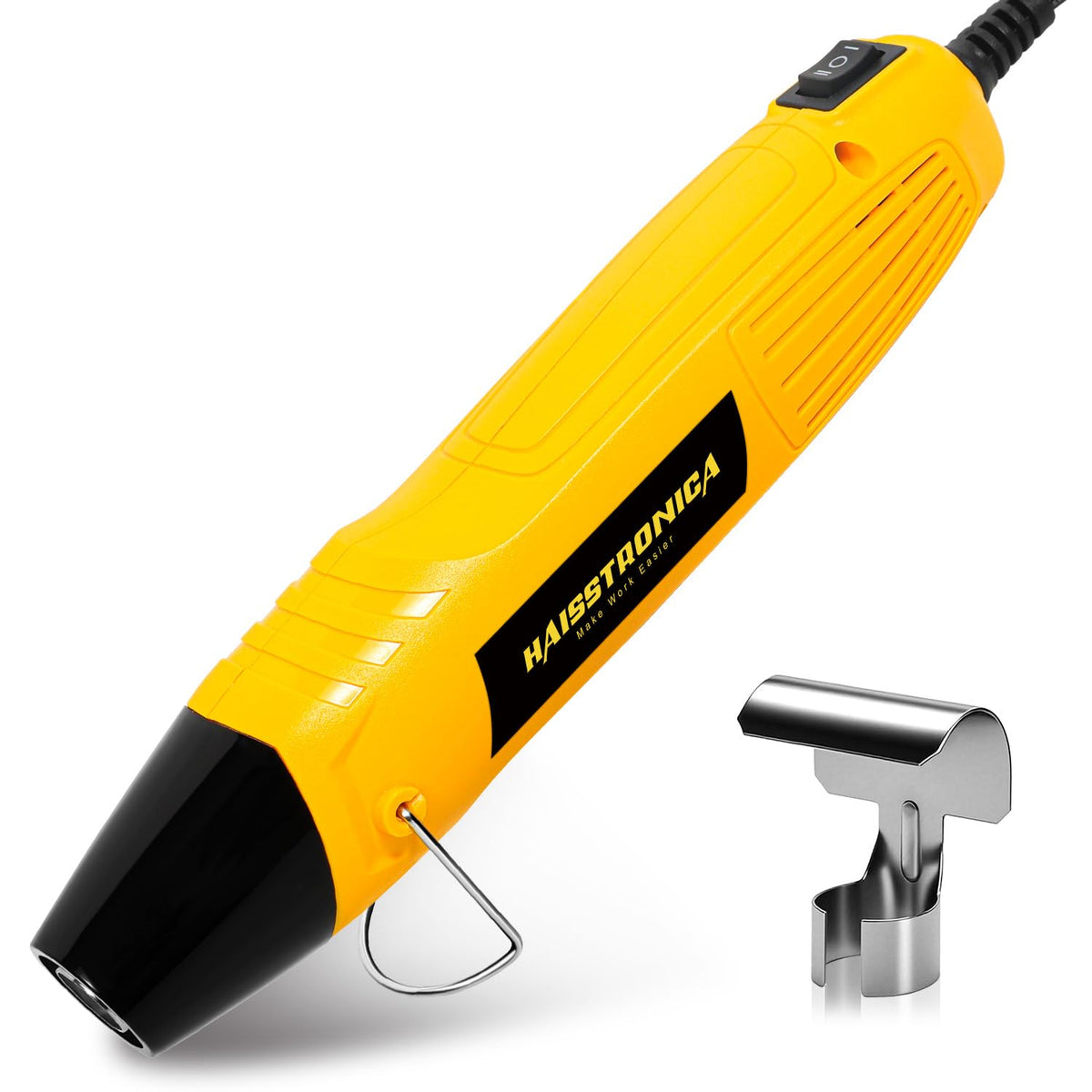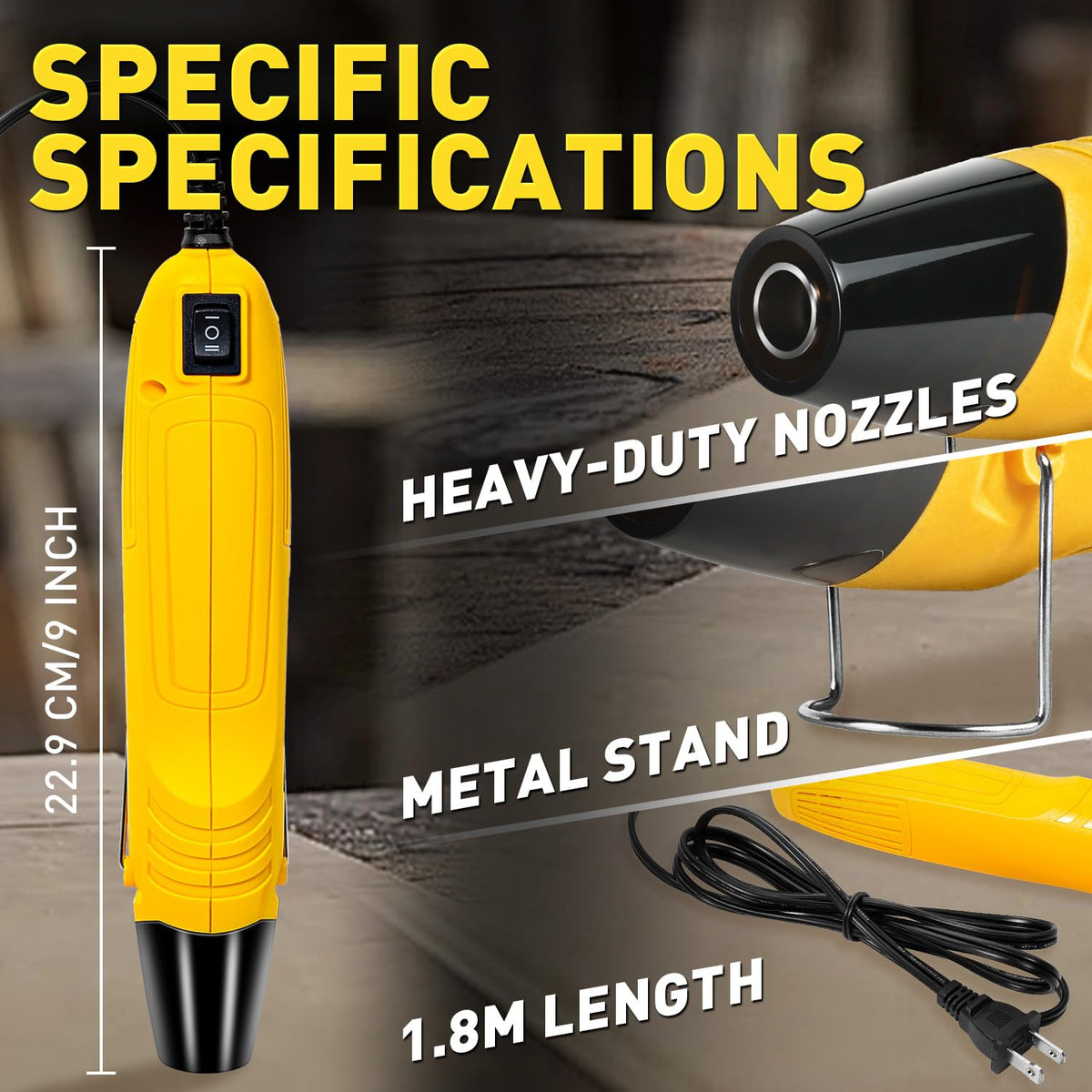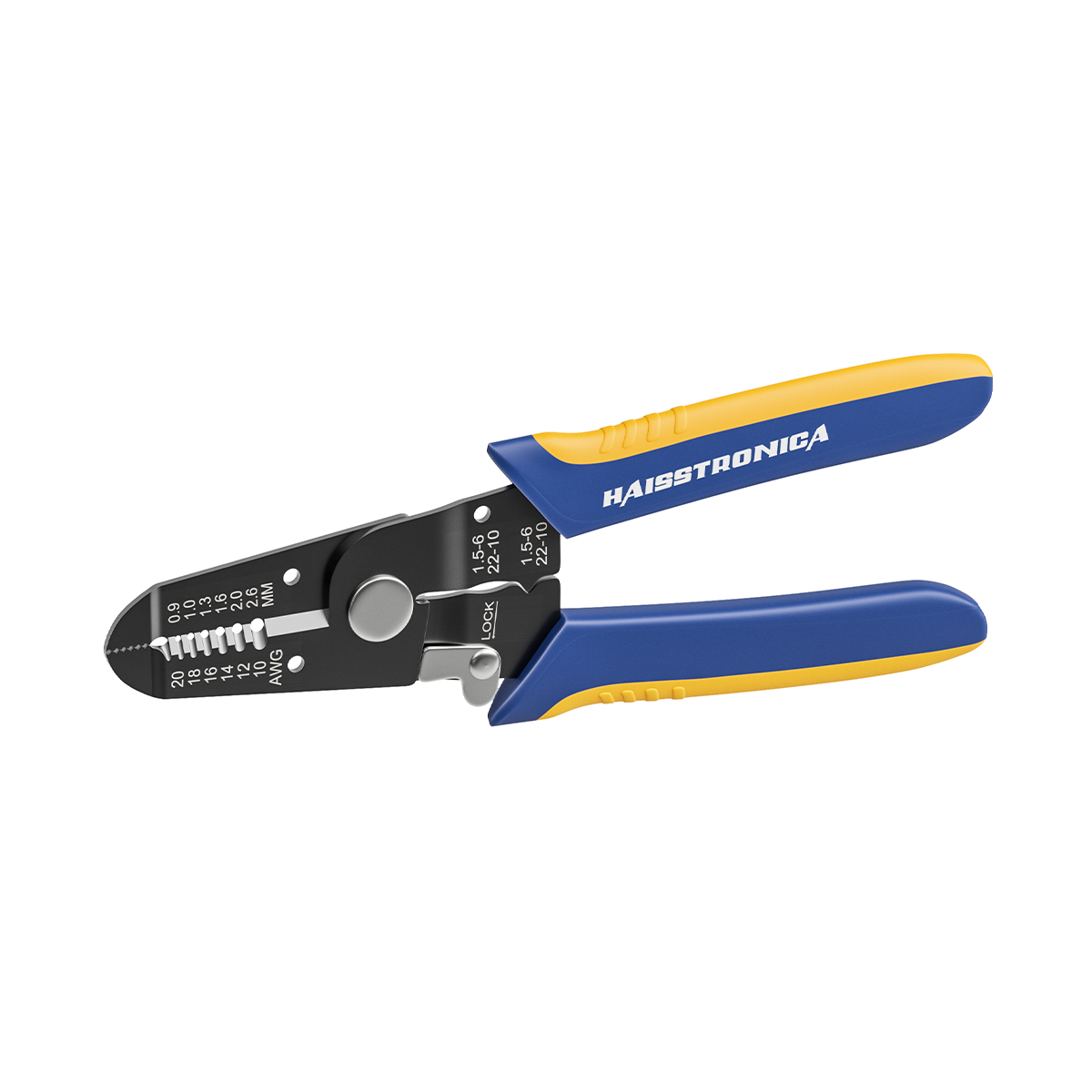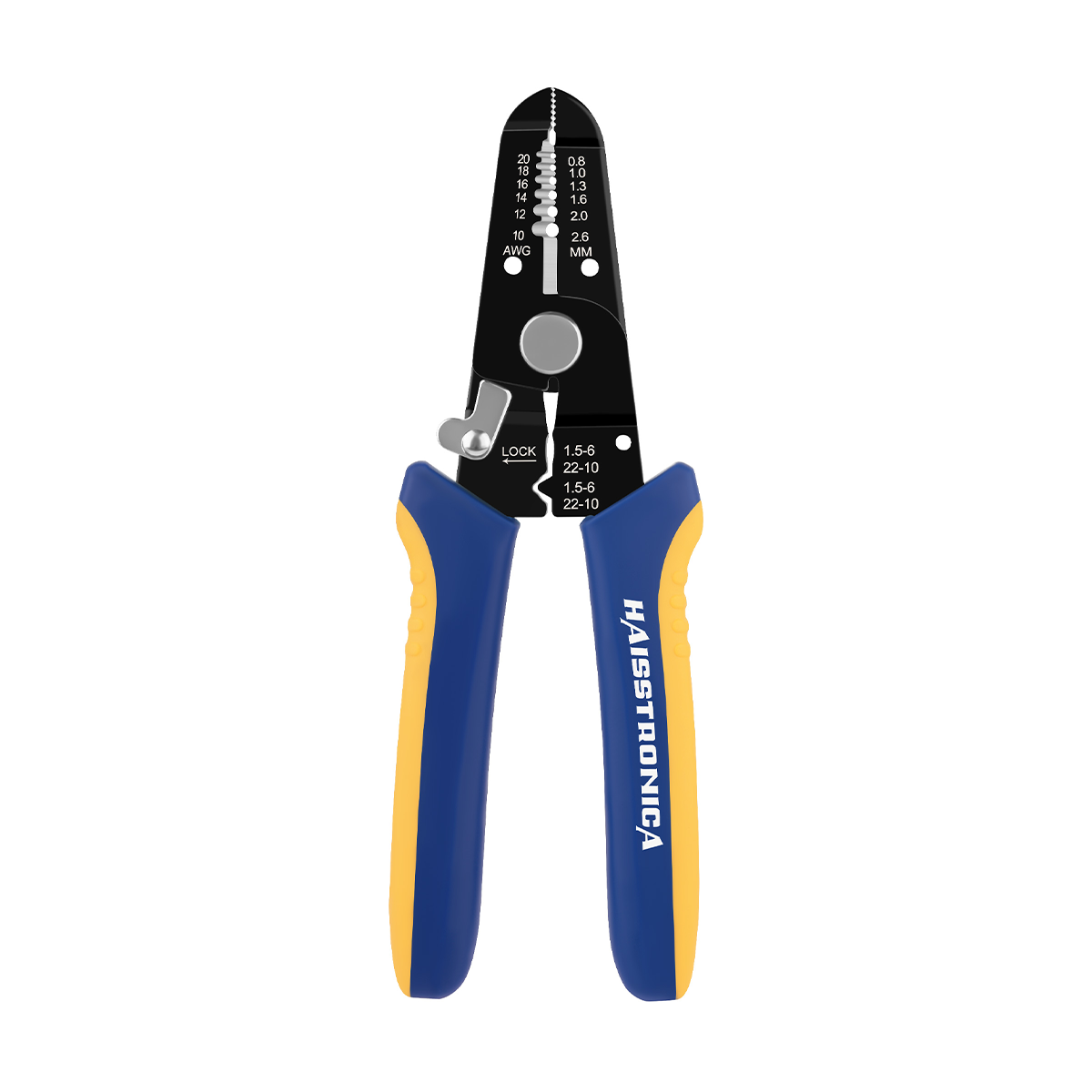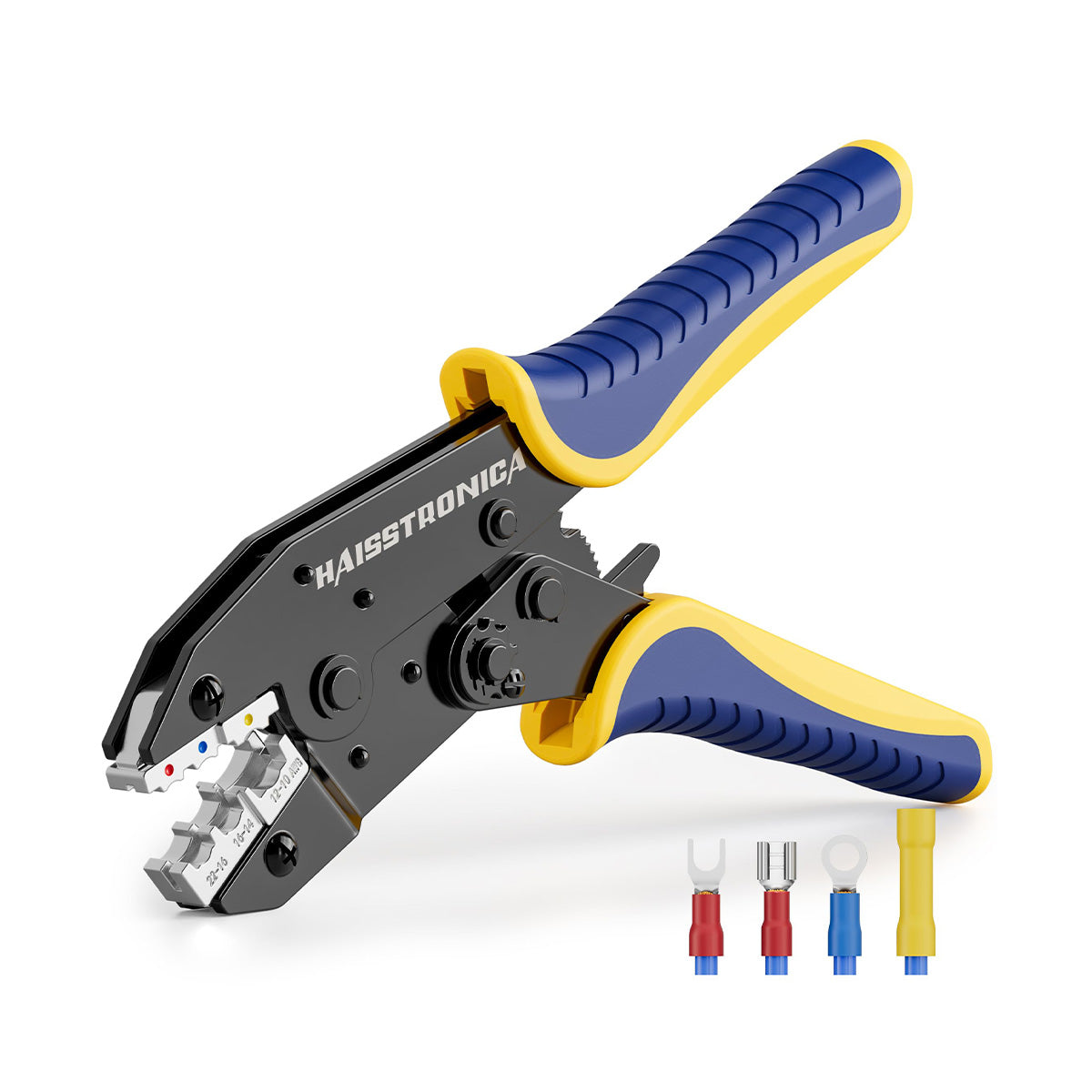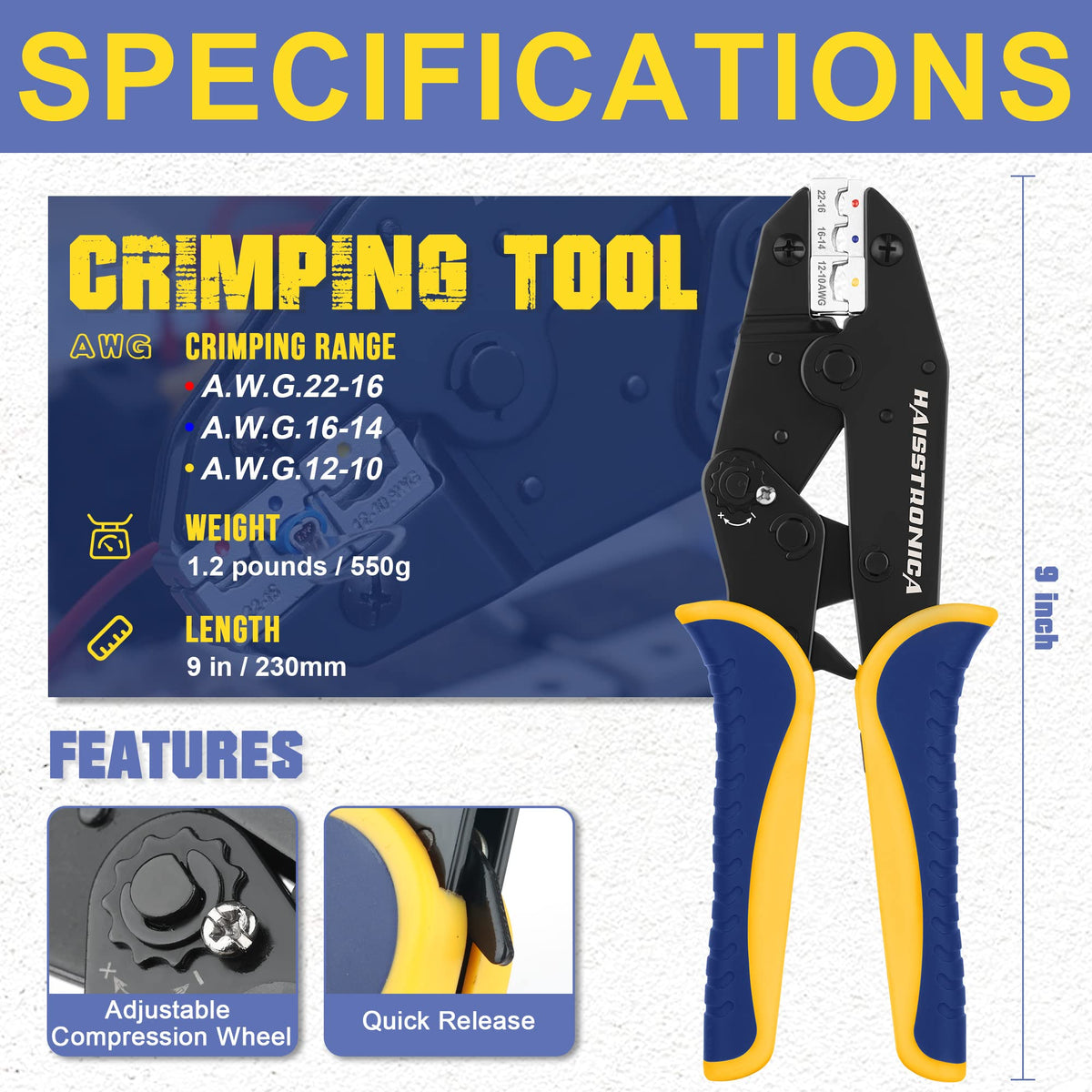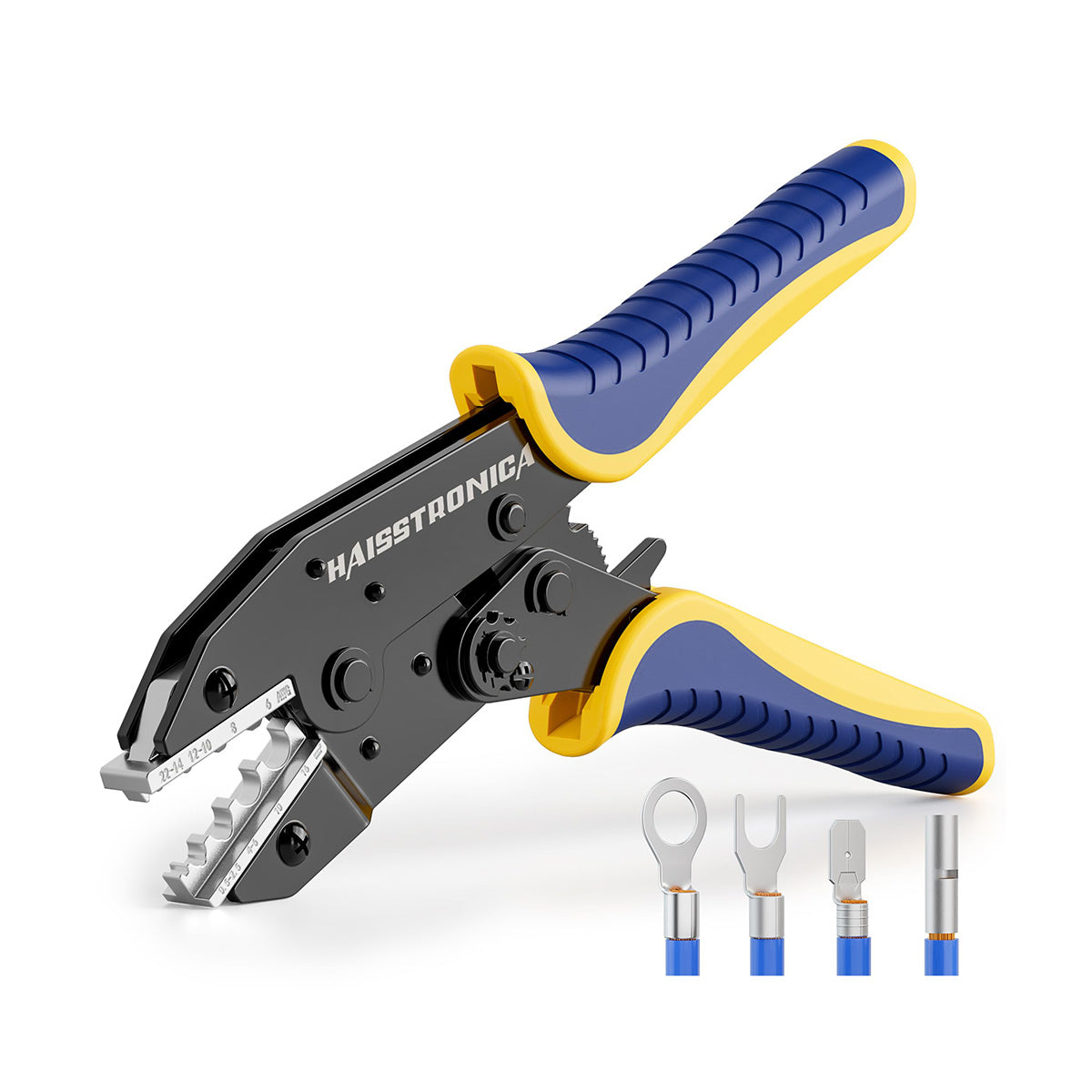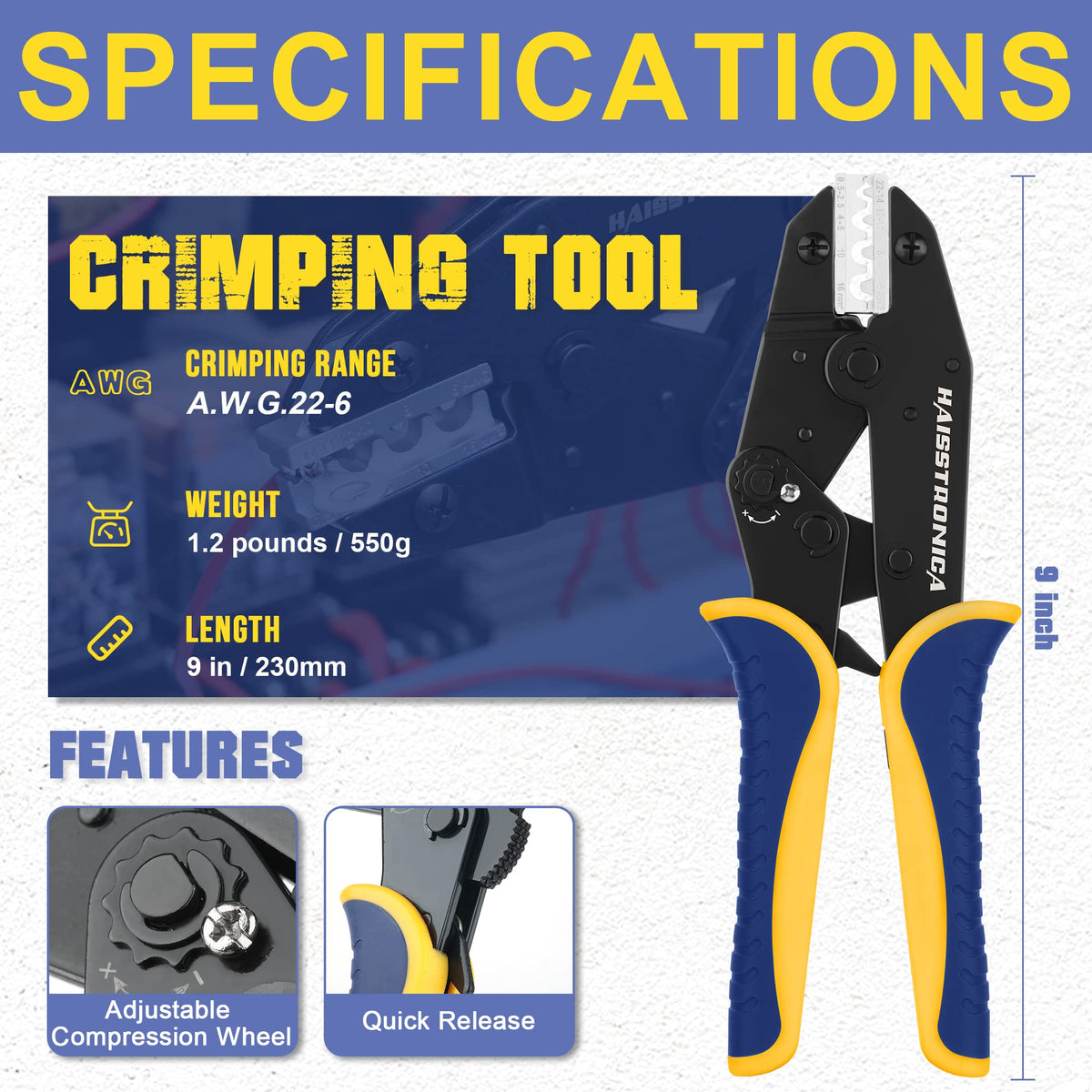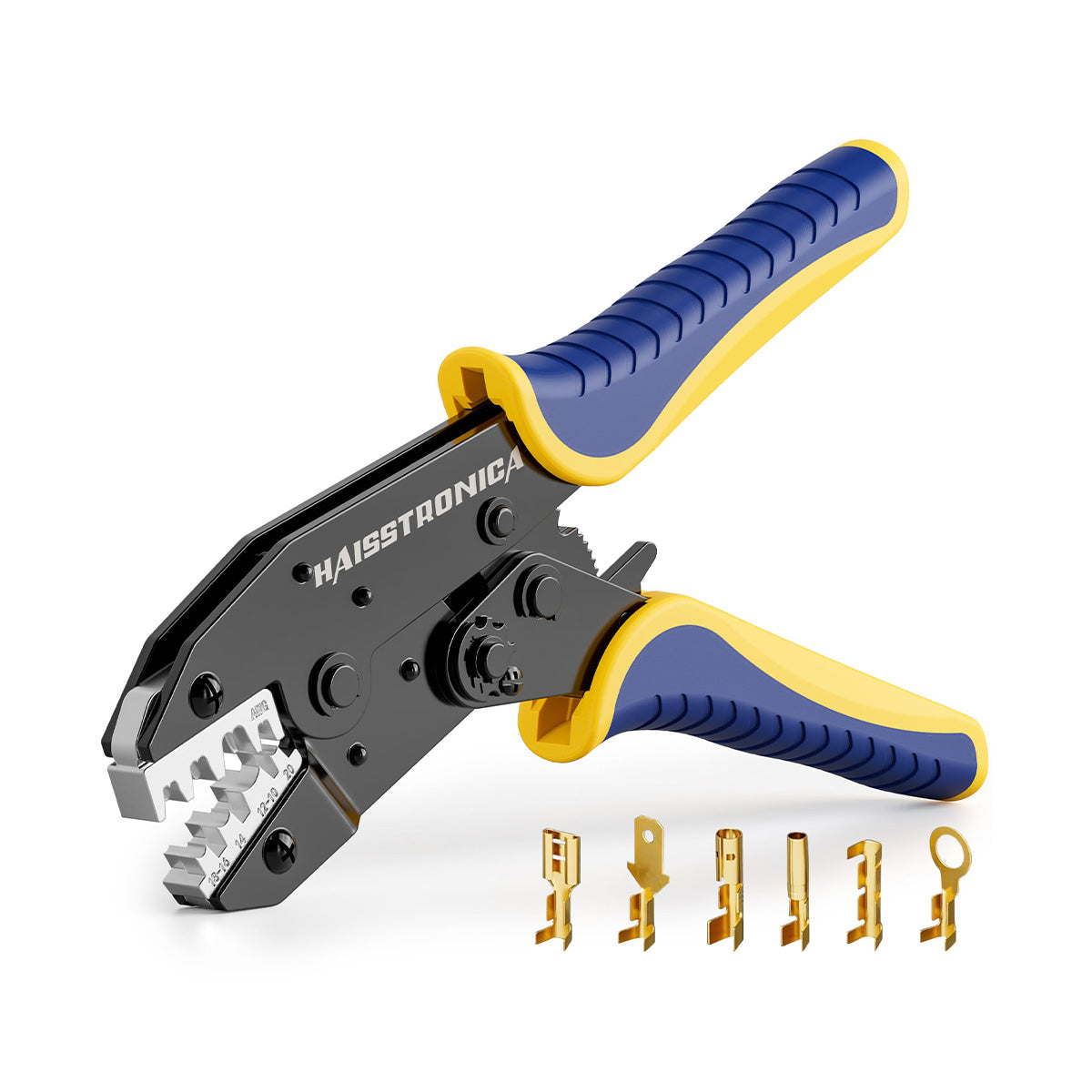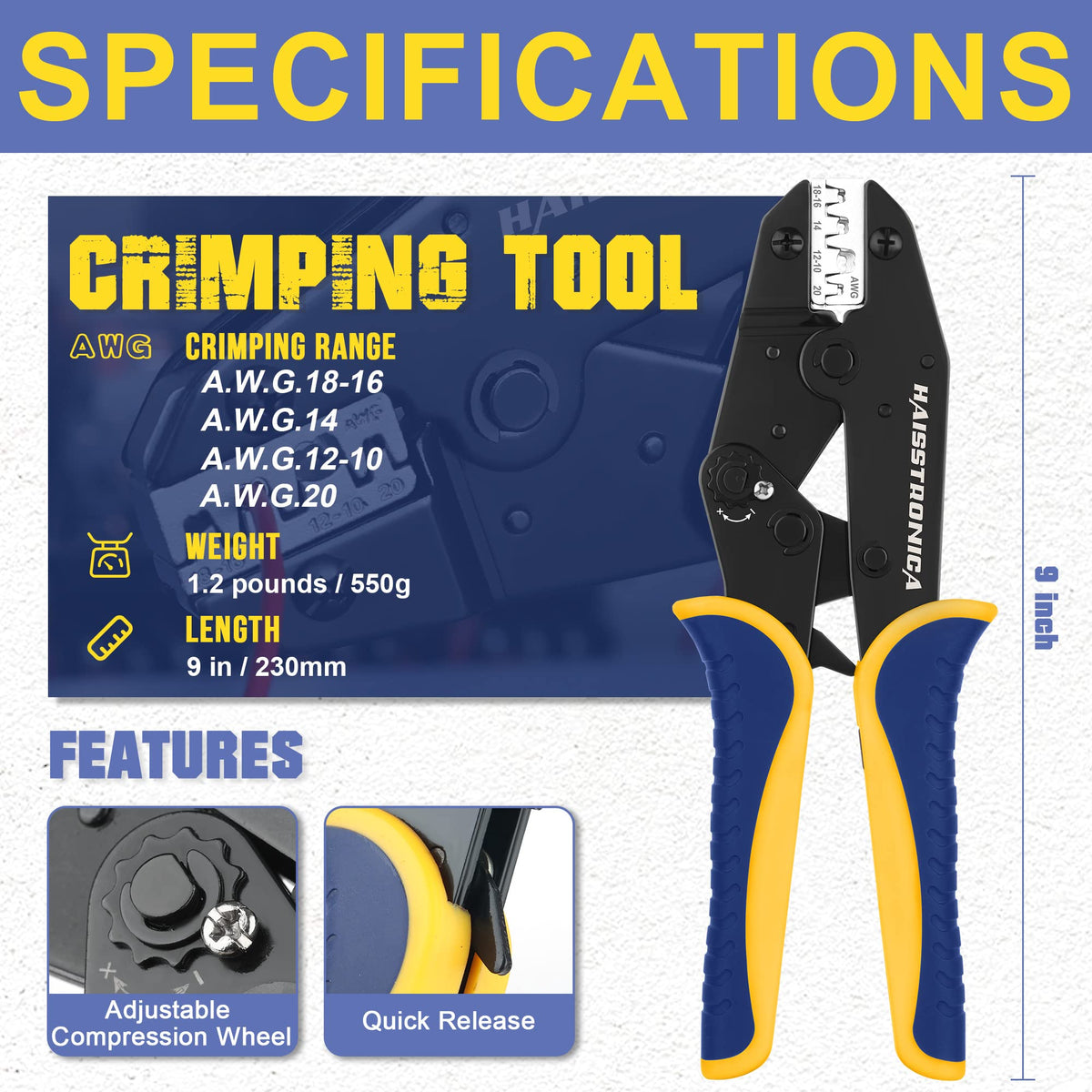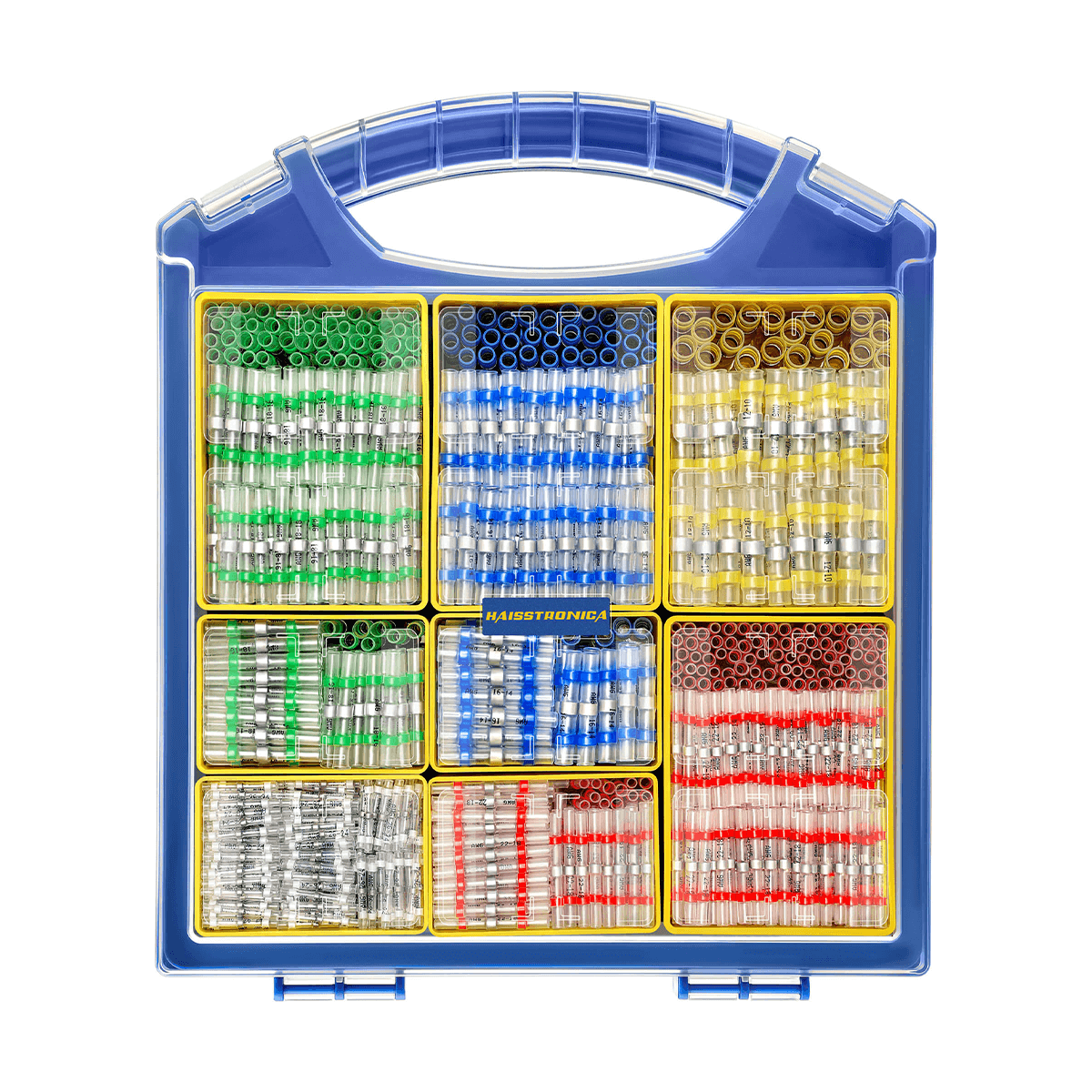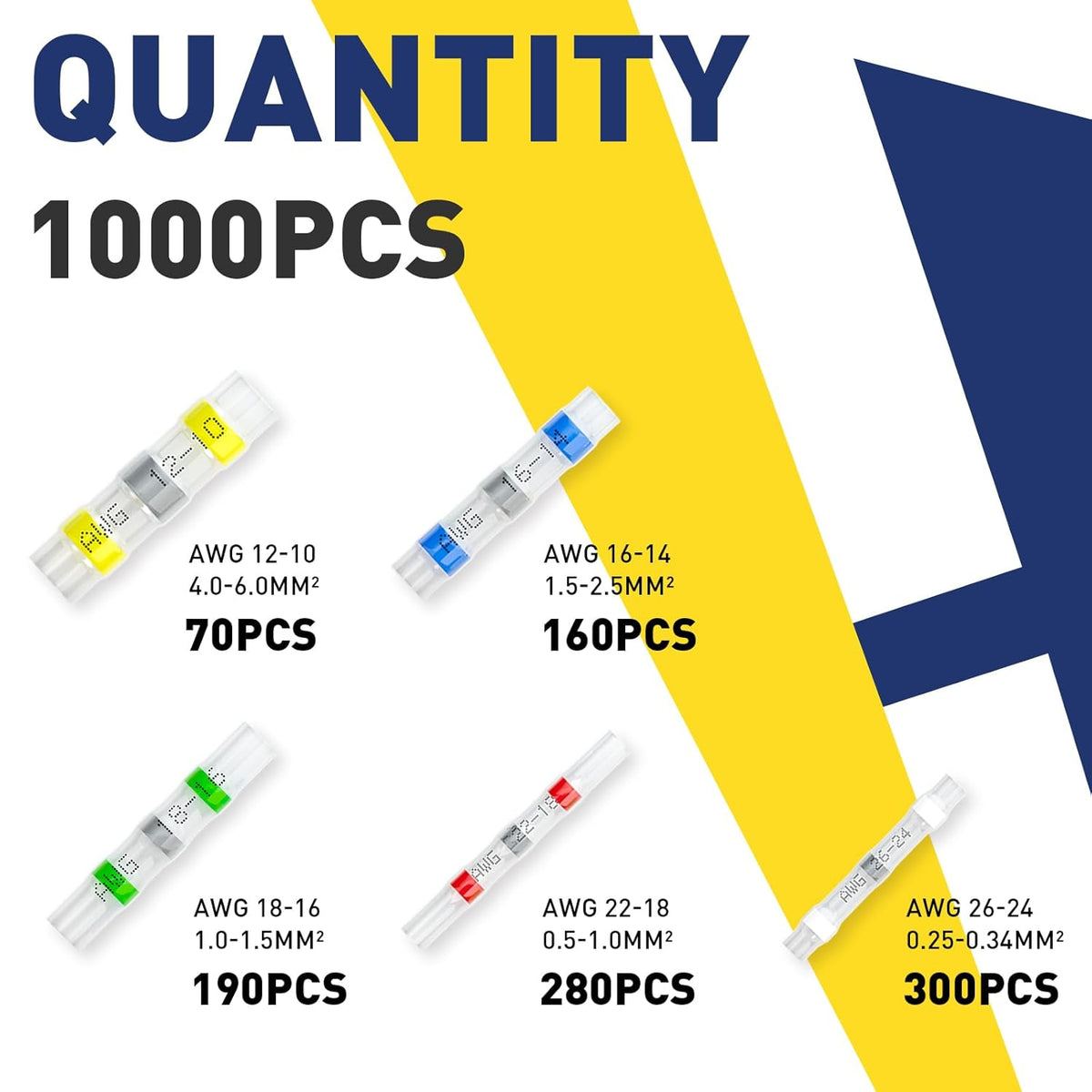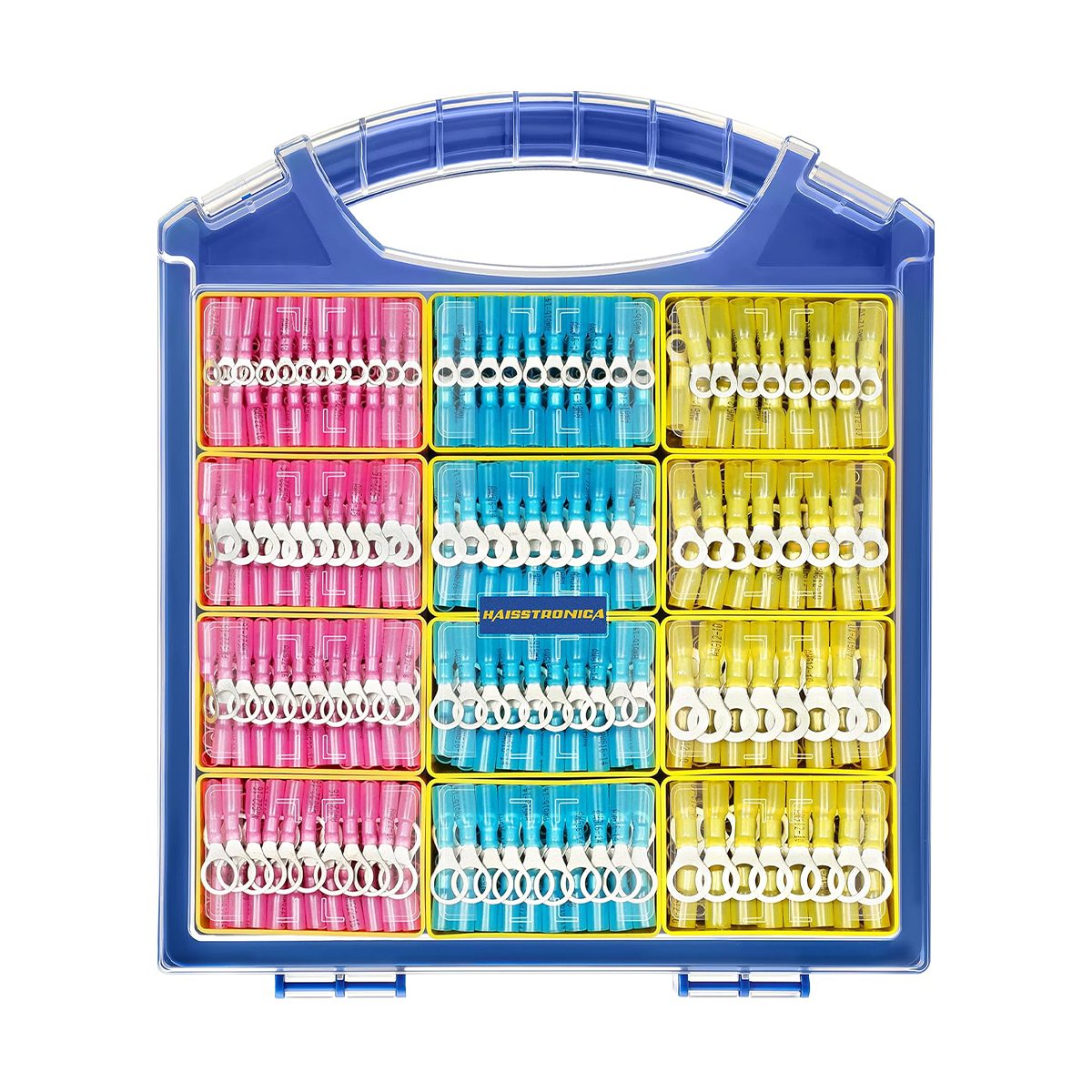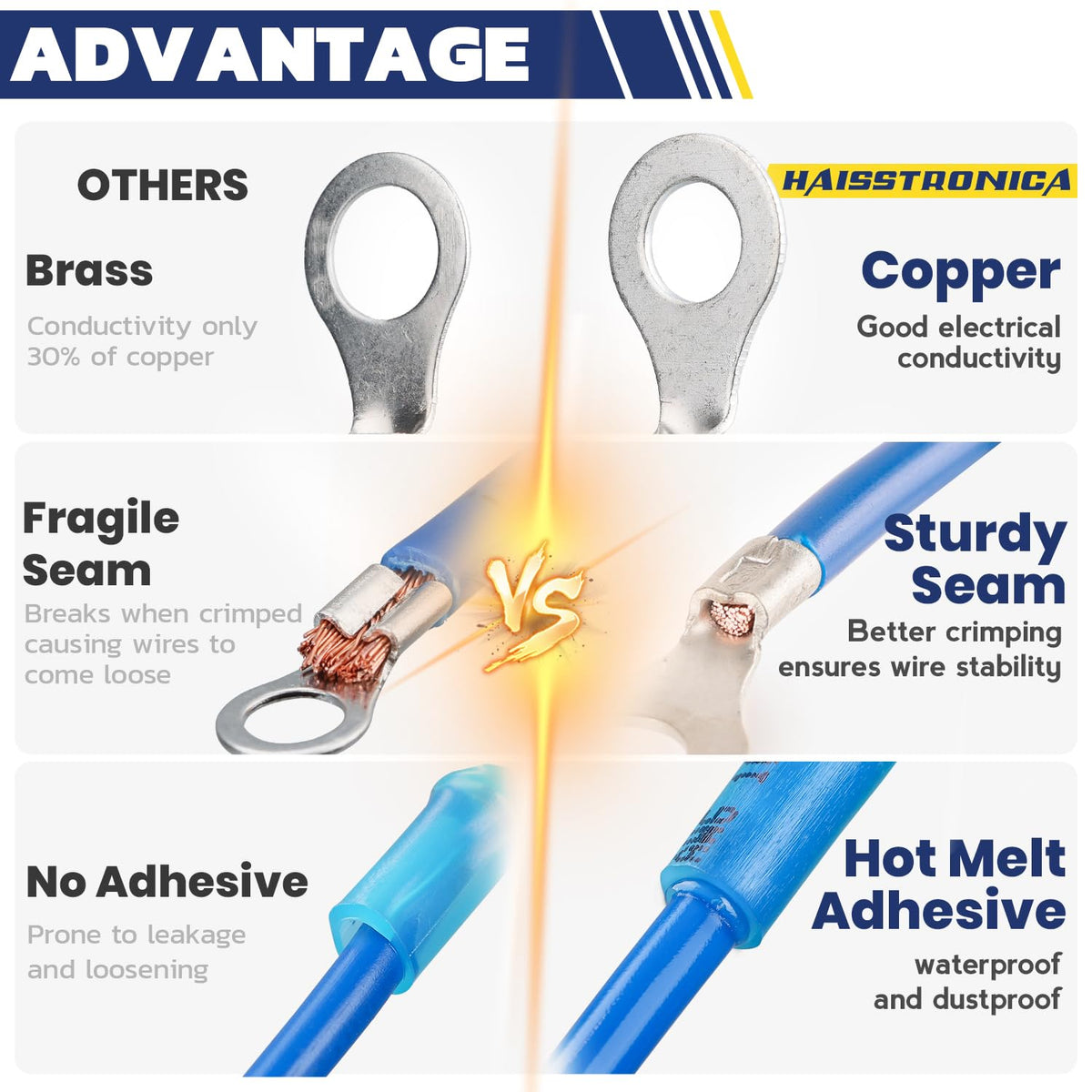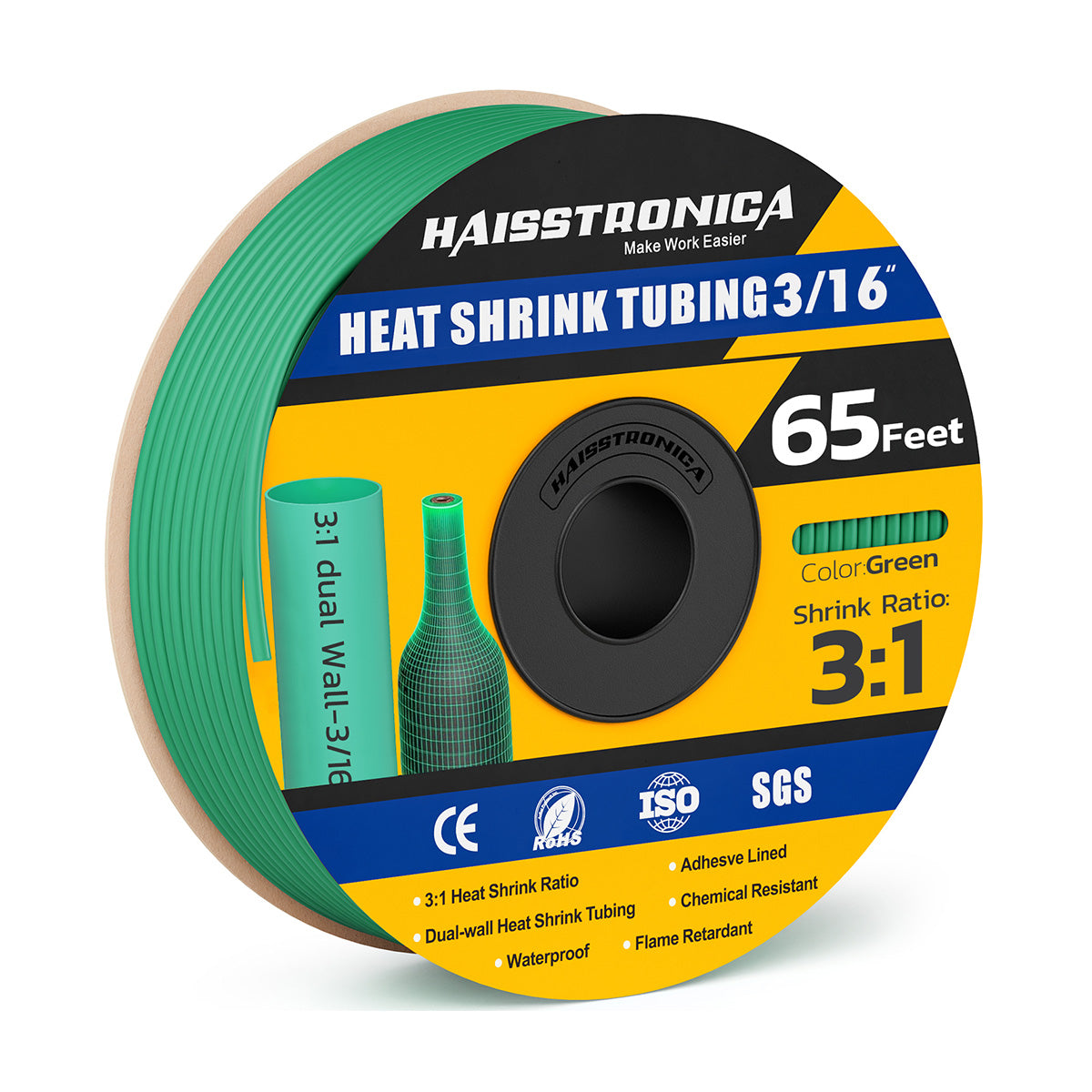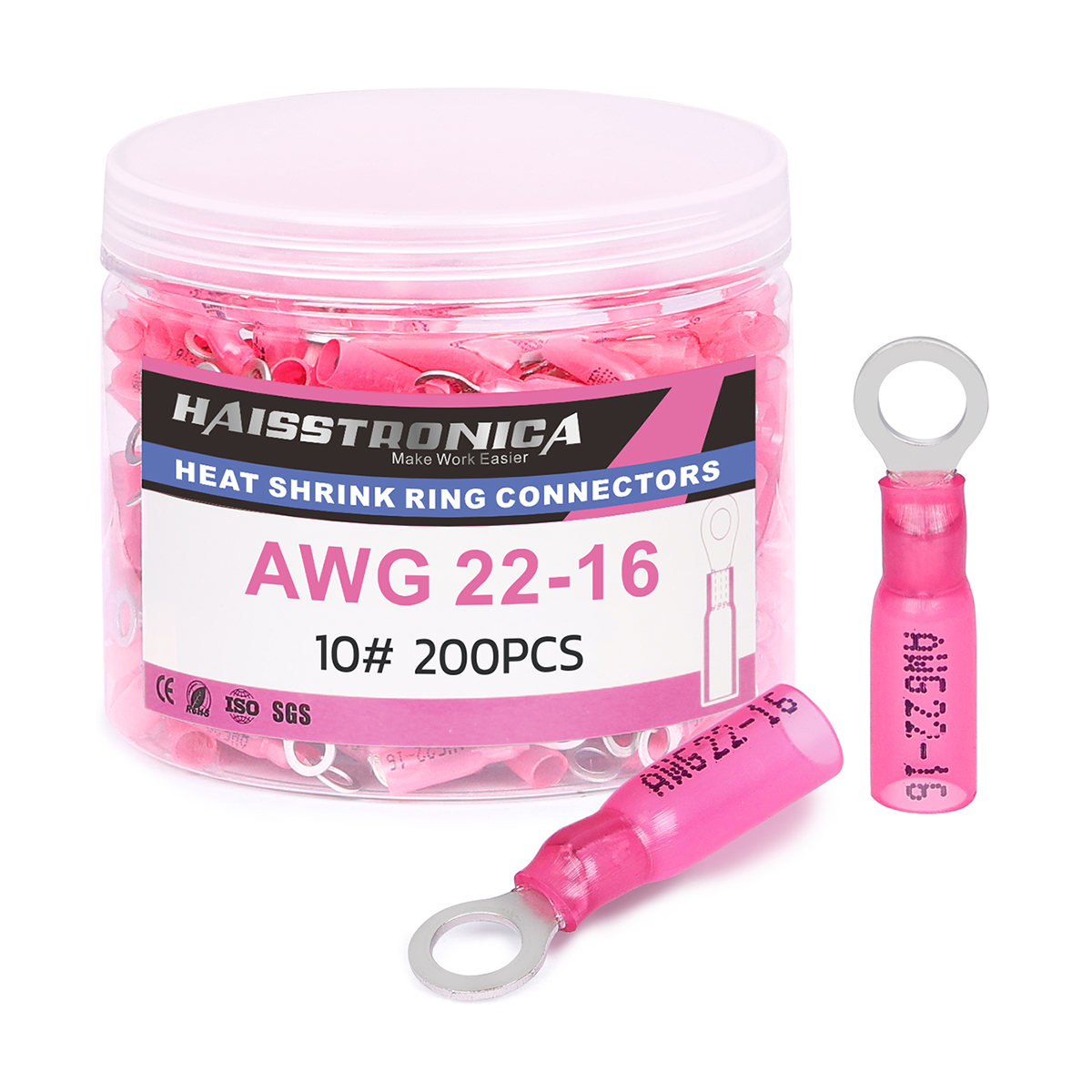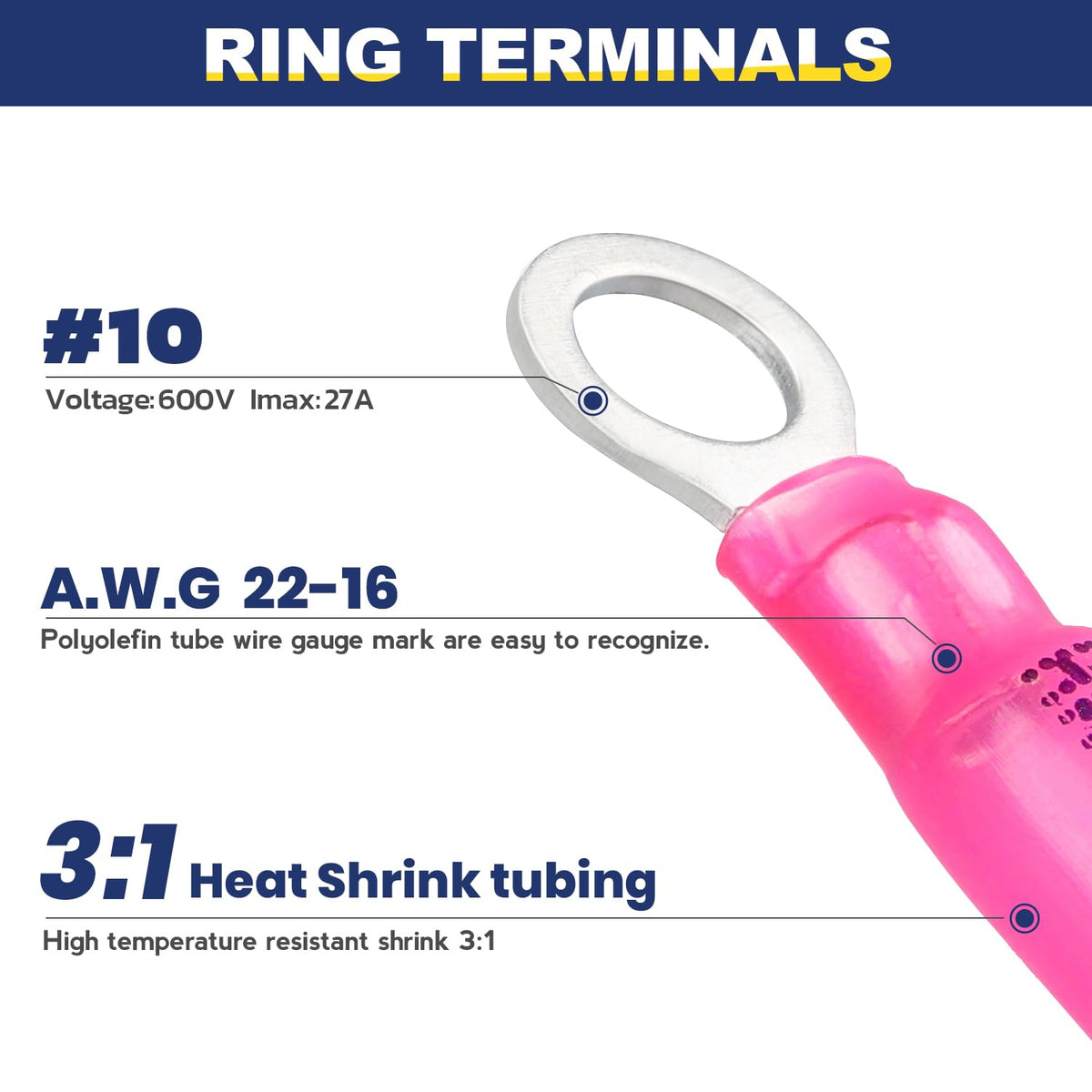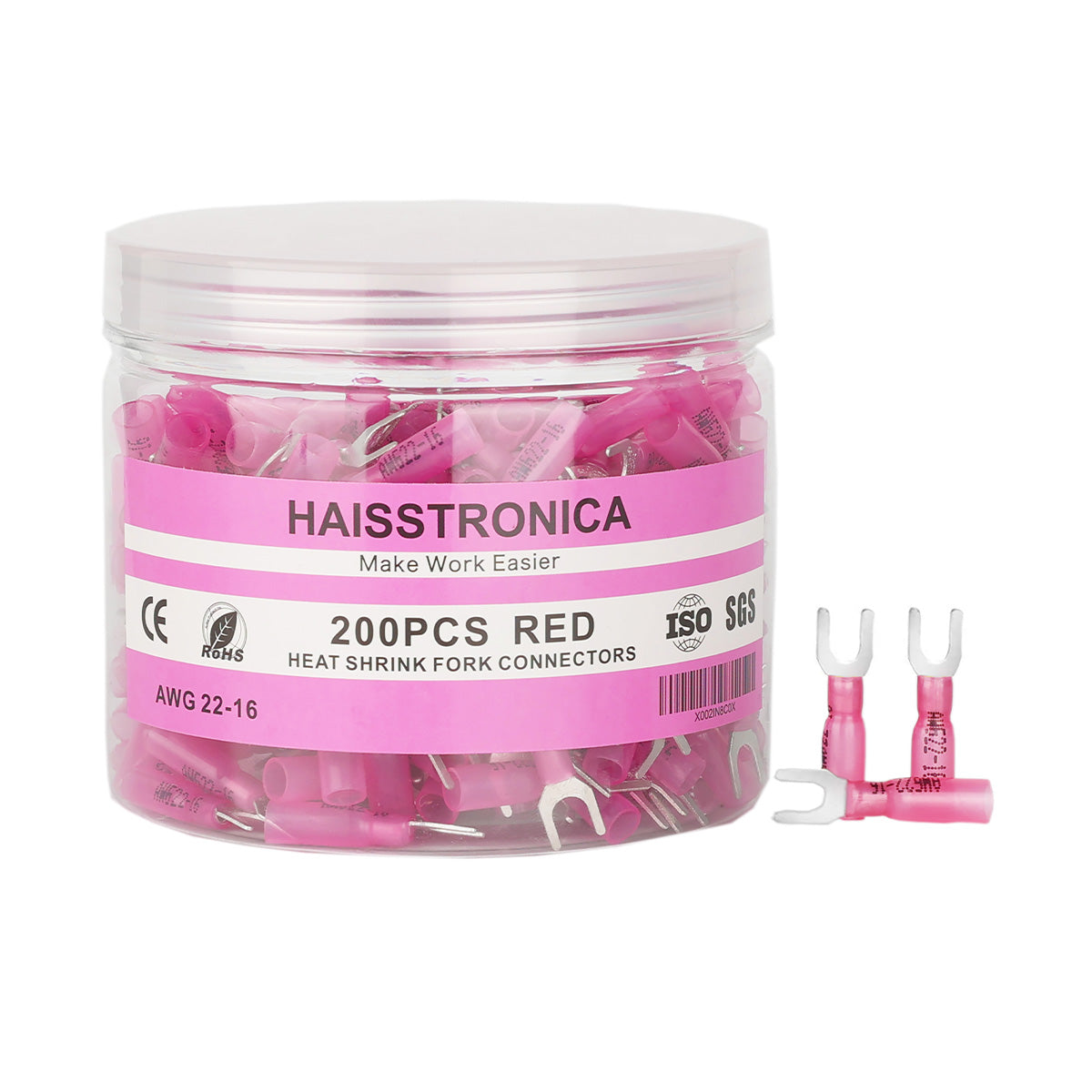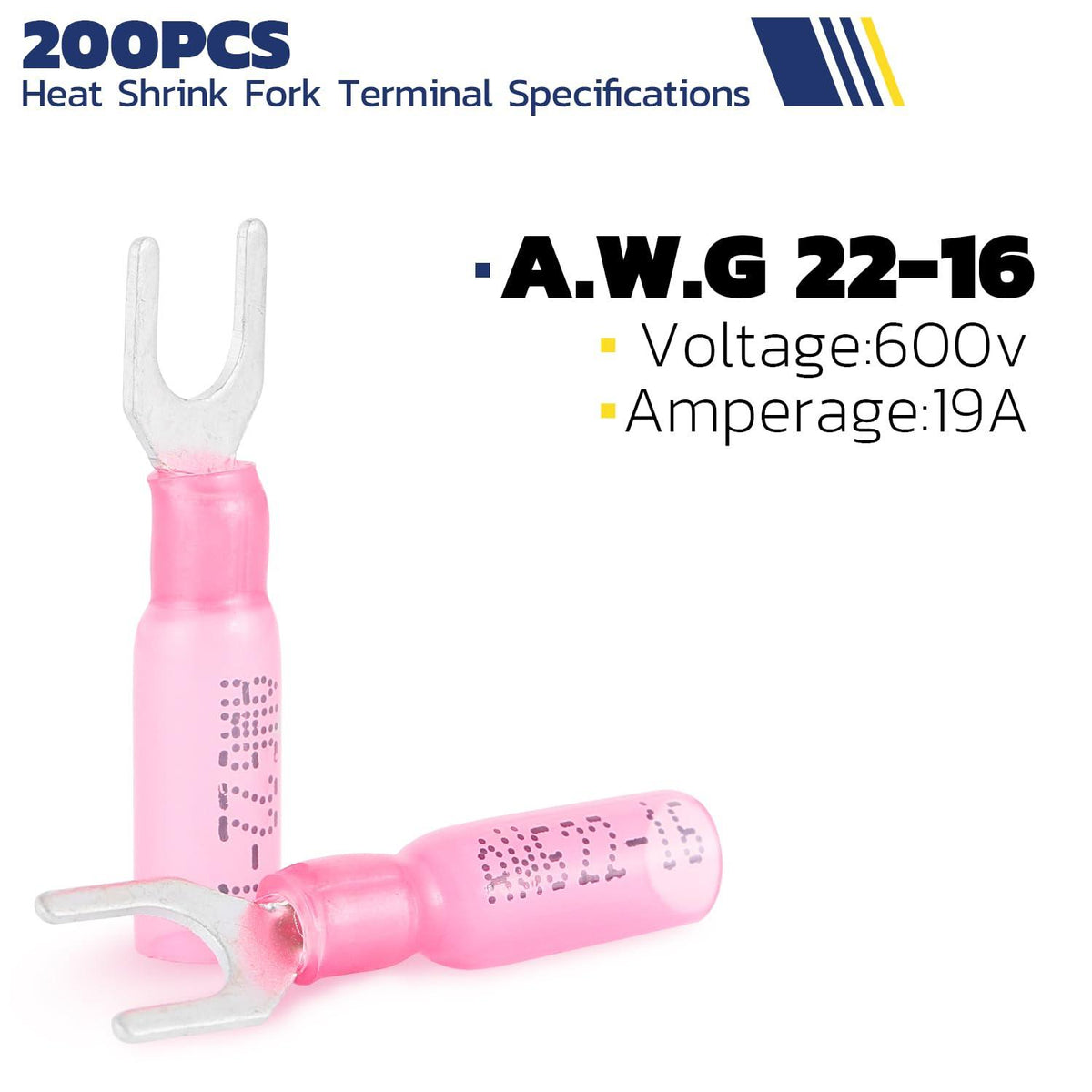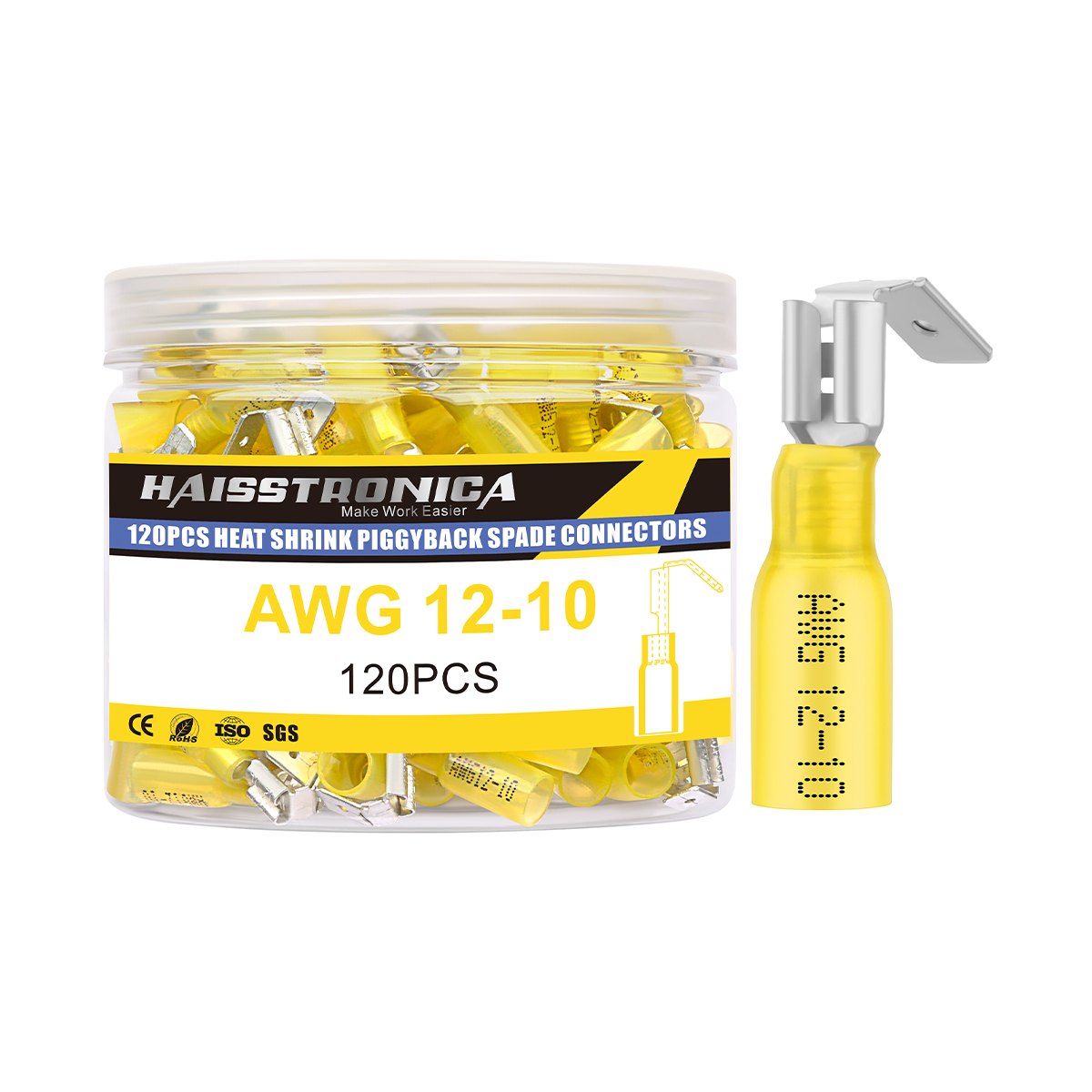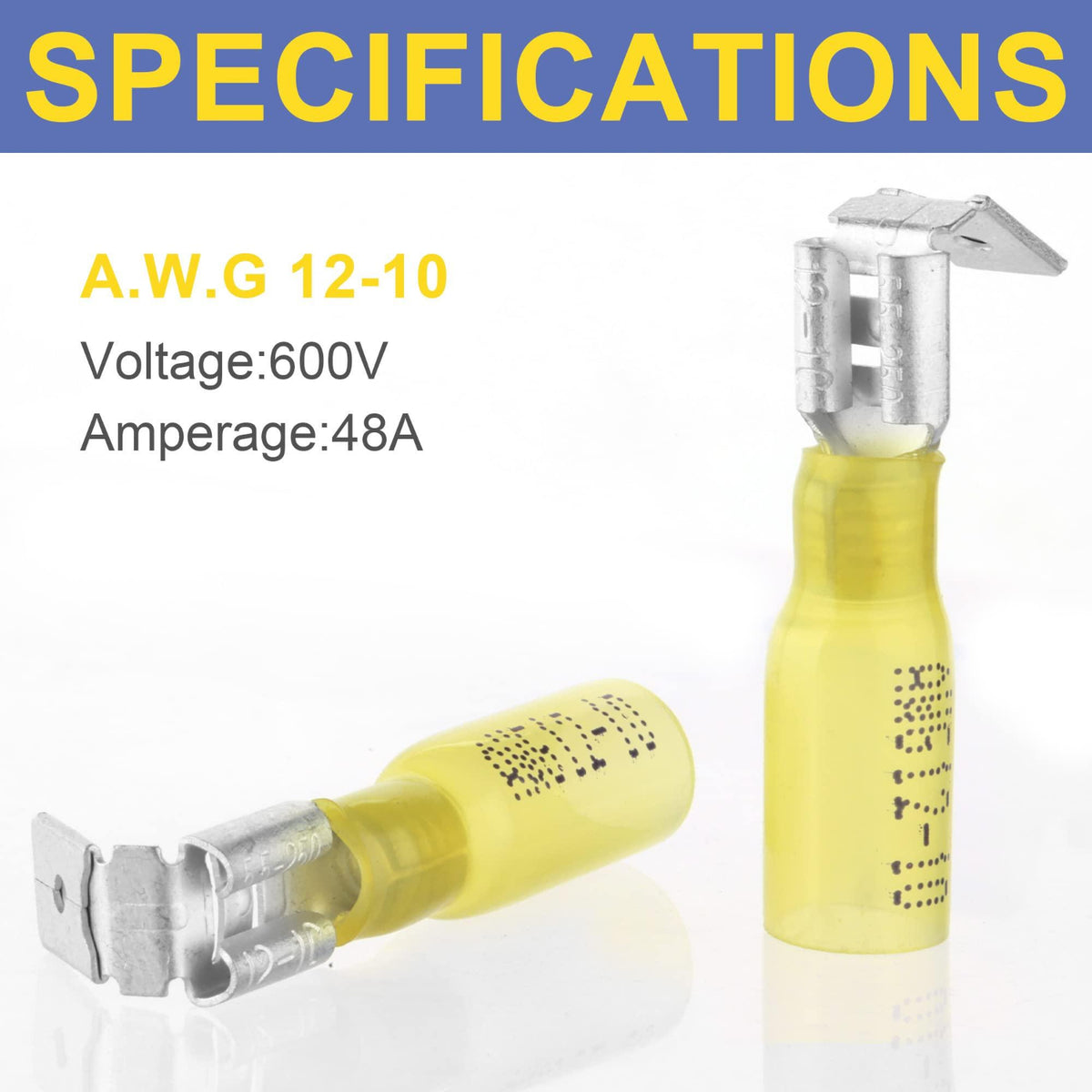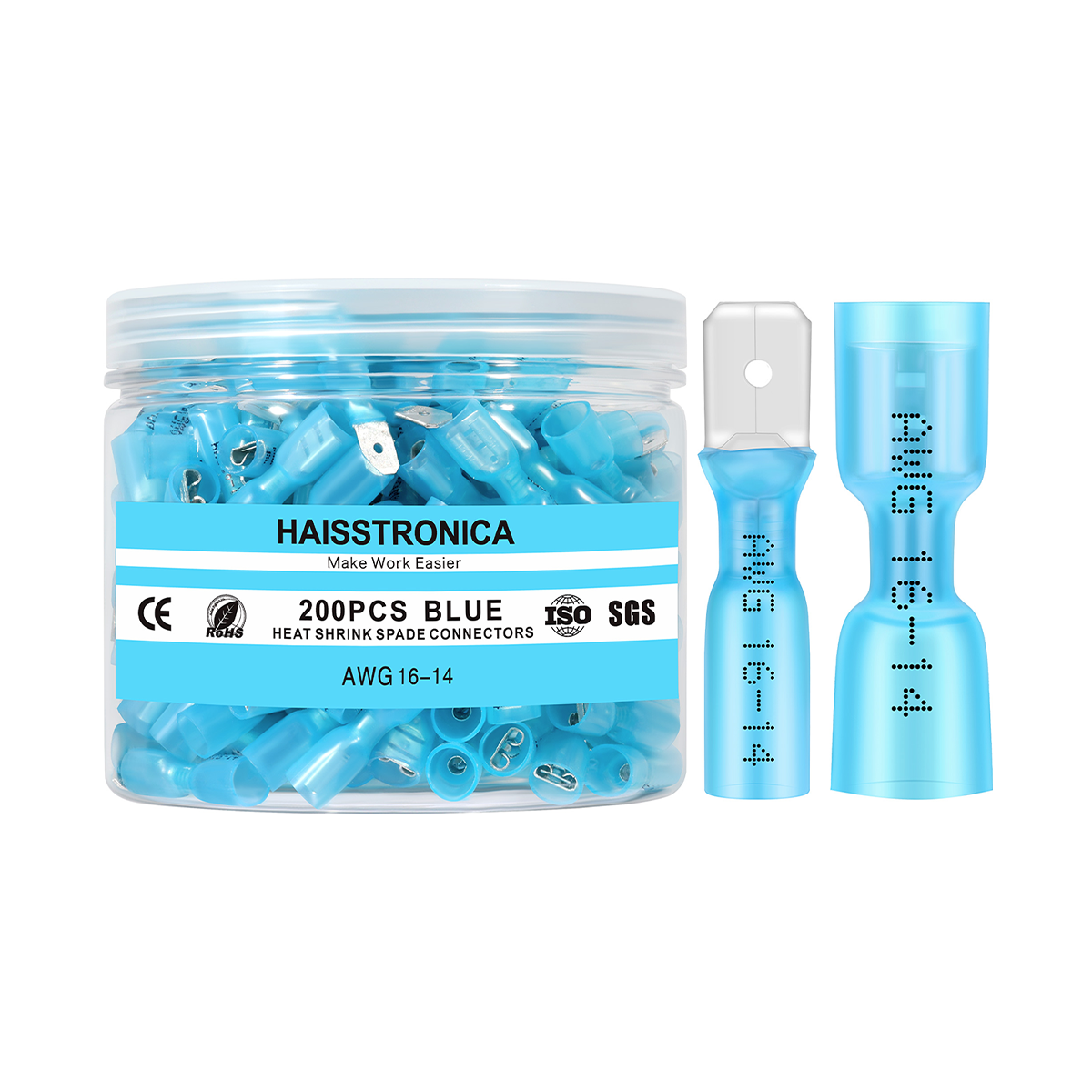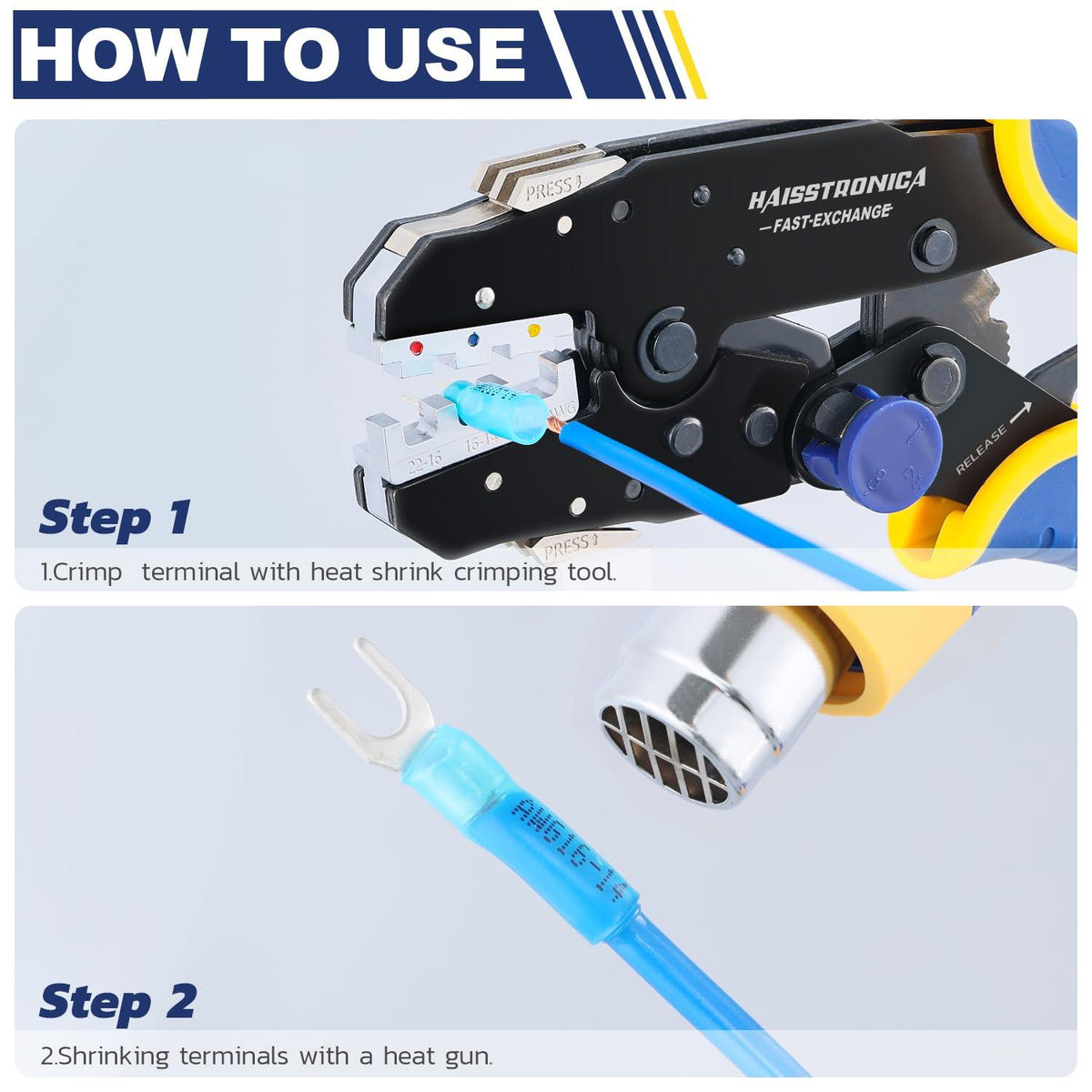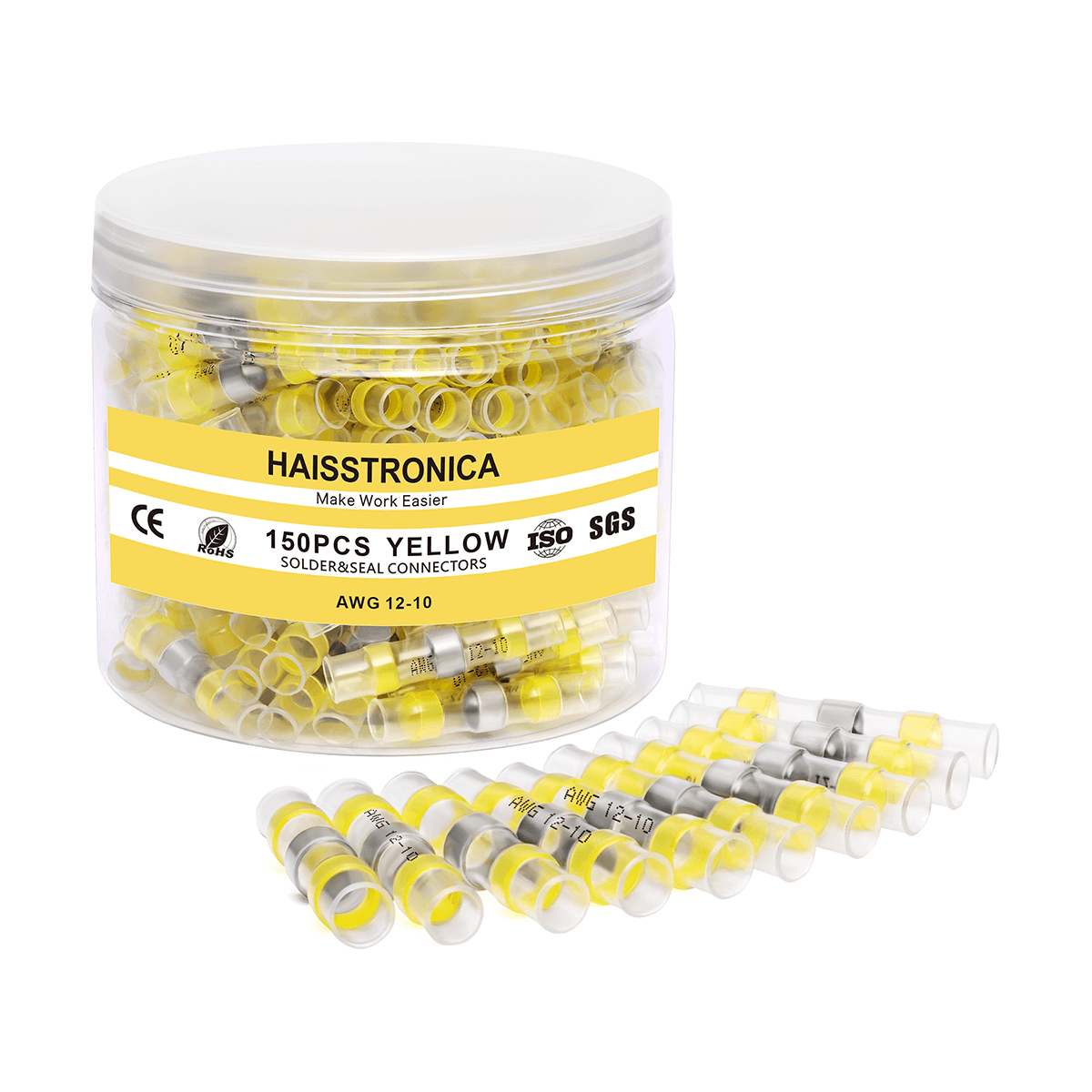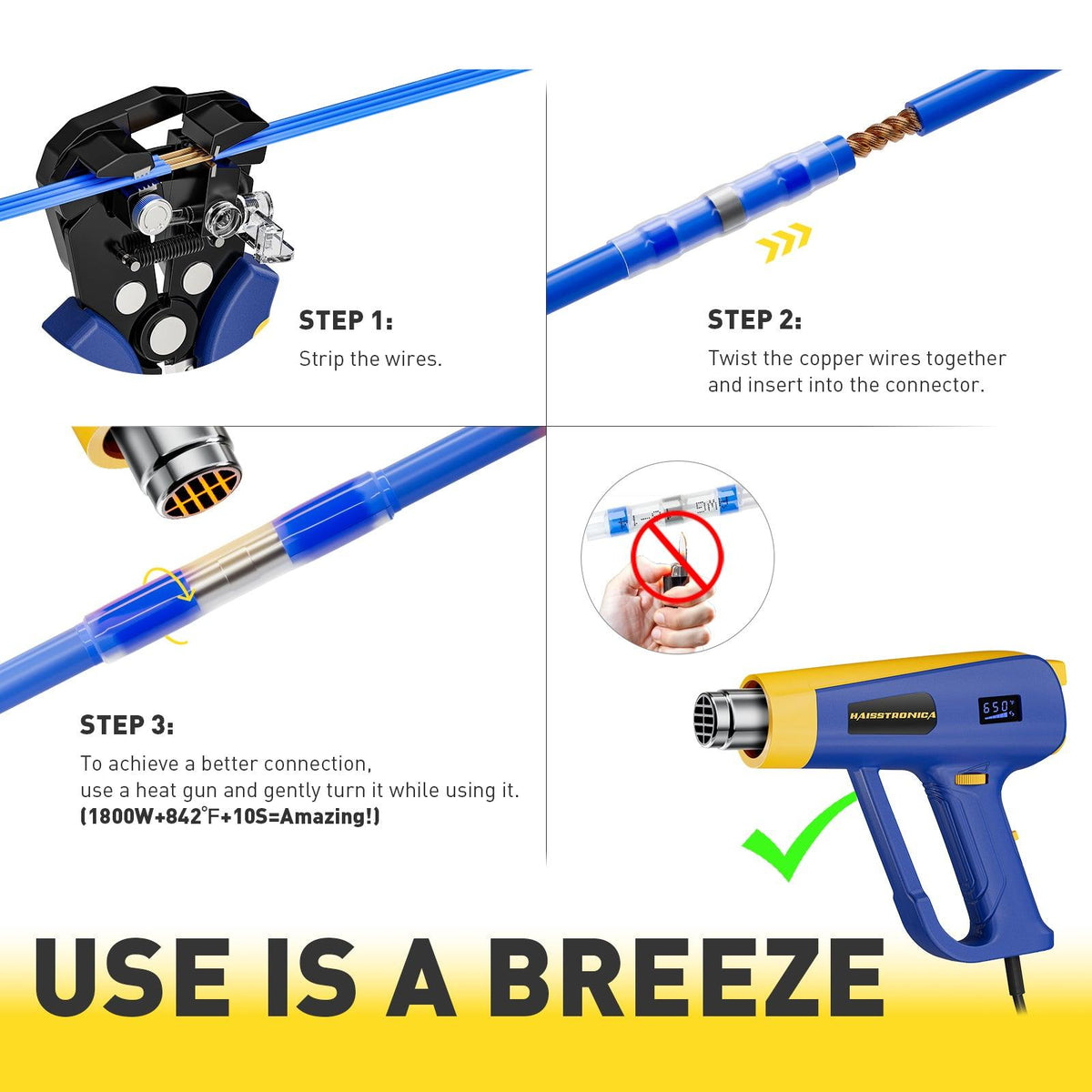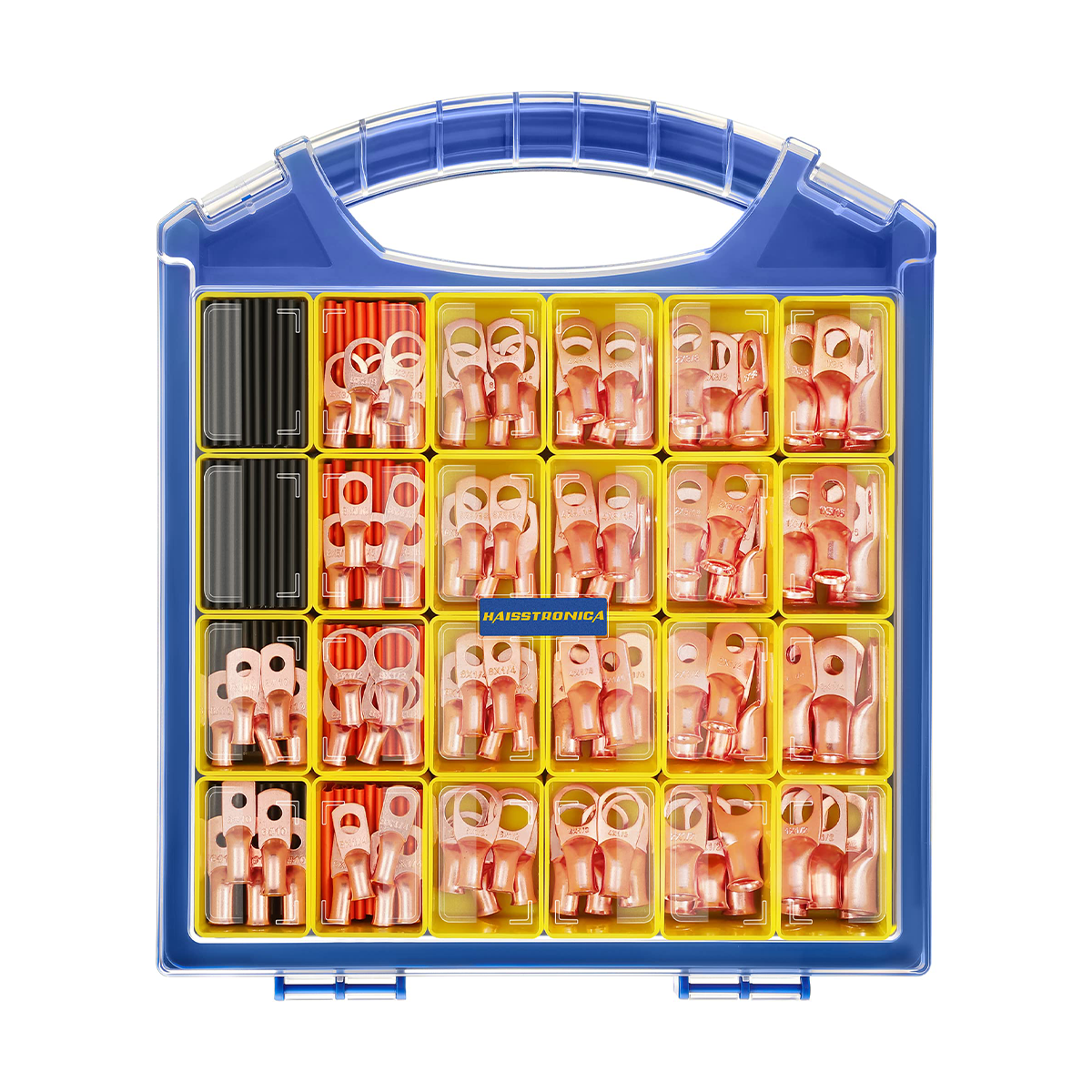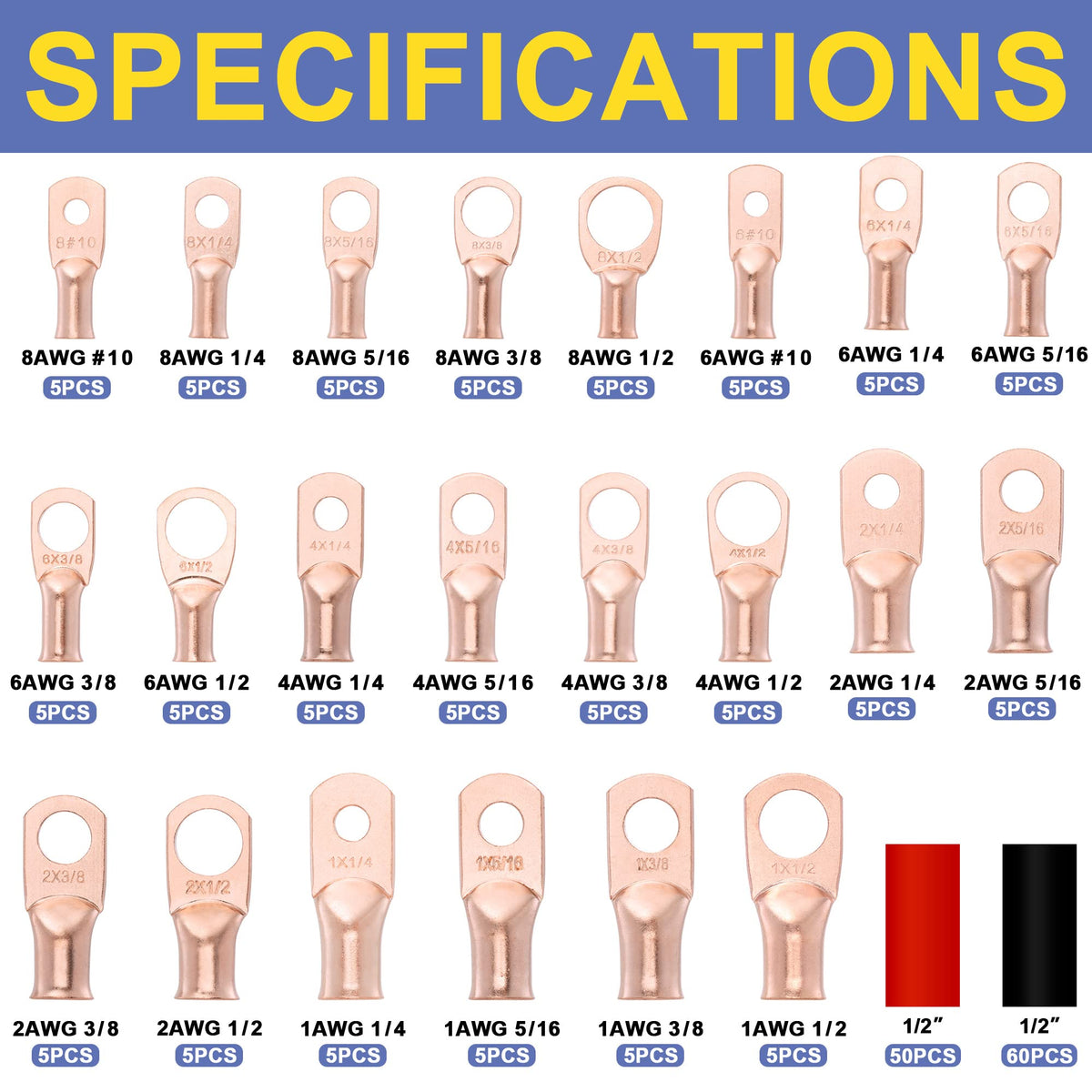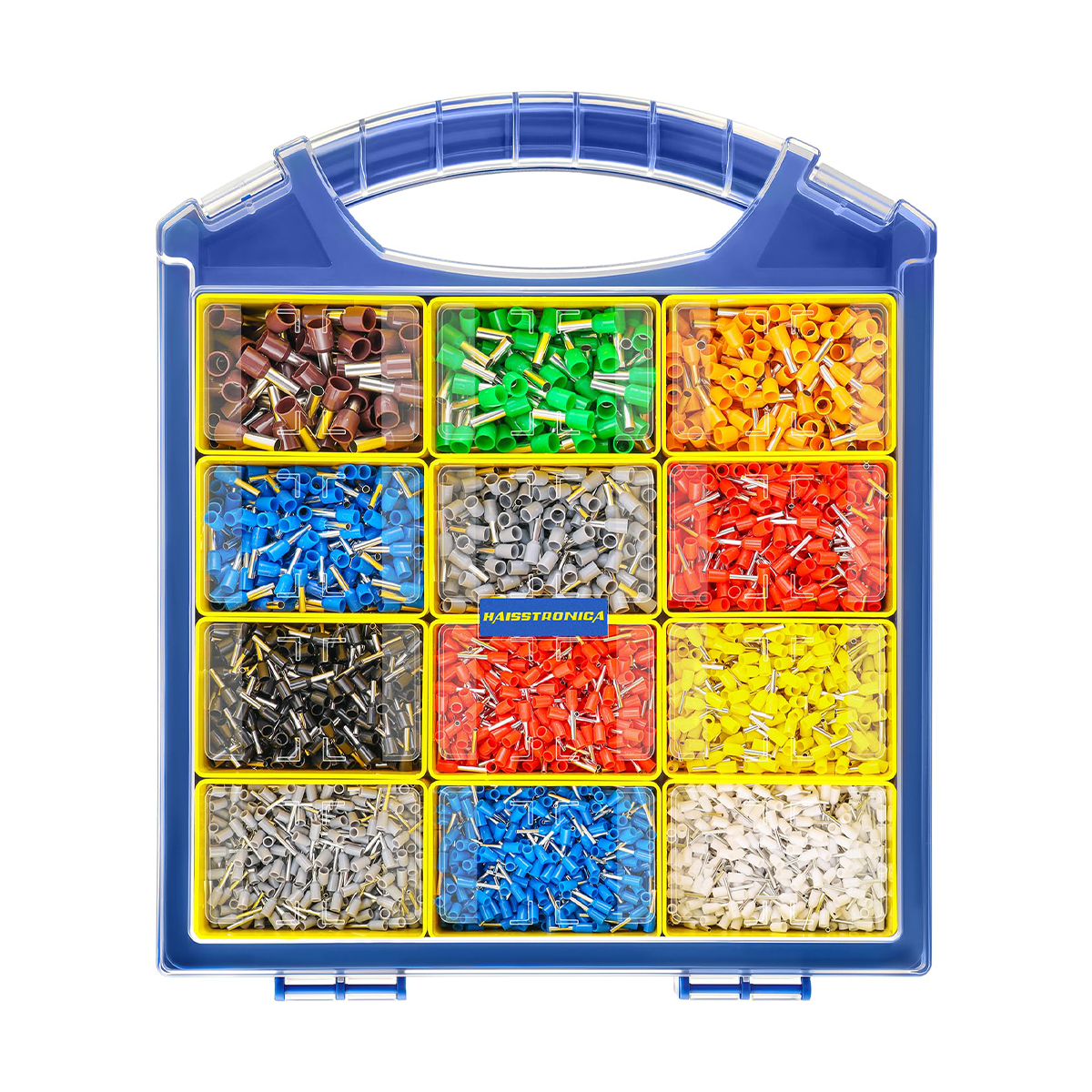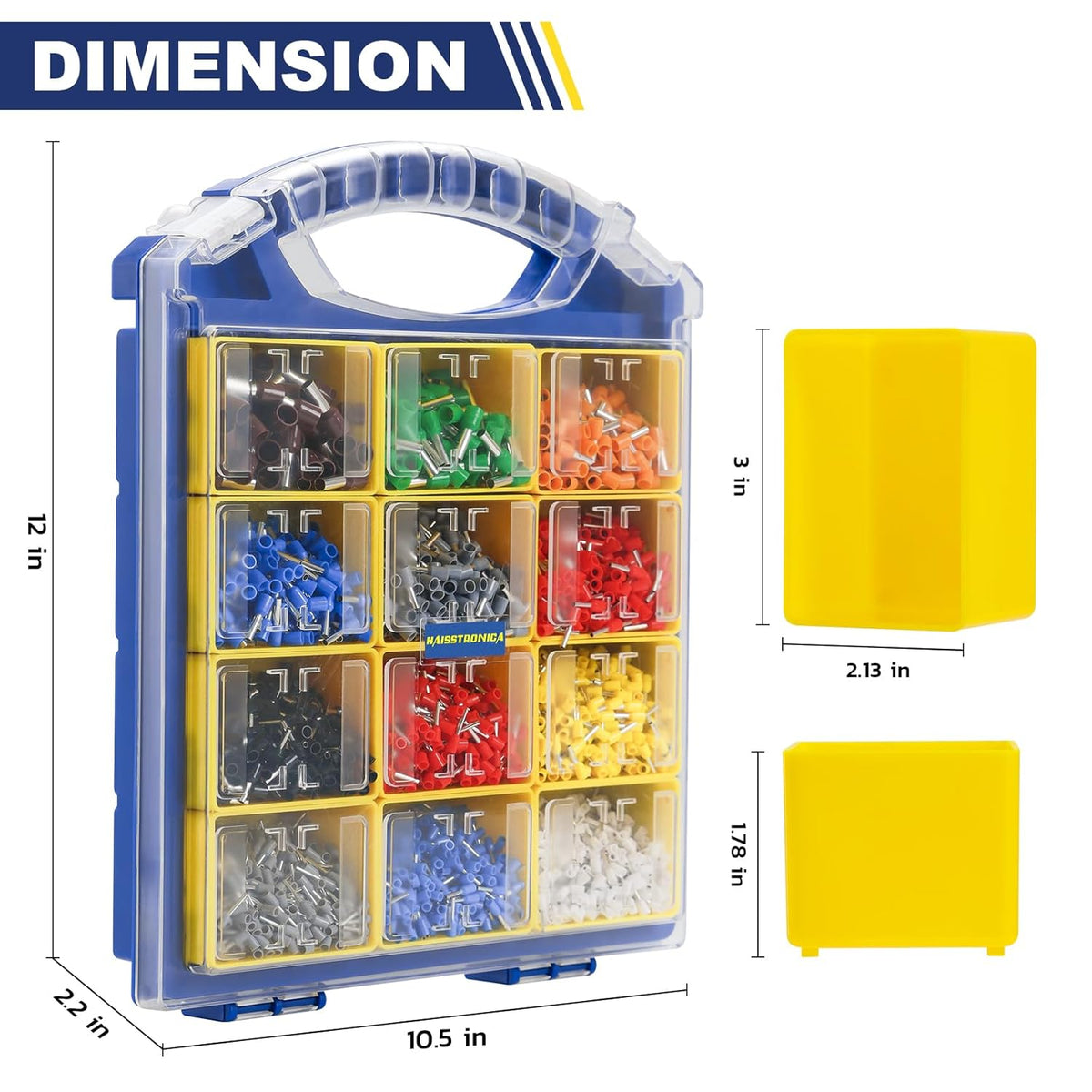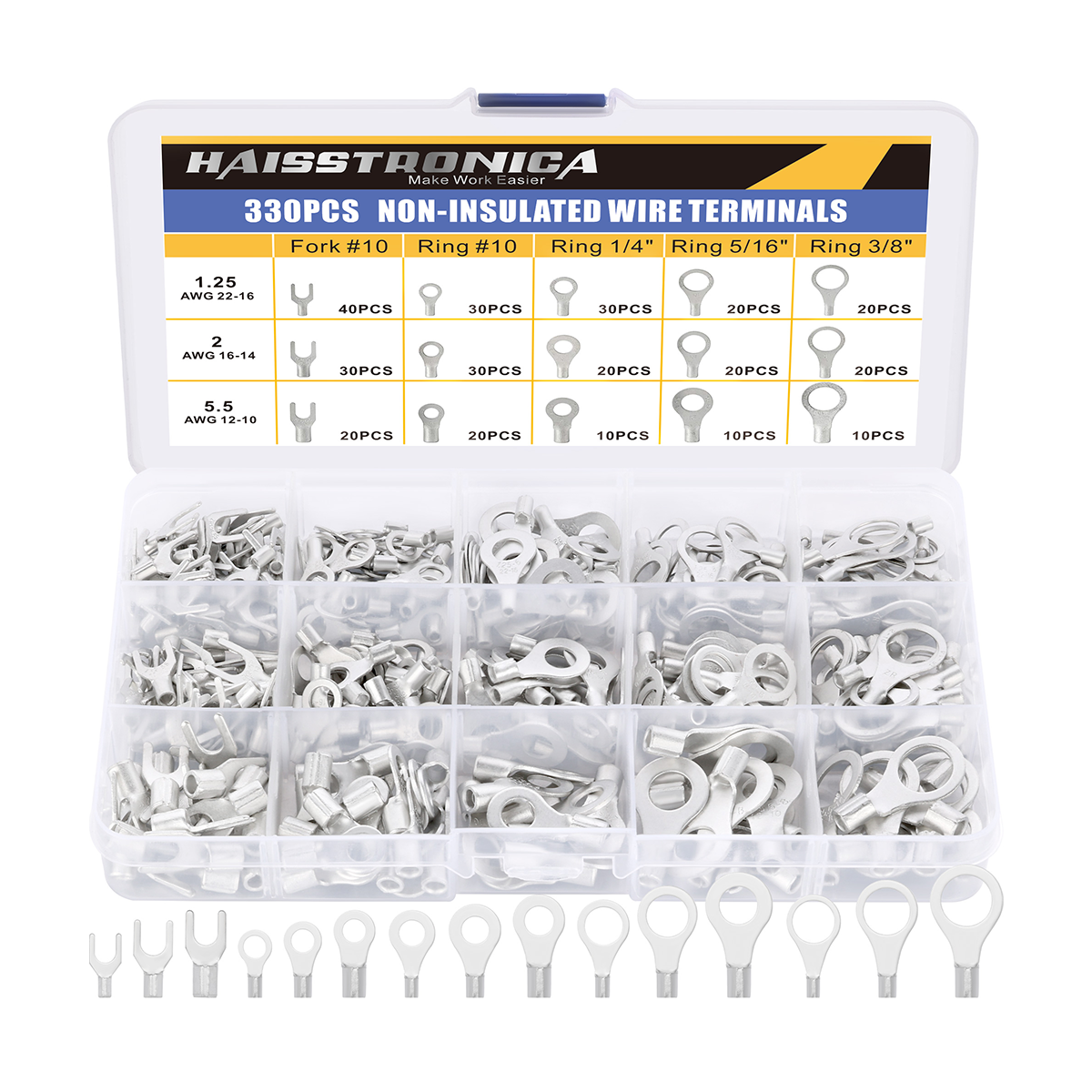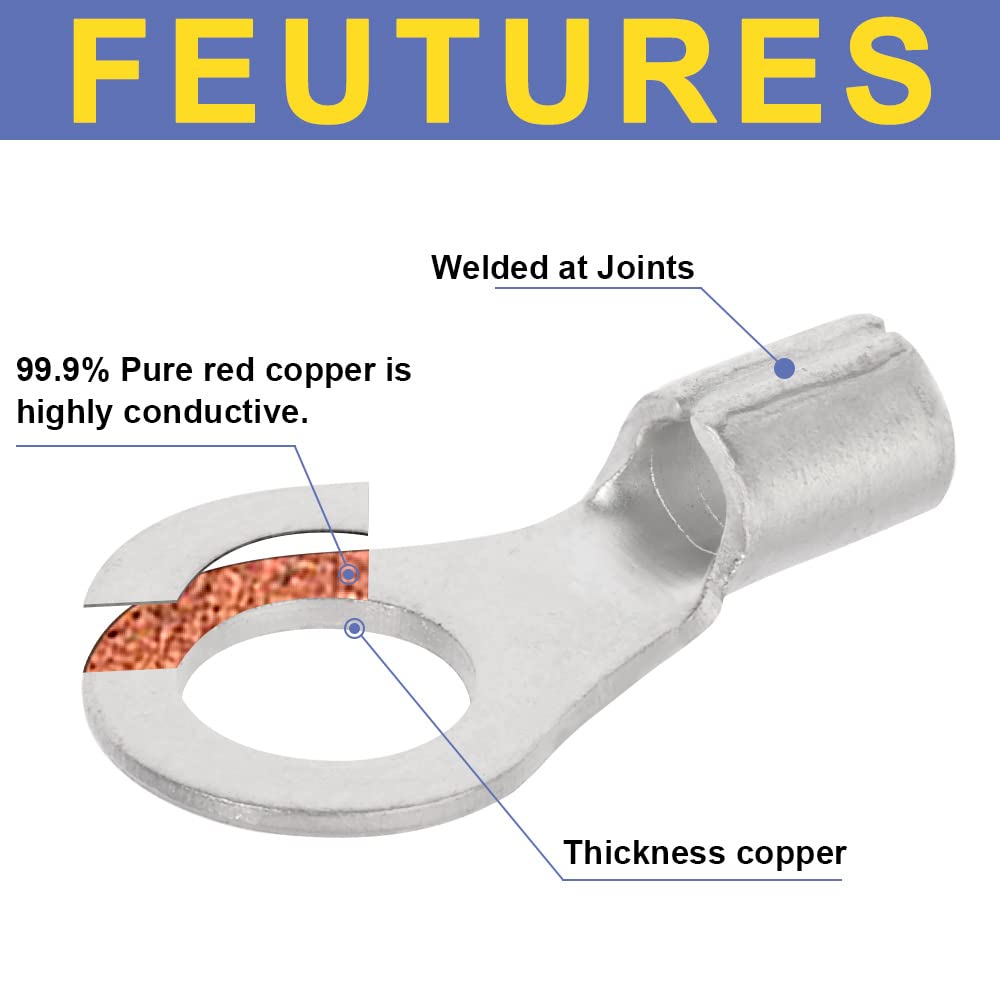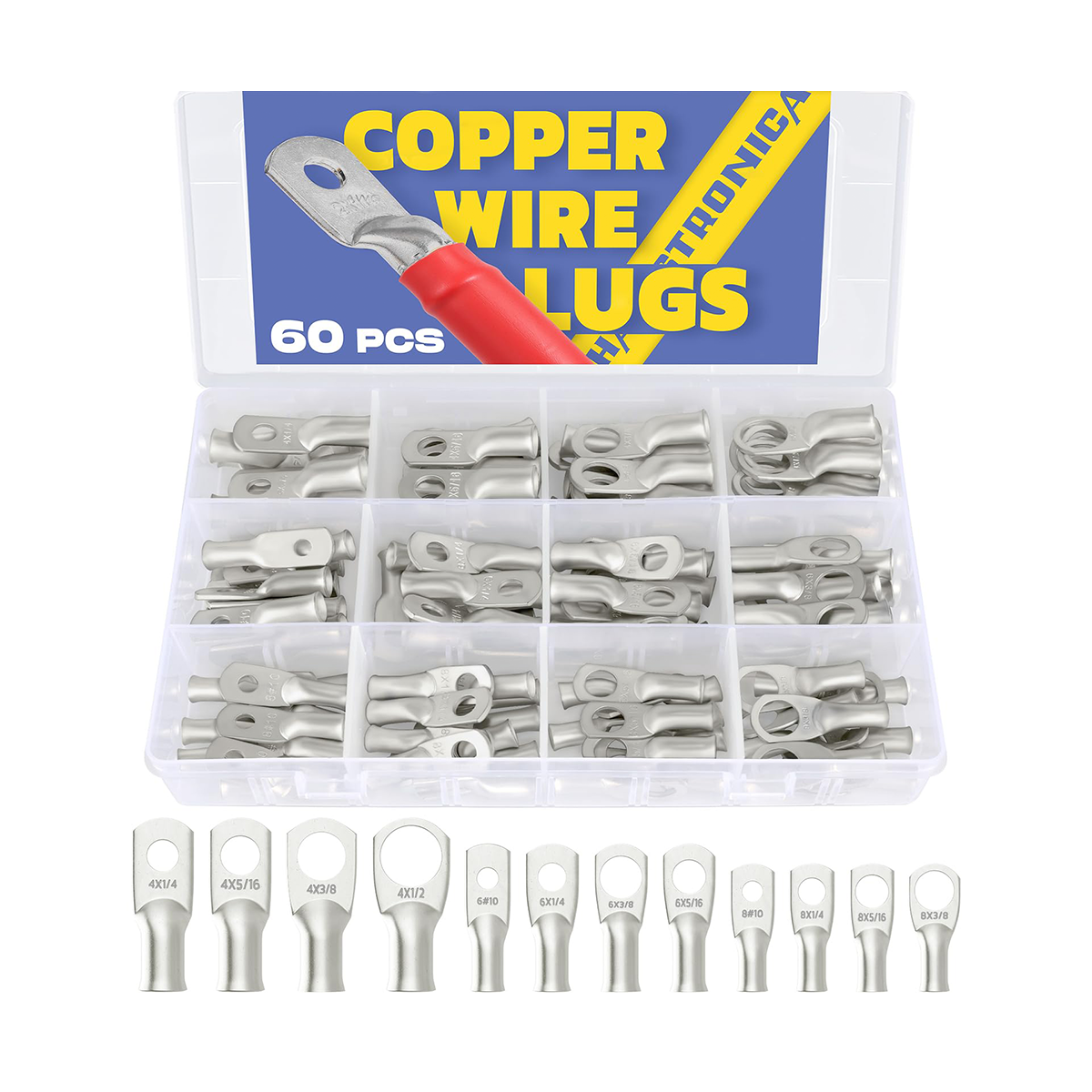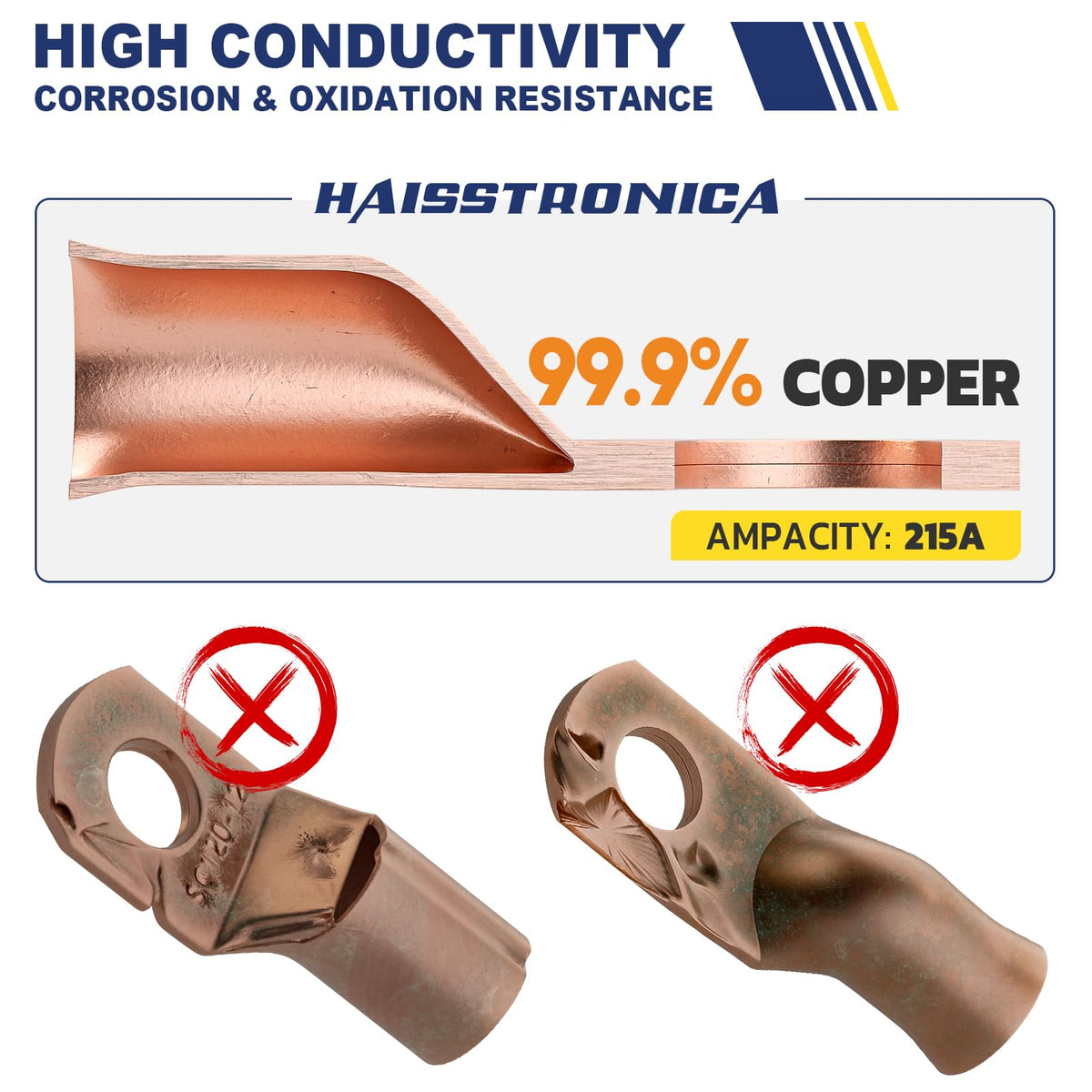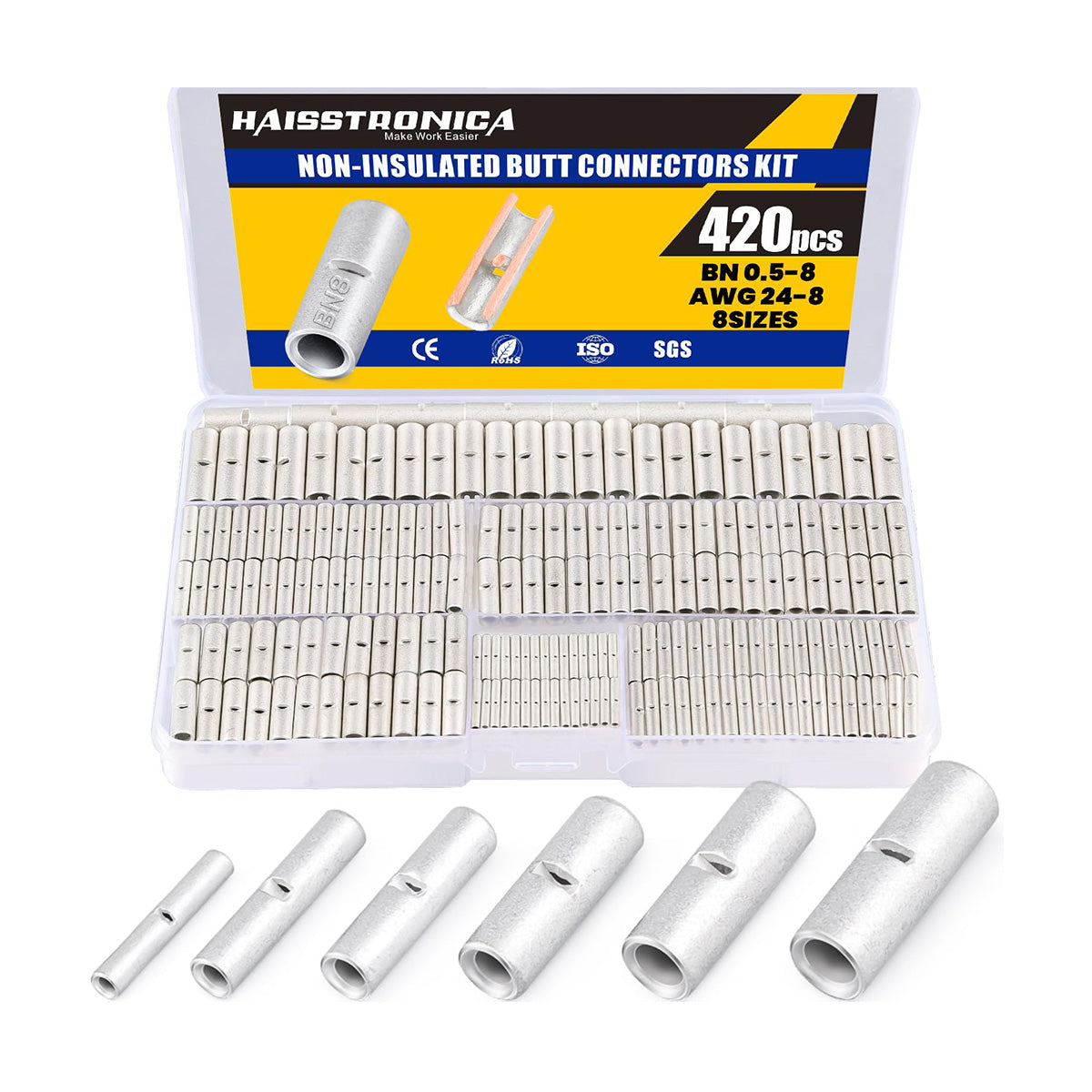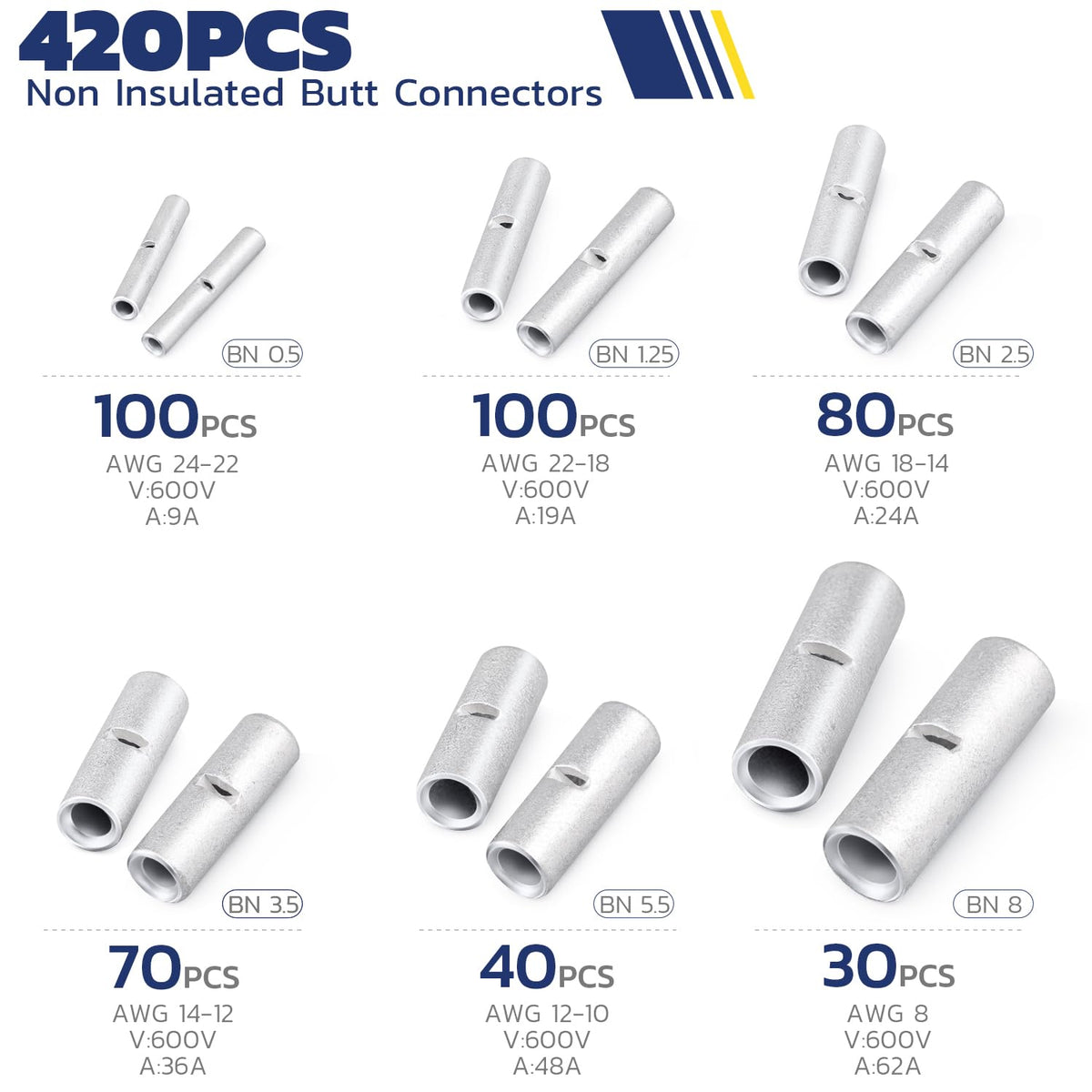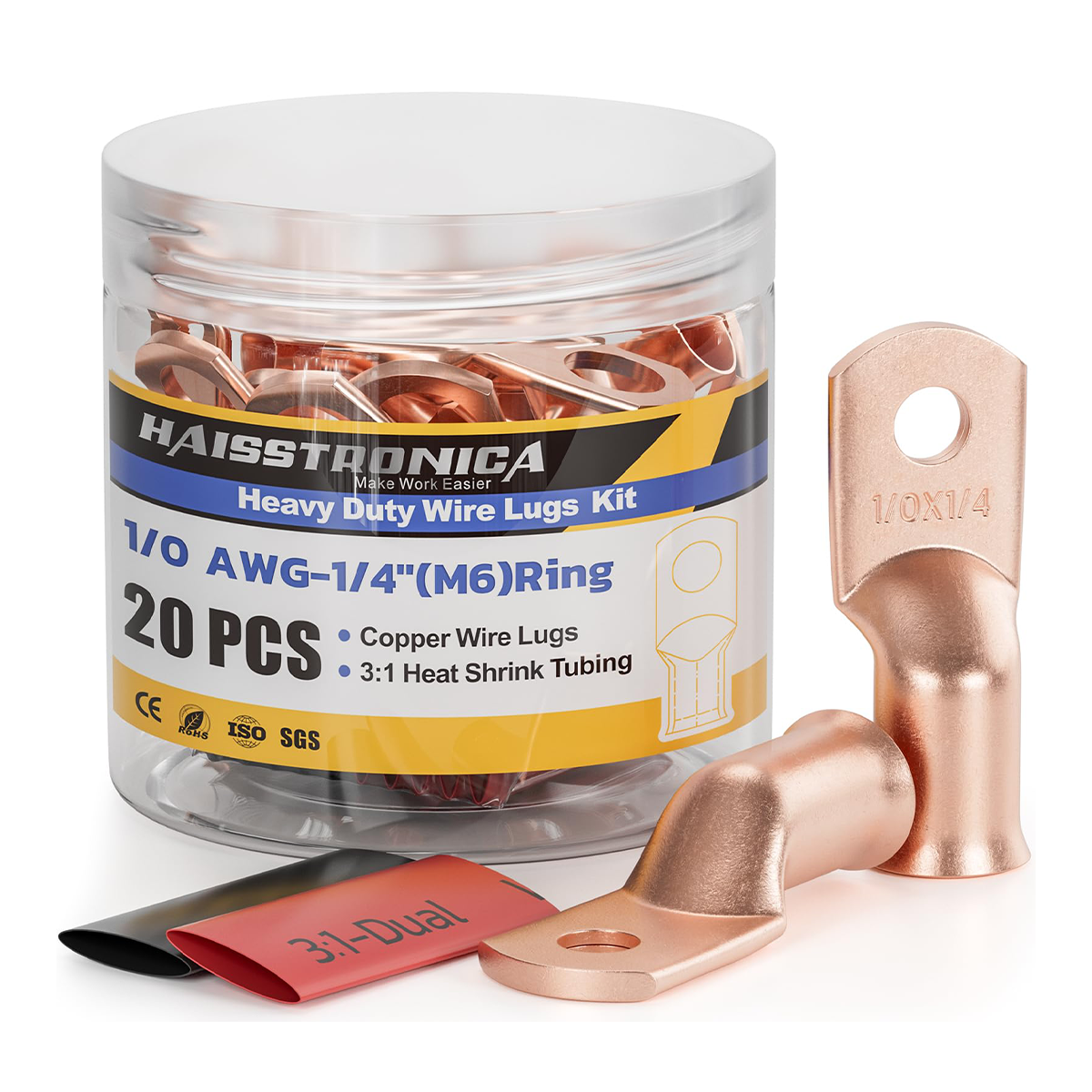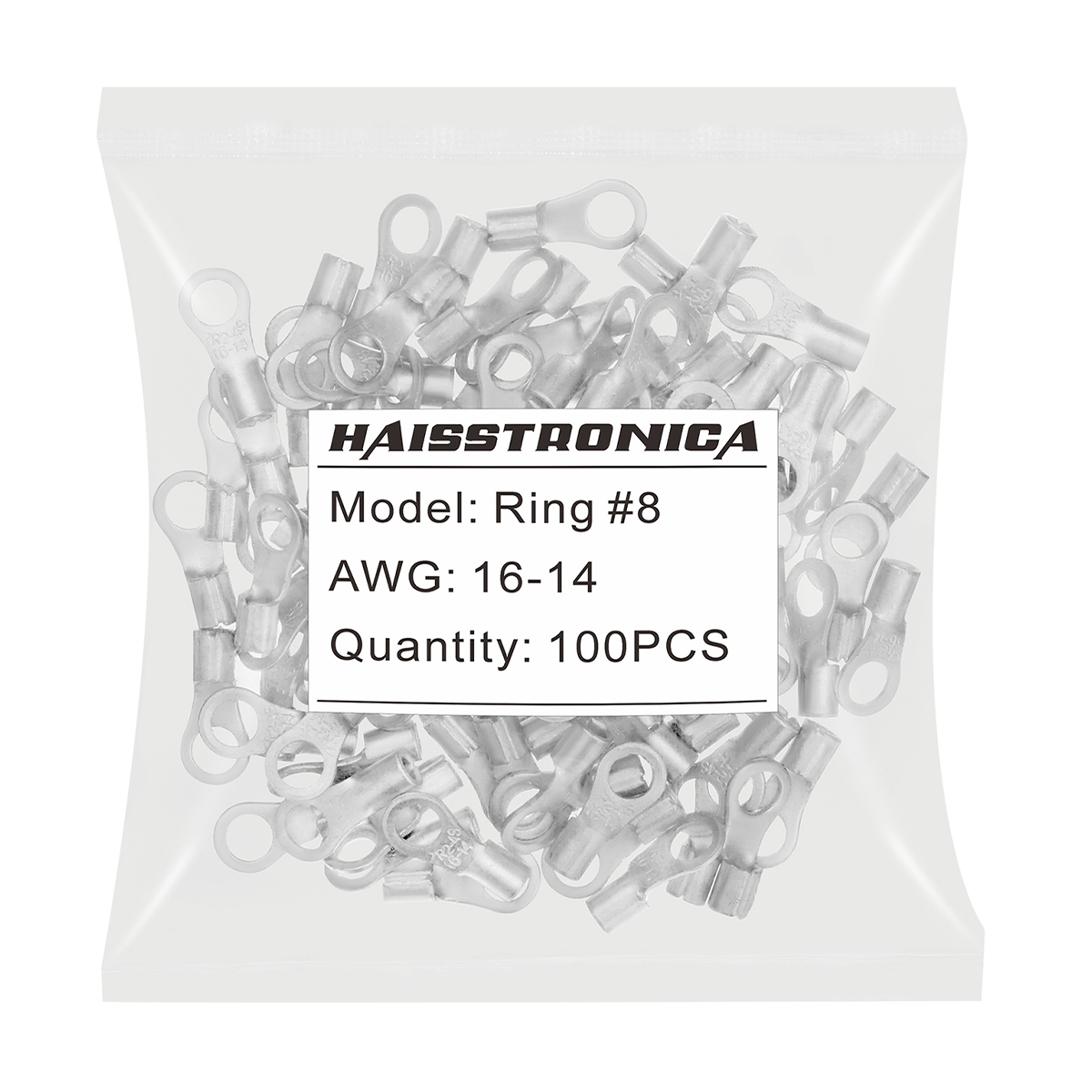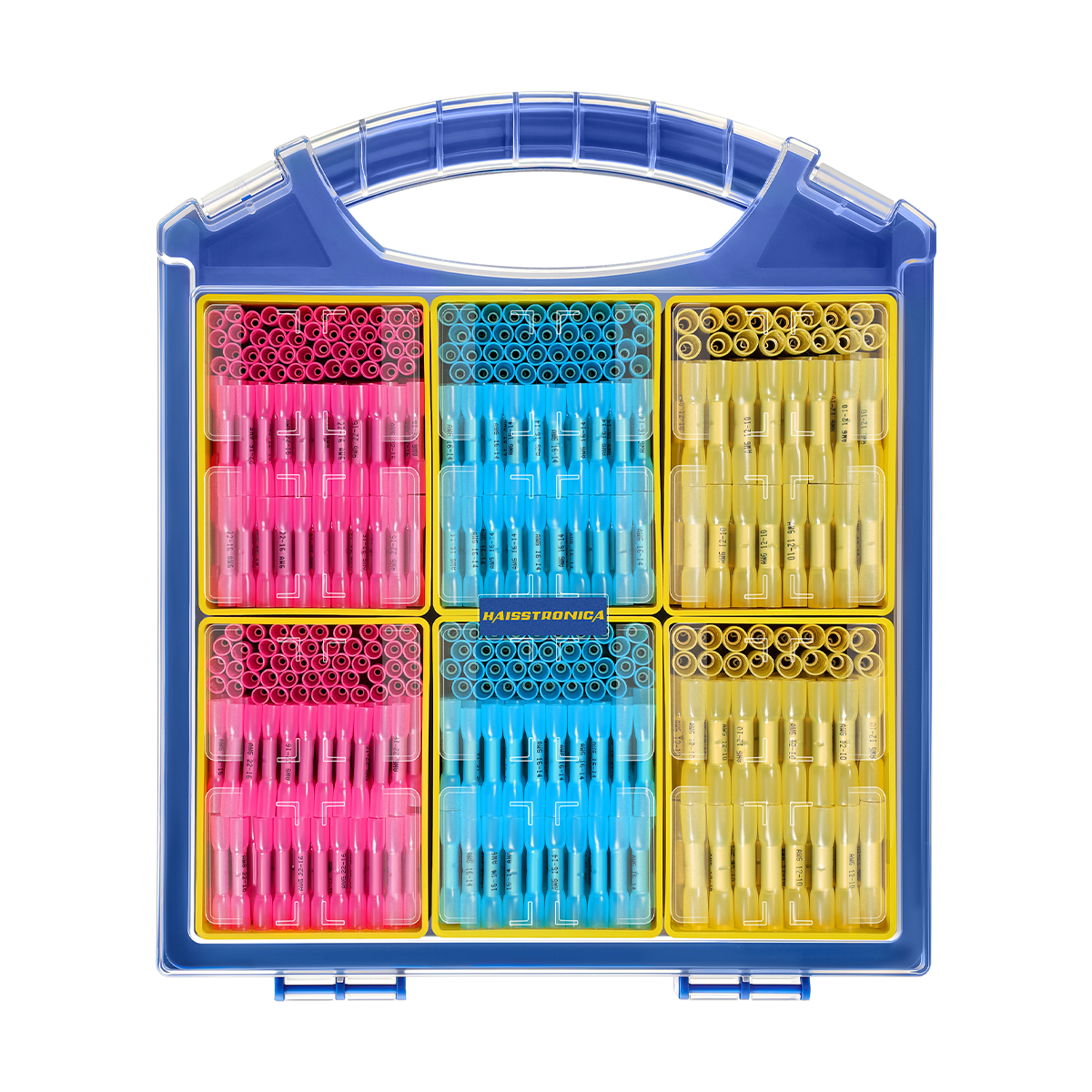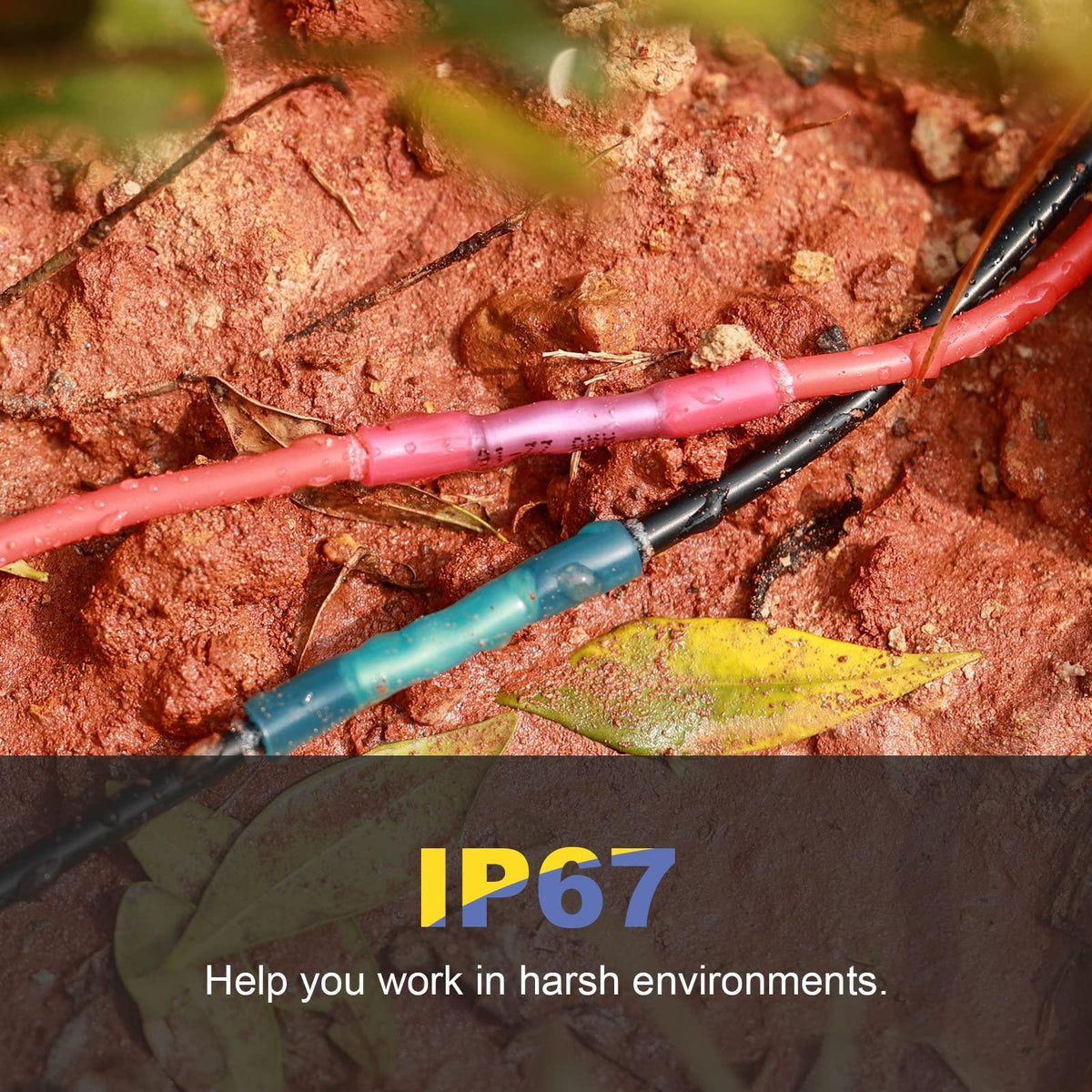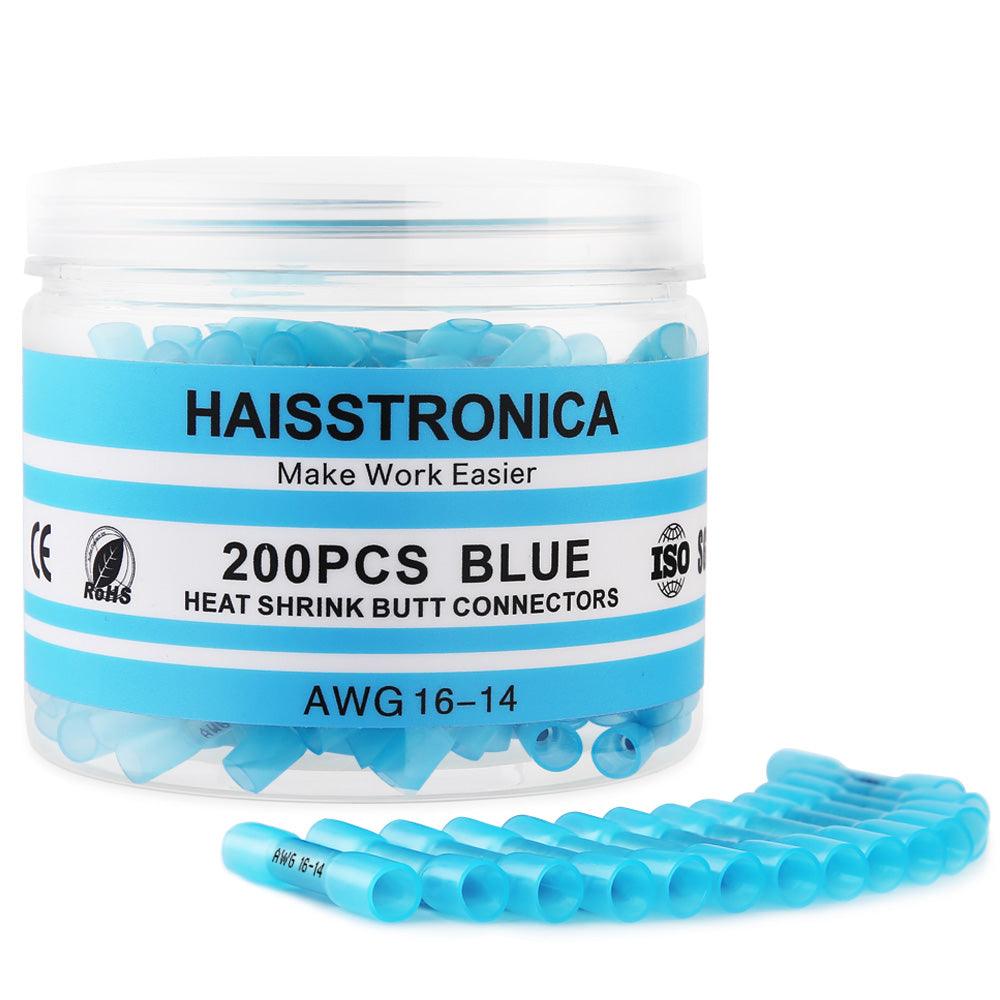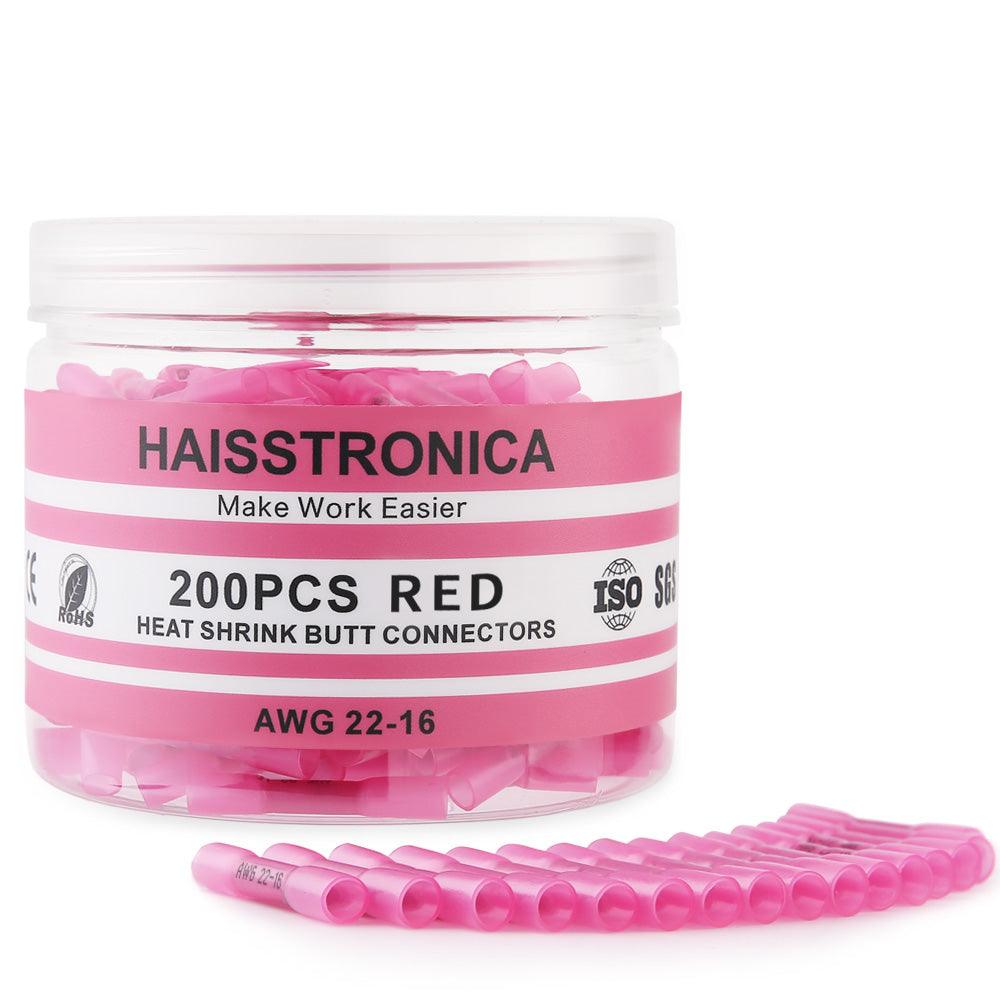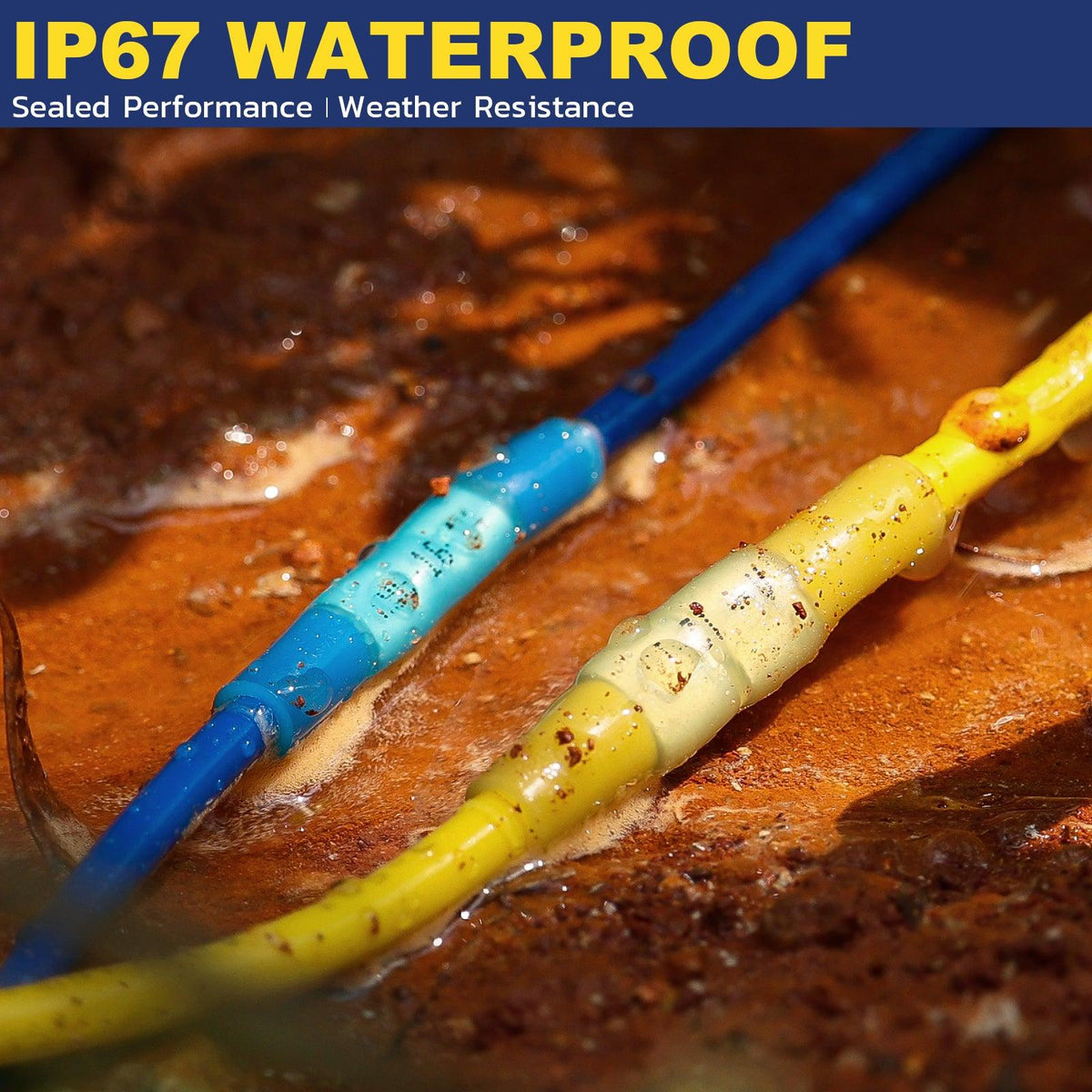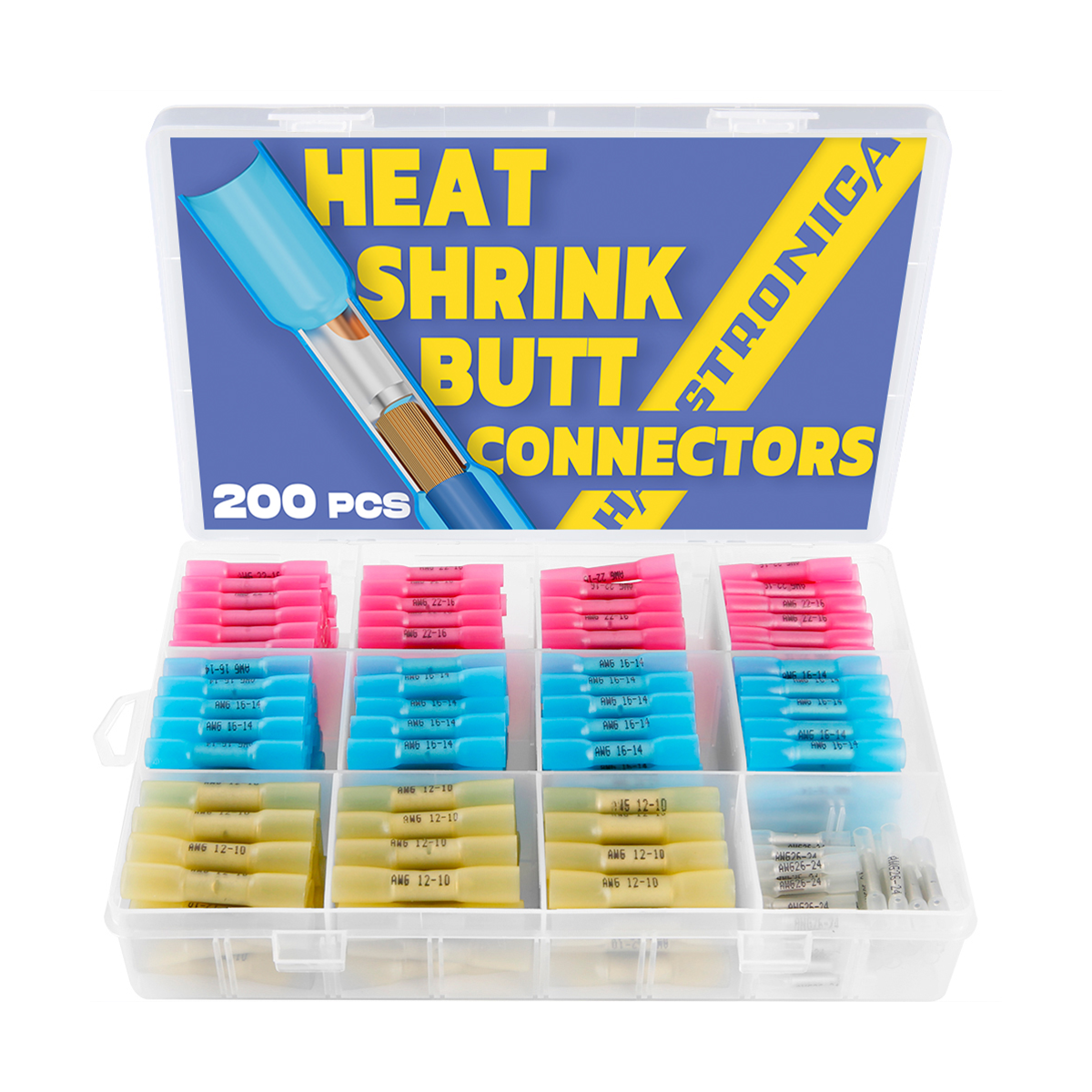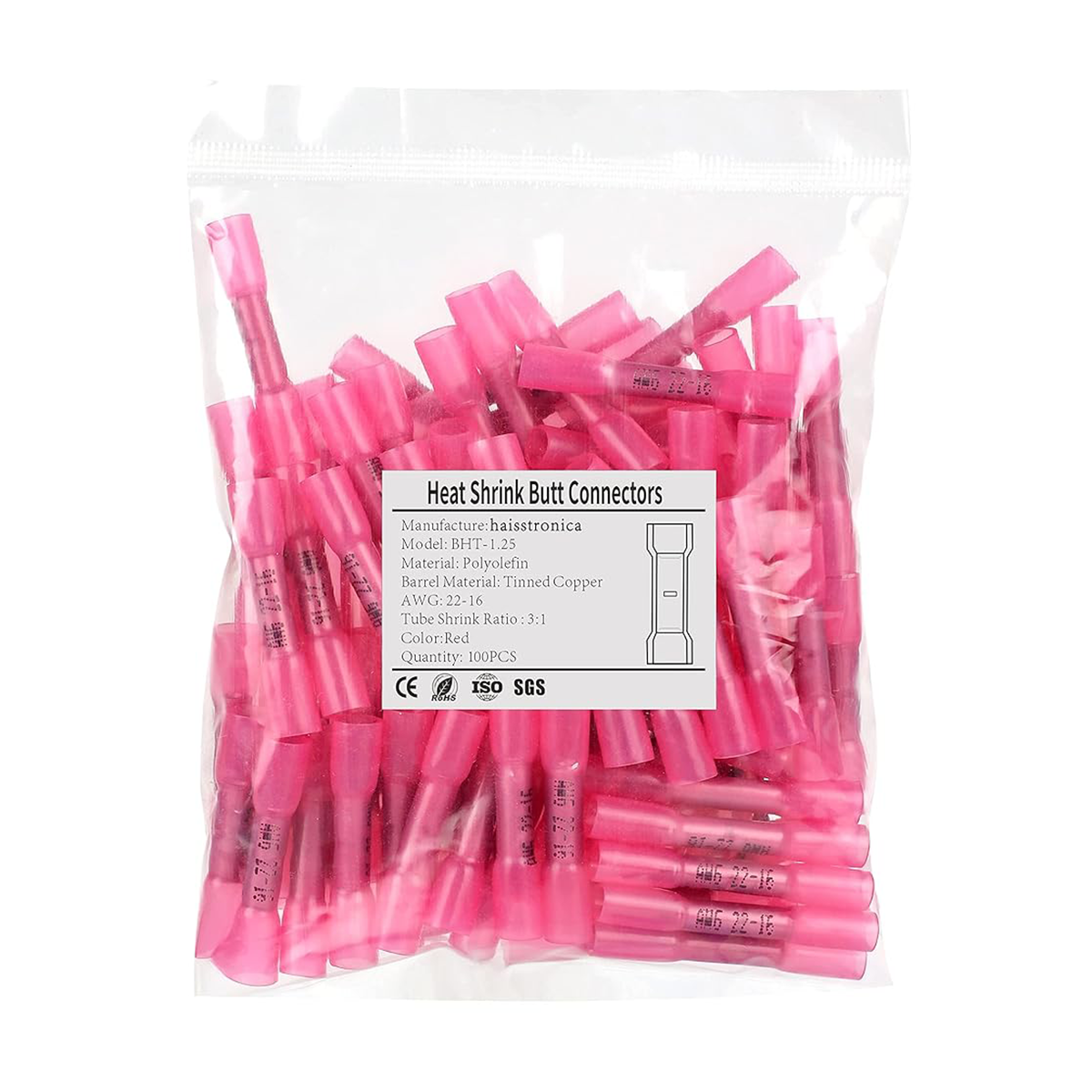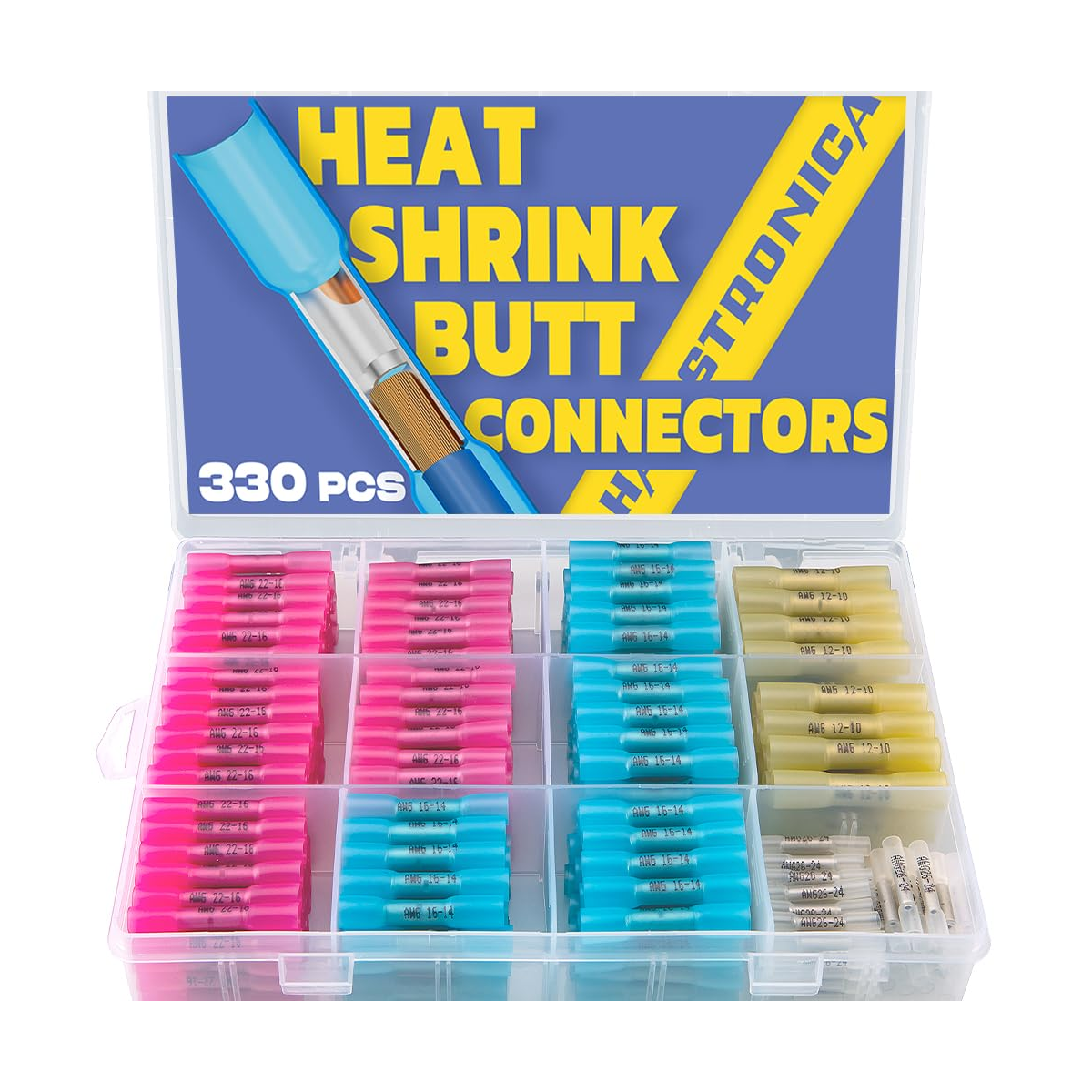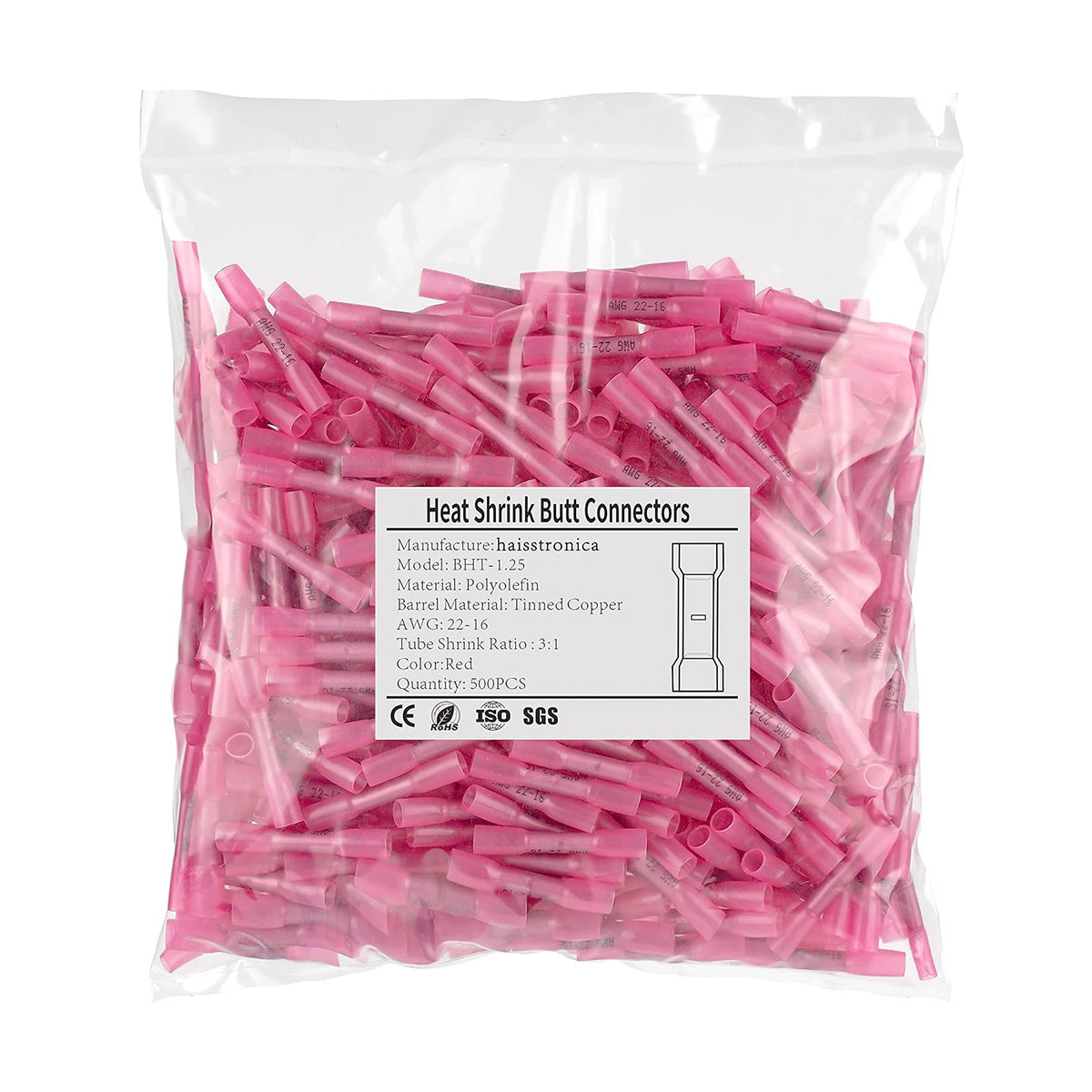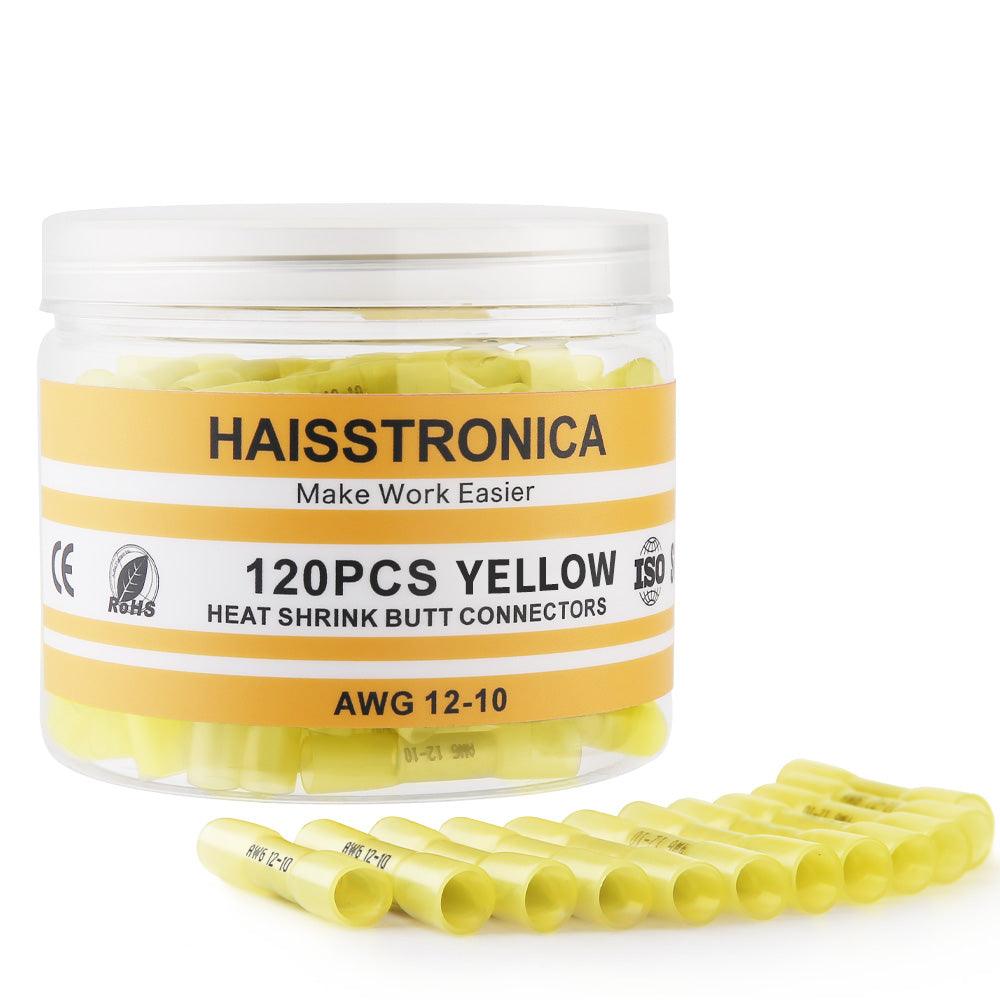Introduction
DIY home wiring might seem straightforward, but hidden dangers lurk behind walls and junction boxes. Many homeowners unknowingly create electrical hazards by using improper splices or leaving wires exposed. Small mistakes – a loose wire here, some electrical tape there – can lead to serious risks like electrical fires and shocks. Below are five hidden dangers of DIY wiring and how using proper butt connectors (especially heat shrink butt connectors) can prevent them:
-
Loose Wire Connections & Arcing: A poorly twisted or loose wire splice can develop high resistance and overheat. Such a connection effectively becomes a heating element, potentially sparking an electrical fire. This kind of fault often doesn’t trip a breaker, making it a hidden fire hazard.
-
Exposed Splices & Shock Risk: Improperly insulated joins (or simply wrapping wires with tape) can come undone, exposing live wires. This leads to shock hazards and short circuits if those wires touch metal or each other.
-
Moisture Ingress & Corrosion: Outdoor or damp-area wiring that isn’t sealed can let water in. Moisture corrodes conductors and can cause intermittent faults or shorts. In a matter of months, a non-waterproof connection can fail due to corrosion or cause a circuit to trip.
-
Overloading & Overheating Connections: Using the wrong size connector or wire gauge can result in overheating. For instance, a thin connector handling more current than it’s rated for will heat up and may melt. Undersized or low-quality electrical connectors can become the weak link that fails under load.
-
Vibration & Wire Strain: Wires in appliances, vehicles, or even within walls can vibrate or be pulled. Over time, a DIY taped joint can loosen with movement. Vibration and strain can break a weak connection, leading to flickering power or a sudden failure at a critical moment.
The Good News: Using the right wire connectors — specifically high-quality heat-shrink butt connectors — addresses all these issues. Haisstronica heat shrink butt connectors create a solid crimped bond and a sealed insulation around the splice, directly tackling the hidden dangers above. Next, we’ll define what butt connectors are and why they’re so effective for safe DIY wiring.
What Are Butt Connectors? (Definition)
Butt connectors (also called butt splices or butt terminals) are a type of wire terminal connectors used to join two wires end-to-end. They are short tubes (usually made of metal like copper) that crimp onto the stripped ends of wires, creating an inline splice. The term “butt splice” comes from the idea of butt-splicing two wire ends together inside the connector. When crimped correctly with a proper tool, the metal of the connector deforms around the wires, holding them tightly and ensuring low-resistance contact (essentially creating a cold-welded joint). This secure mechanical bond means the wires won’t easily pull apart or develop high resistance over time.
Modern butt connectors come with insulating sleeves. Basic insulated butt connectors use plastic (vinyl or nylon) tubing to cover the metal barrel. More advanced heat shrink butt connectors (sometimes written as heatshrink butt connectors) have a special polyolefin shrink tube sleeve lined with adhesive. After crimping the connector onto the wires, you apply heat to shrink the tubing. The adhesive inside melts and seals the connection, making it waterproof and protected from corrosion. The result is a heat-shrinkable butt connector that completely insulates the splice and keeps out water, dirt, and air. In essence, heat shrink connectors turn a simple crimp into a sealed, waterproof electrical butt splice.
It’s worth noting that butt connectors are color-coded by size for different wire gauges. For example, red butt connectors typically fit 22–16 AWG wires, blue butt connectors fit 16–14 AWG, and yellow butt connectors fit 12–10 AWG. These colors follow industry standards, making it easy to choose the right connector for your wire size (no guesswork needed). Some kits even include white butt connectors for very small wires (26–24 AWG). Each size ensures a snug fit and proper crimp around the wire – using the wrong size can lead to a loose connection or a wire that doesn’t fully crimp, which is dangerous. In other words, butt connector sizes must match the wire gauge to prevent the very hazards we listed earlier.
In summary, a butt connector is a crimp connector used to join wires permanently, providing both mechanical connection and electrical continuity. High-quality versions like Haisstronica’s heat shrink butt connectors use tinned copper barrels for excellent conductivity and have adhesive-lined shrink tube butt connectors insulation for a waterproof, vibration-resistant seal. These electrical connectors with heat shrink give you a reliable splice that mitigates loose wires, moisture, and strain – exactly what you want for safe DIY wiring.
How to Use a Butt Connector (Step-by-Step Guide)
Using butt connectors is straightforward, but doing it properly is crucial for a safe, long-lasting connection. Always begin by turning off power to the circuit you’re working on. Once that’s done, you’re ready to splice wires. How to use a butt connector: just follow these simple steps:
-
Strip the Wires: Remove about 1/4 inch (6 mm) of insulation from each wire end. The exposed conductor should be clean and undamaged. (Tip: Use a proper wire stripper tool to get a neat strip without nicking the copper.)
-
Select the Right Connector: Choose a butt connector that matches your wire gauge. For example, use a red connector for small wires or a yellow connector for heavier gauge. The wire should fit snugly into the connector barrel. Using the wrong connector size can cause a poor crimp or a loose fit, so double-check the AWG markings if present.
-
Insert the Wires: Fully insert the stripped end of each wire into the connector from opposite sides. The wires should overlap in the middle of the barrel. Ensure no exposed copper is sticking out past the connector’s ends – all bare wire must be inside the metal barrel.
-
Crimp the Connector: Using a crimping tool (preferably a ratcheting crimper designed for insulated terminals), crimp the metal barrel in the center. Squeeze firmly so that the connector bites into the wires. A proper crimp will deform the barrel around the wire for a solid mechanical bond. Do not use pliers or teeth – a dedicated crimp tool ensures uniform pressure. (Haisstronica notes that a proper crimping tool is recommended for reliable crimps.) After crimping, give each wire a gentle tug to confirm it’s locked in and won’t pull out.
-
Heat the Shrink Tubing: (If you’re using heat shrink wire connectors) apply heat evenly around the connector using a heat gun. The tubing will shrink down around the wire, and you’ll see a bit of adhesive ooze out at the ends when it’s fully sealed. Do not overheat or burn the tubing; keep the heat gun moving until the connector’s sleeve has uniformly shrunken and the adhesive has flowed. The finished splice will be neatly covered by the now-shrunken tubing. (Avoid using an open flame like a lighter, as it can char the insulation; a heat gun or even a hair dryer on high is safer for heat shrinking wires.)
-
Let It Cool & Inspect: Allow the connector to cool naturally for a minute. Inspect the connection: the tubing should be tightly gripping the wire insulation with no gaps, and you should see a continuous line of adhesive at the ends indicating a good seal. If anything looks loose or uneven, do not tug on the wires; instead, reheat a bit or redo the connection with a new connector if needed.
By following these steps, you ensure a safe and reliable splice. A correctly crimped and shrunk connector will fix broken wires just like a professional repair, giving you a durable connection every time. Also, remember to route your wires neatly and consider strain relief (like using cable ties or clamps) if the wire could be tugged in the future. With practice, crimping butt connectors becomes a quick and confidence-inspiring task – you’ll know you’ve made a solid connection that won’t be a hidden hazard later.
Application Scenarios for Butt Splice Connectors
Where and when should you use butt splice connectors? The short answer: anytime you need to join wires securely end-to-end. Here are some common application scenarios and why heat shrink butt connectors excel in each:
-
Automotive & Vehicle Wiring: Cars, trucks, motorcycles, trailers – they all vibrate and are exposed to temperature changes, moisture, and grime. In these conditions, connections need to be extra secure. Automotive butt connectors (especially marine grade heat shrink types) are ideal for repairing car wire harnesses, installing car stereos, or adding trailer lights. The heat-shrink adhesive forms a vibration-resistant bond that won’t come loose under the hood. Plus, the waterproof seal keeps out dirt, oil, and road salt, preventing corrosion in the splice. For example, if you’re fixing a broken tail light wire, a butt connector with heat shrink will ensure the splice stays tight mile after mile, whereas a simple twist-and-tape could shake loose on the first bumpy road. Many auto enthusiasts consider crimp wire connectors with heat shrink a must-have for any vehicle electrical repair.
-
Marine & Outdoor Applications: Boats, docks, outdoor lighting, and landscape irrigation systems have one big challenge: water. In marine or rainy environments, waterproof butt connectors are crucial. Haisstronica’s marine butt connectors use adhesive-lined shrink tubing to achieve an IP67 waterproof seal. That means you can use them in boat wiring (for fish finders, bilge pumps, trailer lights, etc.) or for outdoor garden lighting, and they’ll keep moisture out of the connection. Marine heat shrink connectors are typically made with tinned copper (to resist saltwater corrosion) and thicker insulation. If you have an outdoor splice (say repairing an underground sprinkler wire or garden light), using a regular connector or wire nut could let moisture in and fail. In contrast, a heat shrink butt splice will seal the wires from rain and condensation. Always choose wire connectors with heat shrink for any wiring exposed to the elements – it’s cheap insurance against future failures.
-
Home Electrical Repairs: Inside the home, you’ll often encounter situations that need a secure wire splice. Common examples include repairing a frayed appliance cord, extending wires in a light fixture or ceiling fan, or fixing a broken wire in a lamp. Electrical butt connectors can be used in these cases to make a neat inline splice that’s far more secure than just twisting wires together. For instance, if you cut a cord by accident, you can splice it back with a butt connector and heat shrink for a safe repair (though always ensure such splices are in an accessible junction box if per code). Quality heat shrink electrical connectors are UL listed for up to 600V and 105°C, meaning they meet the safety standards for household electrical systems. This makes them suitable for indoor wiring fixes, provided you use them correctly and within electrical code guidelines (turn off power, use a junction box where required, etc.). Many electricians stick to wire nuts for in-wall splices, but butt splices can be just as reliable if not more so, because once crimped and shrunk, the connection is solid and won’t loosen. They’re especially handy for specialty repairs like connecting thermostat wires, alarm system cables, or speaker wires in home theaters, where a wire nut might be too bulky or prone to vibrating loose.
-
DIY Electronics & Hobby Projects: From RC cars and drones to wiring up LED strips or custom PC mods, butt connectors are useful for any low-voltage wiring where you want a strong joint without soldering. They let you connect wires quickly and with minimal tools. For example, hooking up a LED light bar on a DIY solar setup – use butt connectors to join the wires, and you’ll have a stable connection that’s easier and cleaner than solder plus tape. The butt splice connector essentially becomes a part of your project’s wiring, offering reliability without the need for advanced skills. In robotics or maker projects, using a wire butt connector can save time and ensure that if you tug a wire, it won’t just pop off (as can happen with a hastily soldered joint with no strain relief).
-
Industrial and Other Uses: In industrial settings or machinery, butt splices are used with heavier gauges and often non-insulated butt connectors (followed by separate heat shrink tubing). For example, joining 8 AWG or 4 gauge battery cables in a backup power system might use a battery cable butt connector (a large uninsulated crimp sleeve) covered by heavy-duty heat shrink. These provide a very robust connection for high-current wires. Heat shrink butt connectors typically cover from about 26 AWG up to 10 AWG. For larger wires, you can still use butt-splice techniques but may need special connectors and a powerful crimper. Nonetheless, the principle is the same – a crimped connector with heat shrink provides a safe, strong join. Always choose connectors rated for the wire size and environment: e.g., use marine-rated connectors for a boat, high-temperature connectors near engine bays, and so on.
In all these scenarios, the key advantages of using butt connectors (especially the heat-shrink type) are security, insulation, and durability. The splice becomes as reliable as the original wiring, giving you peace of mind. With the right connector, you prevent the hidden dangers of DIY wiring: no loose wires to spark, no water intrusion, no accidental unravelling. Whether you’re a weekend handyman or a seasoned mechanic, having a kit of butt splices in your toolbox means you’re ready to tackle wiring repairs the correct way.
Buying Guide: Choosing the Right Butt Connectors
Not all butt connectors are created equal. When shopping for connectors (or a wire connectors kit), consider the following factors to get the best, safest results:
-
Connector Type – Heat Shrink vs. Vinyl/Nylon: We highly recommend heat-shrink butt connectors for most projects because of their added protection. Heat shrink connectors have a dual-wall (usually nylon outer plus adhesive-lined inner) design that seals the splice when heated. They are often labeled marine grade or waterproof butt splices. In contrast, standard vinyl or nylon insulated connectors are cheaper but only provide insulation, not sealing. If your wiring will be in a dry, static location (like indoor behind an outlet, in a lamp, etc.), vinyl-insulated butt connectors electrical can work. But for any environment with moisture, vibration, or critical reliability needs, go for heat shrink. As noted earlier, a connector without a seal can corrode or fail in damp conditions. Using an indoor-only connector outside is a common mistake that leads to premature failure. Therefore, choose heat shrinkable butt connectors (often marked 3:1 shrink ratio, adhesive-lined) whenever possible – the slight extra cost is worth the peace of mind.
-
Wire Gauge and Size: Always match the connector to your wire gauge. Connectors are typically sold by AWG ranges, and often color-coded: red (22–16 AWG), blue (16–14 AWG), yellow (12–10 AWG), etc., as described. Using a connector too large will result in a weak crimp (wires may slip out), while one that’s too small won’t fit the wire at all. Check the packaging or product description for the AWG range. If in doubt, buy an assorted butt connector kit that includes all sizes – these kits are great for DIY use because you’ll have the right connector on hand for any job. For example, Haisstronica’s Heat Shrink Butt Connector kit comes with hundreds of red, blue, yellow, and even white connectors in a sturdy case, covering wire sizes AWG 26–10 for versatile use. Having a wire connectors kit like that means you can tackle automotive, marine, or home wiring all with one set of connectors. Always err on the side of using the correct size; forcing a mismatch is asking for trouble (loose connection or difficult crimp).
-
Material and Build Quality: Look for connectors made with tinned copper barrels and durable insulation. The metal barrel is the conductive part that carries current – copper is the best common conductor and tin plating helps prevent corrosion. Cheap off-brand connectors might use thinner metal or even aluminum, which can break or heat up under load. Haisstronica’s connectors use 99.9% pure tinned copper with a thick wall (the large yellow splices have ~1.0 mm wall thickness) for maximum conductivity. This means they can carry heavy current (up to ~48 A for a yellow 12 AWG connector) without overheating. Best butt connectors will advertise compliance with standards like UL, CSA, or CE, which indicates they’ve been tested for safety. In fact, UL-listed heat shrink butt splices are rated to handle household electrical loads (up to 600–1000 V and 105 °C) safely, so quality matters! Also, check that the insulation is thick and durable. Nylon is more flexible and crack-resistant than cheap PVC/vinyl. The adhesive in heat shrink connectors should be evenly applied and visible when shrunk – that’s what forms the waterproof seal.
-
Environmental Rating (Marine, High-Temp, etc.): If you know your application has special demands, choose connectors that meet them. Marine butt connectors are designed to resist water and salt – they typically have a higher shrink ratio tubing with more adhesive, and tinned copper to avoid corrosion. If you’re doing engine bay wiring in a car, look for high-temperature heat shrink terminals that can handle the heat (some are rated 125 °C or higher). For outdoor underground wiring, ensure the connectors are labeled waterproof/weatherproof. Using connectors not suited for the environment can cause failures as discussed (e.g., an indoor connector outdoors will corrode quickly).
-
Specialty Connectors: Butt splices mostly join two wires, but there are also 3-way butt connectors (for joining three wires in a T or Y shape) or butt splice connectors with solder (solder-seal connectors that combine solder and shrink tubing). There are also bullet connectors (male-female bullet-shaped terminals) which are used for quick disconnects, not permanent splices. Be sure you’re getting the right type – for permanent joins, stick to butt splices. If you need a quick disconnect in a line, a bullet or spade connector might be what you want instead. Some kits include those as well, but they serve a different purpose (for example, connecting a car speaker where you might want to unplug it later, a bullet connector is used; to extend a wire permanently, a butt connector is used).
-
Quantity and Kit Value: If you’re doing more than one or two splices, it’s often economical to buy a butt connectors kit with multiple pieces. Haisstronica (and other reputable brands) offer kits ranging from 60pcs up to 300pcs or more, often with multiple sizes included. This is cost-effective and gives you spares in case you need to redo a crimp. Kits also sometimes come with a crimping tool included. If you’re starting from scratch, consider a kit that has a ratcheting crimper and assorted connectors – this ensures you have the right tool and a variety of connectors on hand. A good crimp tool makes all the difference in achieving a proper crimp. As a bonus, having connectors organized in a box by size/color is much nicer than fishing loose connectors out of a bag.
By paying attention to these factors, you can pick the best heat shrink butt connectors for your specific project. In short, choose marine grade heat shrink versions for any critical or outdoor jobs, match the size to your wire, and don’t skimp on quality – the connector is a small part, but it has a big job of keeping your electrical connection safe. Brands like Haisstronica are known for their high quality in the community (they’re often pitted against hardware store brands and come out on top), so using their connectors is a smart choice for DIYers who want professional-grade results.
Pro Tip: Along with your connectors, invest in a decent wire stripping and crimping tool. Many connection failures are actually due to poor crimping (either not enough force or too much, cutting the wire). A ratcheting crimper ensures you apply the right pressure consistently. Also, after crimping and shrinking, give the connection a quick test with a multimeter for continuity and maybe a gentle wiggle test. Catching a bad crimp before you button everything up will save you headaches down the line.
FAQ (Frequently Asked Questions)
Q1: What are butt connectors and what are they used for?
A: Butt connectors are small tubular wire connectors used to splice two wires together end-to-end. They’re called “butt” connectors because they join the butt ends of wires. By crimping the connector onto the stripped wire ends, you create a secure electrical connection. Butt connectors are used in automotive wiring, home electrical repairs, electronics projects – essentially anywhere you need to join wires reliably. They differ from other terminals like ring terminals (which attach a wire to a screw post) or bullet connectors (which join/disconnect like plugs). A butt connector is for a permanent in-line splice. People choose butt connectors when they want a strong, low-resistance joint without soldering. Modern heat shrink butt connectors also provide an insulated, waterproof seal, making them extremely versatile for both indoor and outdoor wiring.
Q2: How do I crimp and use a butt connector correctly?
A: To use a butt connector, follow these steps: strip the wire ends, insert them into the connector, crimp the metal barrel, then (if it’s a heat shrink connector) apply heat to seal it. Make sure to use the right size connector for your wire and a proper crimp tool. A good crimp will hold the wire so it can’t pull out and will essentially “cold weld” the wire to the connector. After crimping, heat shrink connectors need a heat gun (or another heat source) to shrink the tubing and melt the adhesive, which insulates the connection completely. When done, the splice should be tight and protected – effectively as if the wires were one continuous wire. For a visual guide, you can watch a tutorial like “How to use heat shrink butt connectors and ratcheting crimper” on YouTube (which demonstrates the crimp-and-shrink process step by step). Using a crimping butt connectors method is quick and yields a professional result. If you don’t have a heat gun, you can use a hair dryer on high or a lighter carefully (though open flame is risky and can scorch the tubing). Always let the connector cool before checking the connection. Once cooled, give it a gentle tug test – a properly used butt connector wire splice will be very strong.
Q3: Are heat shrink butt connectors really waterproof? Can I use them outdoors or on a boat?
A: Yes, heat shrink butt connectors provide a waterproof seal if they have an adhesive-lined (dual wall) shrink tube. When you heat them, the adhesive melts and fills any gaps, preventing water ingress. A fully shrunk connector is often rated to IP67 or similar, meaning it can withstand being submerged briefly and is completely sealed against dust and water. This makes them ideal for marine use (boats, jet skis), outdoor lighting, sprinkler systems, or any wiring exposed to rain or humidity. In fact, marine-grade butt connectors are specifically built for this purpose with even more robust adhesive. Keep in mind, the rest of the wire (the insulation and any entry points) should also be waterproof for the whole system to be watertight – the connector will seal the splice itself. The image in the earlier section showed a butt splice under water that remained perfectly dry inside due to the heat shrink seal. So, whether you’re wiring trailer lights that get dunked in water or repairing garden lights, these connectors will hold up. Just remember to shrink them fully – you should see a bit of clear adhesive ooze out at the ends when it’s properly sealed. If you do it right, electrical connectors with heat shrink can even be used in marine engine compartments and bilges with great success (they’re vibration-proof and corrosion-proof as well, which is why many boat owners and RV enthusiasts love them).
Q4: Can I use butt connectors for household wiring behind walls or in outlets?
A: It depends on the connector and local electrical code, but generally yes, if the connectors are UL listed for that use and placed in an appropriate junction box. High-quality heat shrink electrical connectors (like Haisstronica’s) are UL and CSA certified and rated for up to 600 V, 105 °C, which covers standard residential AC wiring needs. This means electrically they are safe for house wiring. However, any splice in home wiring must be enclosed in a junction box (never buried in a wall without access). So if you have to repair a wire behind drywall, you’d install a junction box, make the butt splice connections inside it, and cover it with a blank plate. Many electricians tend to use twist-on wire connectors (wire nuts) for in-home splices, but a properly crimped and shrunk butt connector can be just as secure – and it has the advantage of being a longitudinal inline splice, which can be easier to fit in tight spaces. Always check your local code: in some areas, inspectors prefer certain types of connectors. But since heat shrink butt connectors are UL-listed and code-compliant, there is generally no prohibition on using them for permanent wiring. Just treat them as you would any splice: enclose them safely. They’re actually a great solution for certain fixes – for example, repairing a nicked wire in Romex cable: you can crimp a butt splice to bridge the damage, rather than pulling a whole new cable, then put that section in a junction box. In summary, yes you can use butt connectors in home electrical work, provided you use rated connectors and follow standard safety practices. When in doubt or for major work, consult a licensed electrician.
Q5: Is it better to solder wires or use butt connectors?
A: This is a common question among DIYers. Both methods can create a good electrical connection, but butt connectors (crimping) have some advantages in many situations. Crimped connectors form a strong mechanical bond and, when using heat shrink types, also provide strain relief and sealing. Soldering, on the other hand, can create a brittle point at the end of the solder joint if not supported (wires can break there under vibration). In fact, in automotive and marine industries, crimp connectors are often preferred because they hold up better to vibration without fatiguing. A properly crimped connector essentially “cold welds” the wires together, and the surrounding sleeve (especially if heat-shrunk) keeps everything in place and insulated. Soldering is fine for bench electronics or when you need to join odd connections, but it requires more skill and tools (soldering iron, solder, flux) and isn’t as quick for multi-strand heavier gauge wires. Heat shrink butt connectors eliminate the need for solder in most wire joining cases – you just crimp and heat, and you’re done. They are designed to create a secure connection that is gas-tight (no oxygen = no corrosion), and the good ones have high pull strength (a crimped connector can often hold 150 Newtons or ~34 lb without the wire coming out!). Soldering a wire won’t hold that kind of mechanical force unless you also physically tie the wires or add strain relief. That said, both methods, if done properly, will electrically join wires. If you do solder, it’s recommended to also use heat shrink tubing over the joint to insulate it and provide some support. But in terms of ease and consistency, butt connectors are typically better for most DIYers – you get a reliable result without needing to be an expert at soldering. Many professionals use crimp connectors exclusively for wiring repairs on vehicles and appliances because of these reasons. In short: for most applications, crimping with a butt splice is equal or superior to soldering, especially when you use a heat shrink connector that provides a waterproof, strain-relieved finish.
With the right connectors and know-how, DIY wiring can be done safely. You can avoid the hidden dangers of loose wires, shocks, and fires by simply making solid connections. Butt connectors with heat shrink give you confidence that each splice is secure, insulated, and protected for the long term. Happy wiring, and stay safe!
Ready to Secure Your Wiring? (Purchase Entry)
Don’t take chances with shoddy splices. Using high-quality butt connectors is one of the best ways to ensure your DIY electrical work is safe and long-lasting. If you’re looking for a reliable solution, Haisstronica’s Heat Shrink Butt Connectors have you covered. This all-in-one kit comes with assorted sizes (AWG 22-10) of butt splices that are marine grade, adhesive-lined, and easy to crimp for professional results.
Equip yourself with the right connectors, and eliminate those hidden wiring dangers for good. Your home and vehicle electrical projects will be safer, more durable, and up to professional standards.
